These five days of camping were the highlight of this semester abroad so far! Our days were very long and full of fun activities. The trip was absolutely amazing but there is no better way to describe my adventures other than through a lot of pictures from the national park and other educational opportunities.
Day 1: Tarangire National Park safari and animal count transects
On the first day, we visited Tarangire National Park to appreciate the wildlife and contribute towards SFS’s running data collection on animal counts and vegetation type during our transects. We were usually a group of 5-8 in the safari car and each of us had a different task that contributes towards the data collection process. The tasks included, spotting and counting the animals, identifying the species, their sex and behavior, keeping track of the vegetation type along each transect, and making sure there is a note-taker recording all this data. After gathering this data we were able to analyze when we returned to the classroom soon after this expedition.
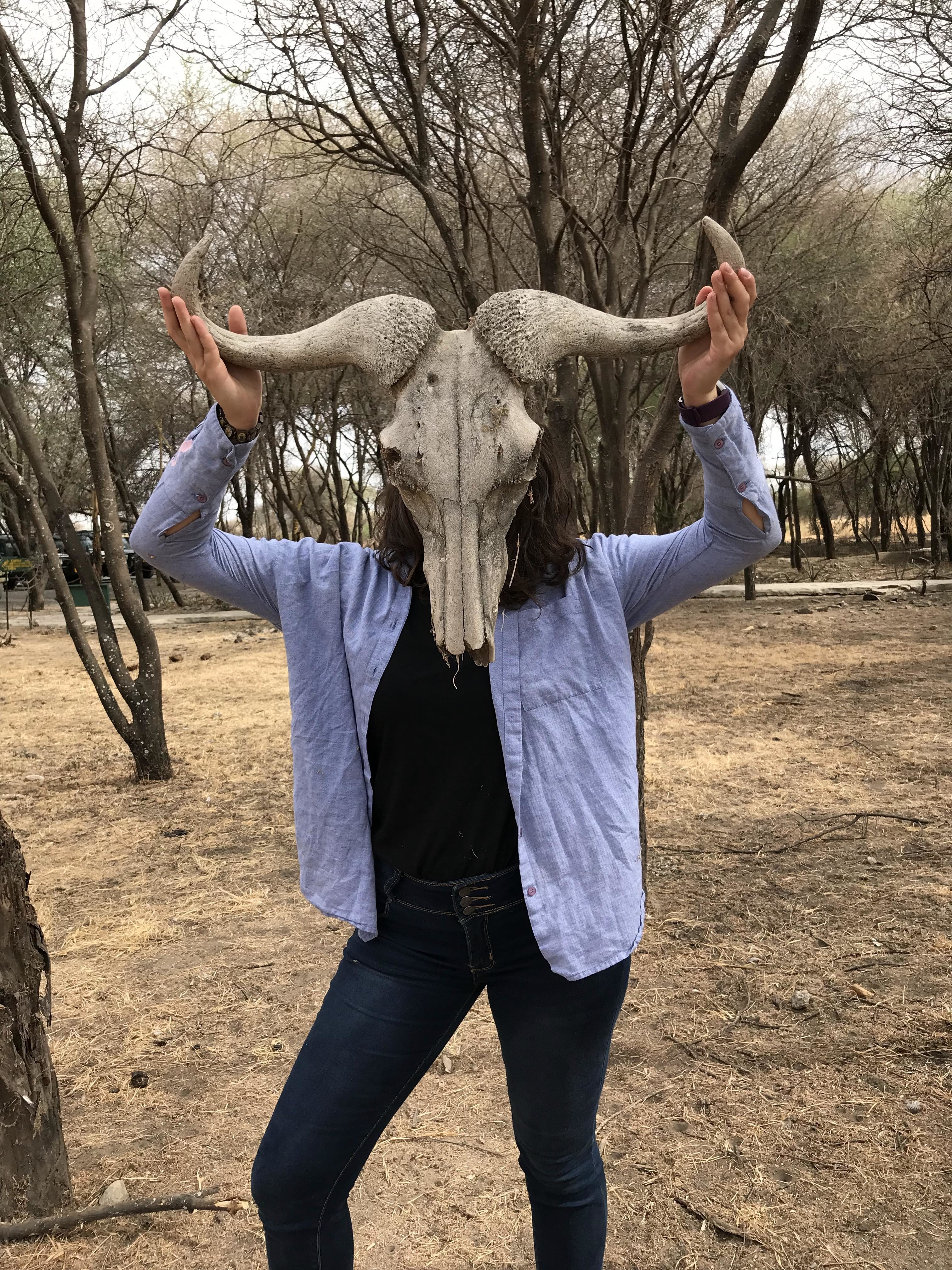 Me holding a wildebeest skull at the National Park
Me holding a wildebeest skull at the National Park
 You’re seeing what I saw through my binoculars. African Elephant (Tembo)
You’re seeing what I saw through my binoculars. African Elephant (Tembo)
 We were able to see a mom and its baby in their natural habitat
We were able to see a mom and its baby in their natural habitat
-fun fact: female elephants have a more sloped stomach than males. They also have a right angled head shape.
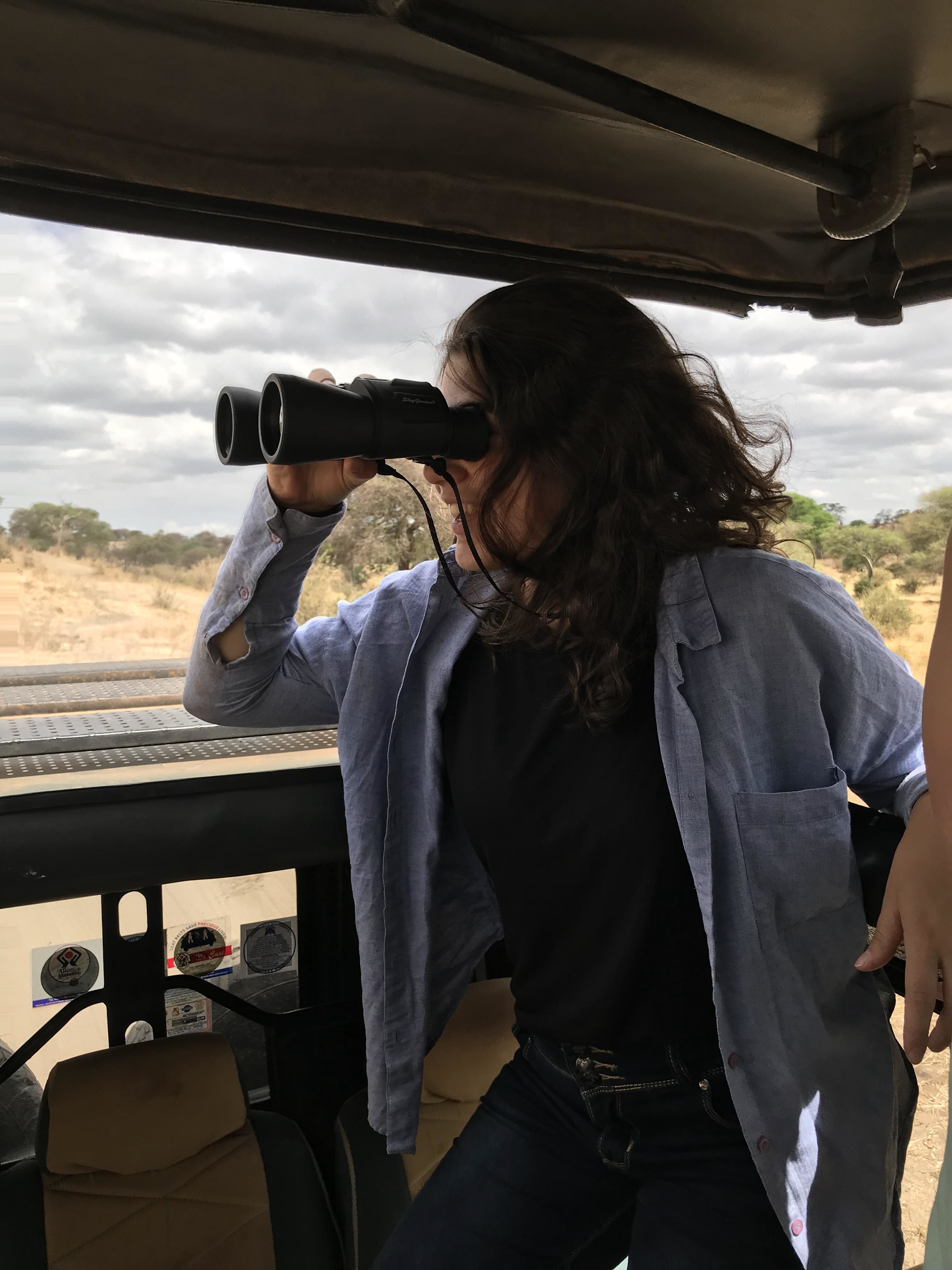 Spotting and counting animals in the national park for our research
Spotting and counting animals in the national park for our research
 So many plains zebras (pundamila) at Tarangire National Park
So many plains zebras (pundamila) at Tarangire National Park
 A male impala (swala pala)
A male impala (swala pala)
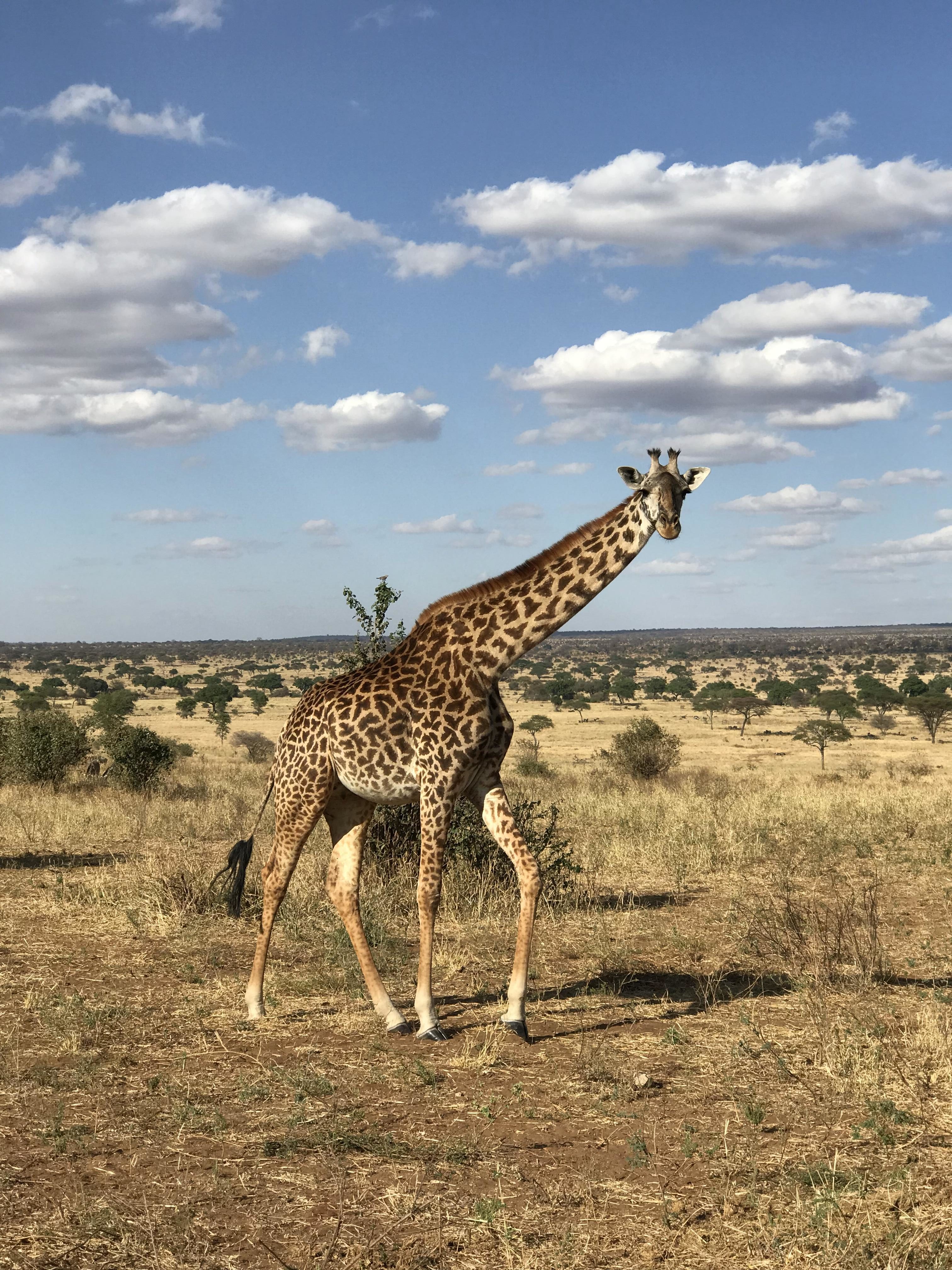 Maasai giraffe (twega) famous for their unique pattern
Maasai giraffe (twega) famous for their unique pattern
-fun fact you can tell that this a female giraffe because females are smaller and have horns covered with hair at the top
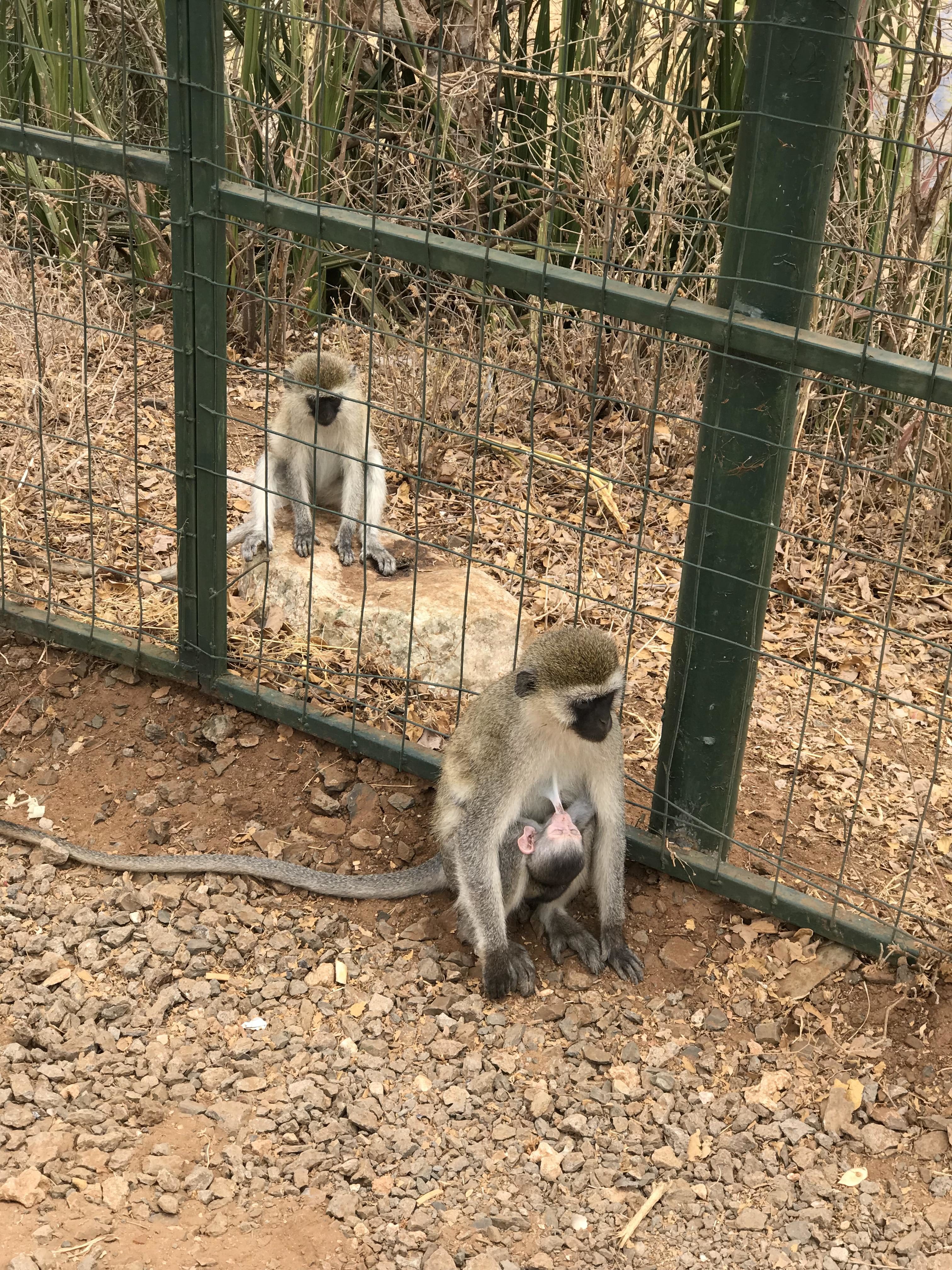 Vervet monkeys, mom feeding her cute baby
Vervet monkeys, mom feeding her cute baby
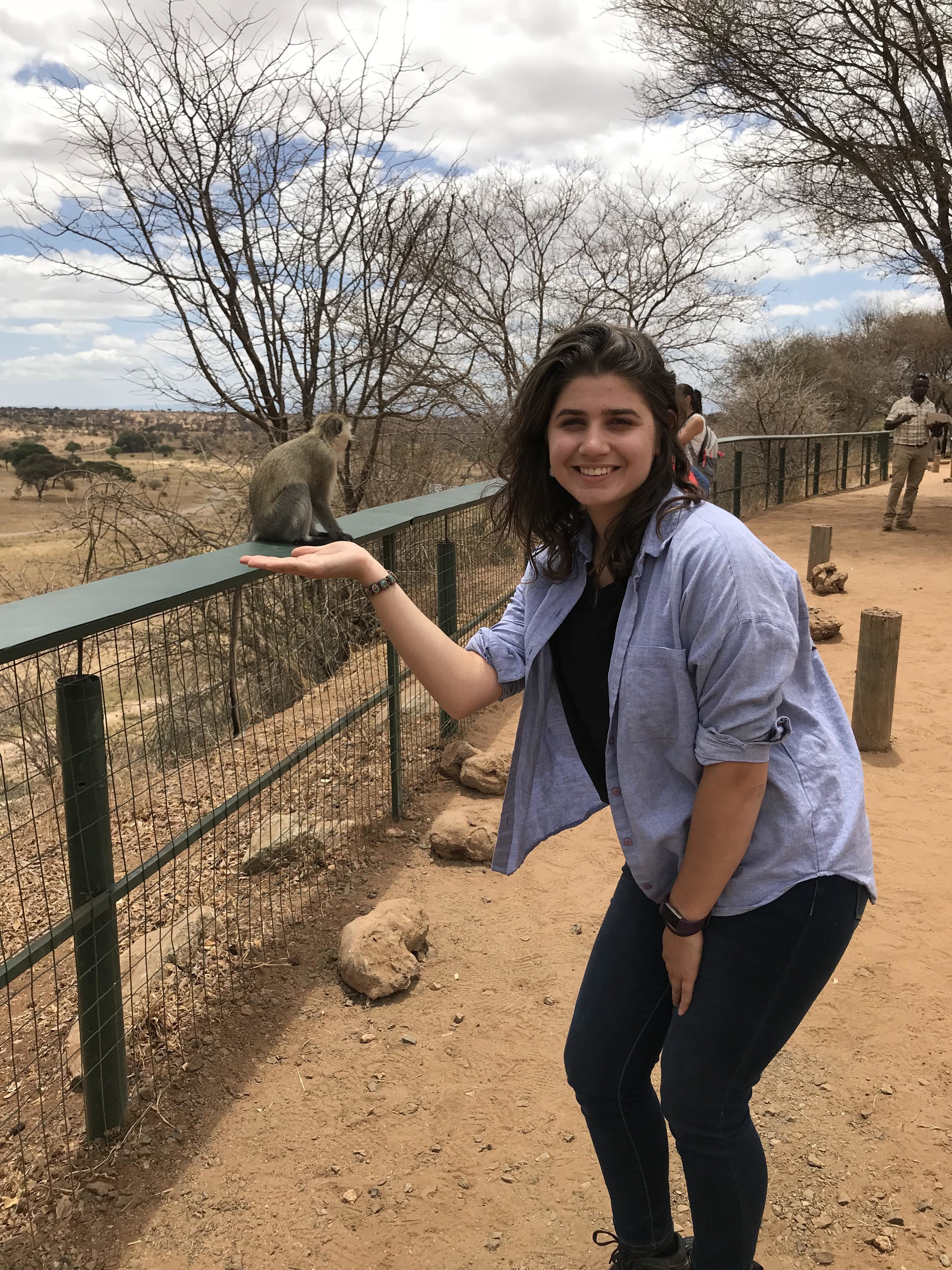 Our lunch break consisted of vervet monkeys stealing our food
Our lunch break consisted of vervet monkeys stealing our food
Day 2: Tarangire National Park safari and animal count transects AGAIN and guest speaker on lion research
The second day, we continued the transects of animal counts since the park is huge and to cover a lot of the area we need to do multiple transects a day.
For the second part of our day, we went outside the park to a research center where Dr. Kissui explained his research on lions. He focused on how they track them using GPS colors and how that helps in animal count and distribution studies on large carnivores. He mentioned the main limiting factors for his research was the price of such collars and the poaching occurring as lion retaliation along with bravery to the individual responsible for spearing that animal. A lot of conservation efforts are concentrated on these topics and there has been a reduction in such consequences but it is definitely still an issue among the Maasai community.
 We watched a lioness attempt to prey on an impala, AMAZING!
We watched a lioness attempt to prey on an impala, AMAZING!
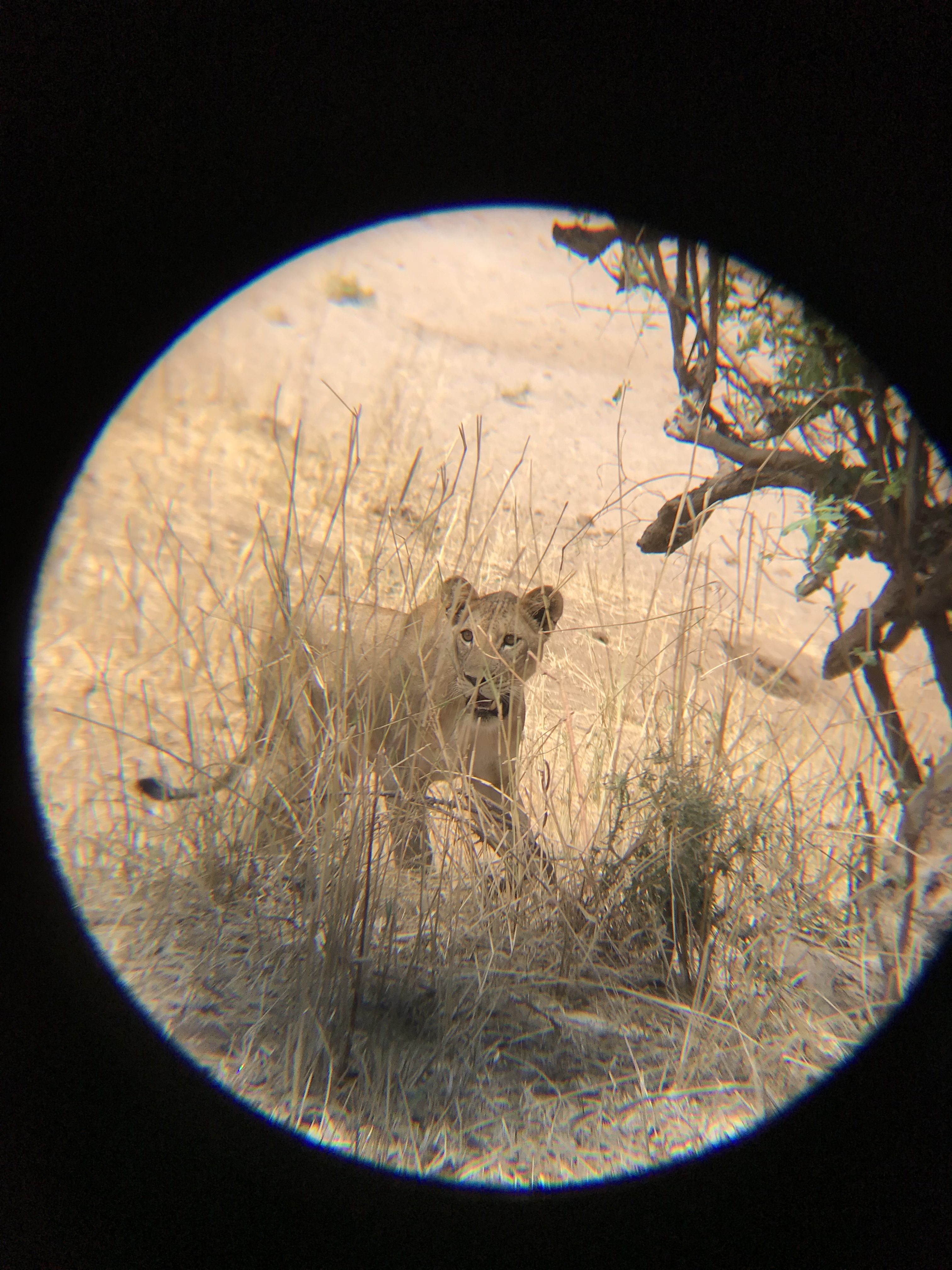 A closer look at this lioness
A closer look at this lioness
 We tried to take a selfie with the lioness in the back but we clearly failed at showing it
We tried to take a selfie with the lioness in the back but we clearly failed at showing it
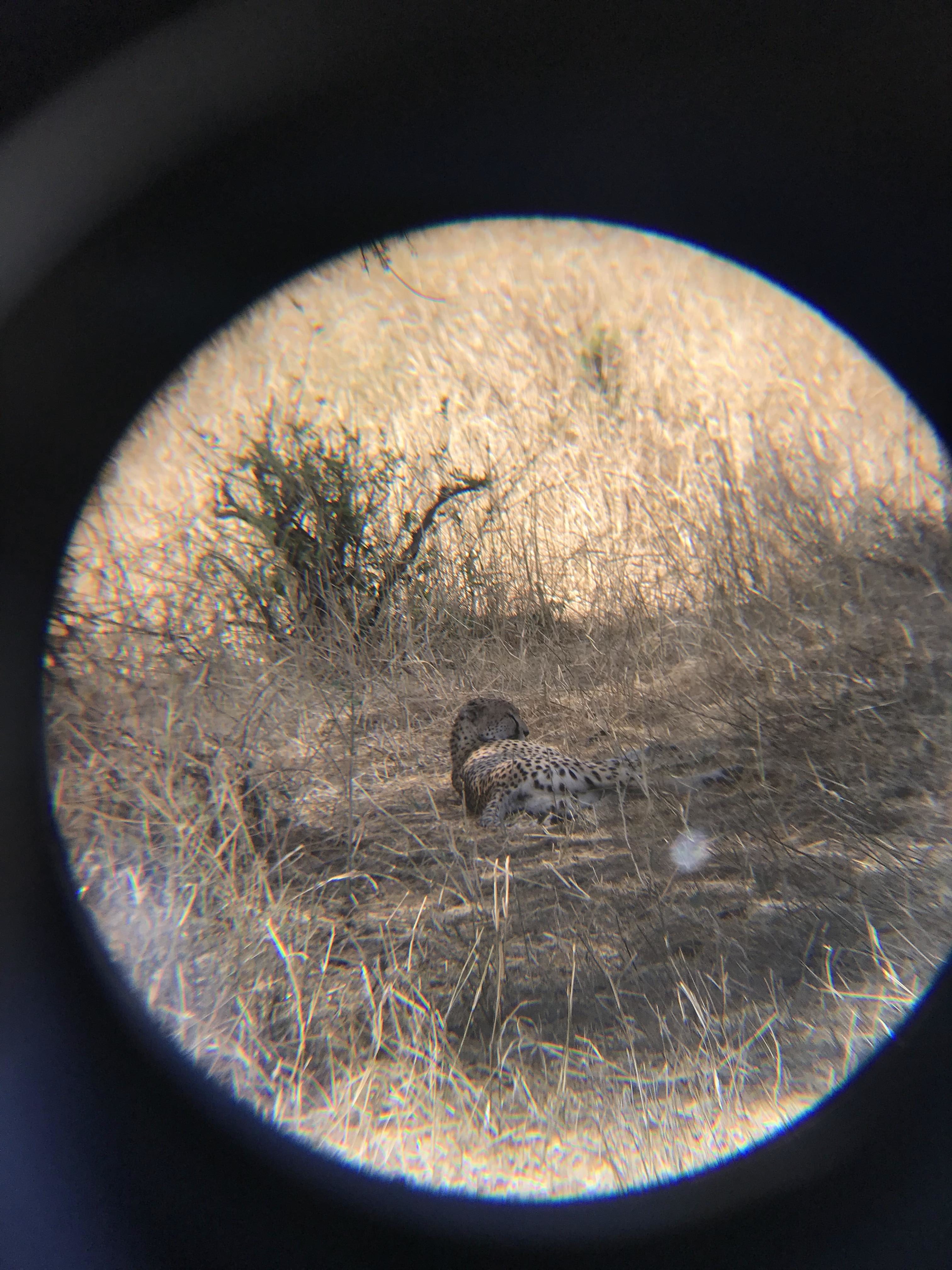
Cheetah (duma) taking a little nap
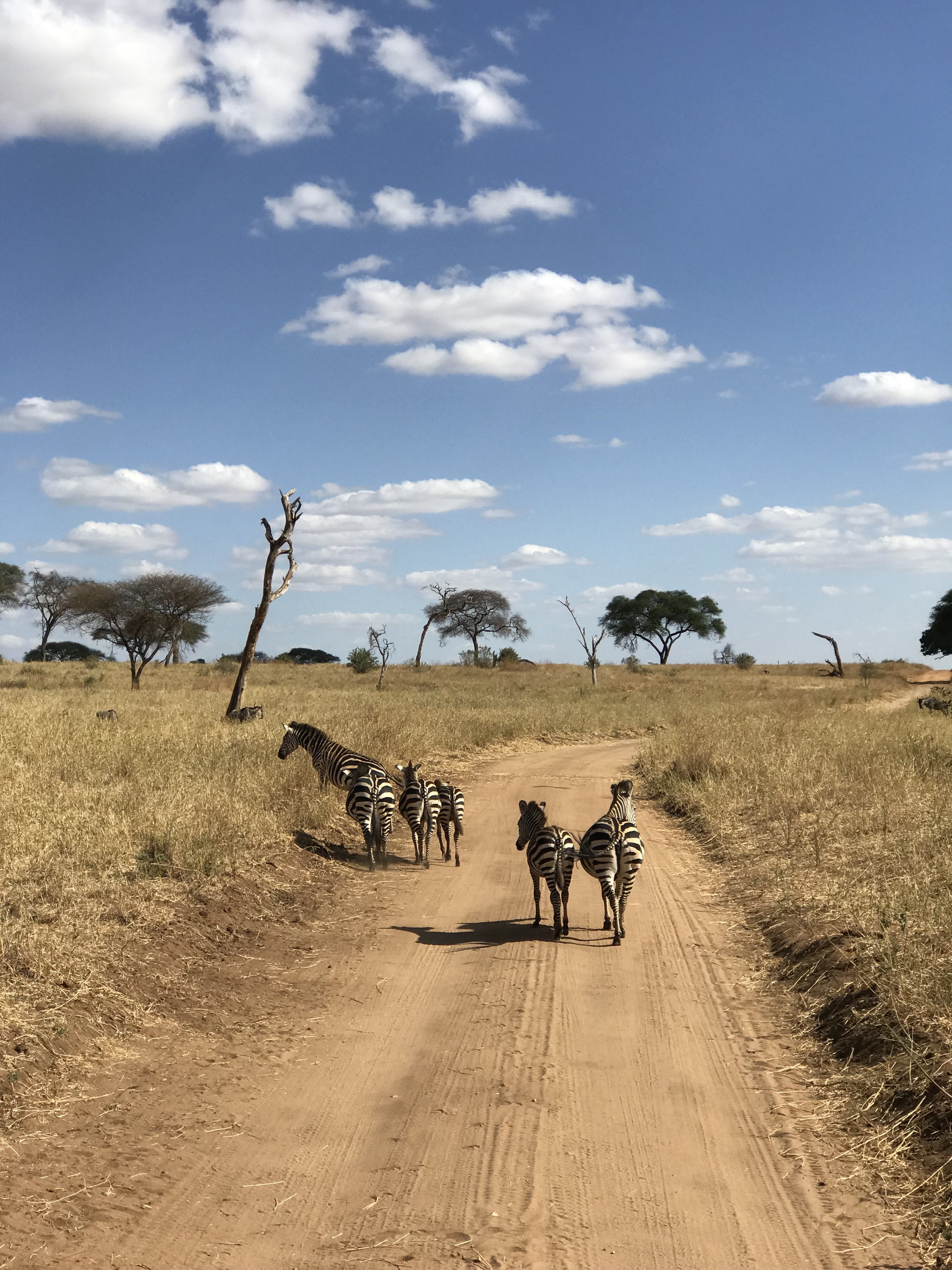 Some zebra traffic on the rode
Some zebra traffic on the rode
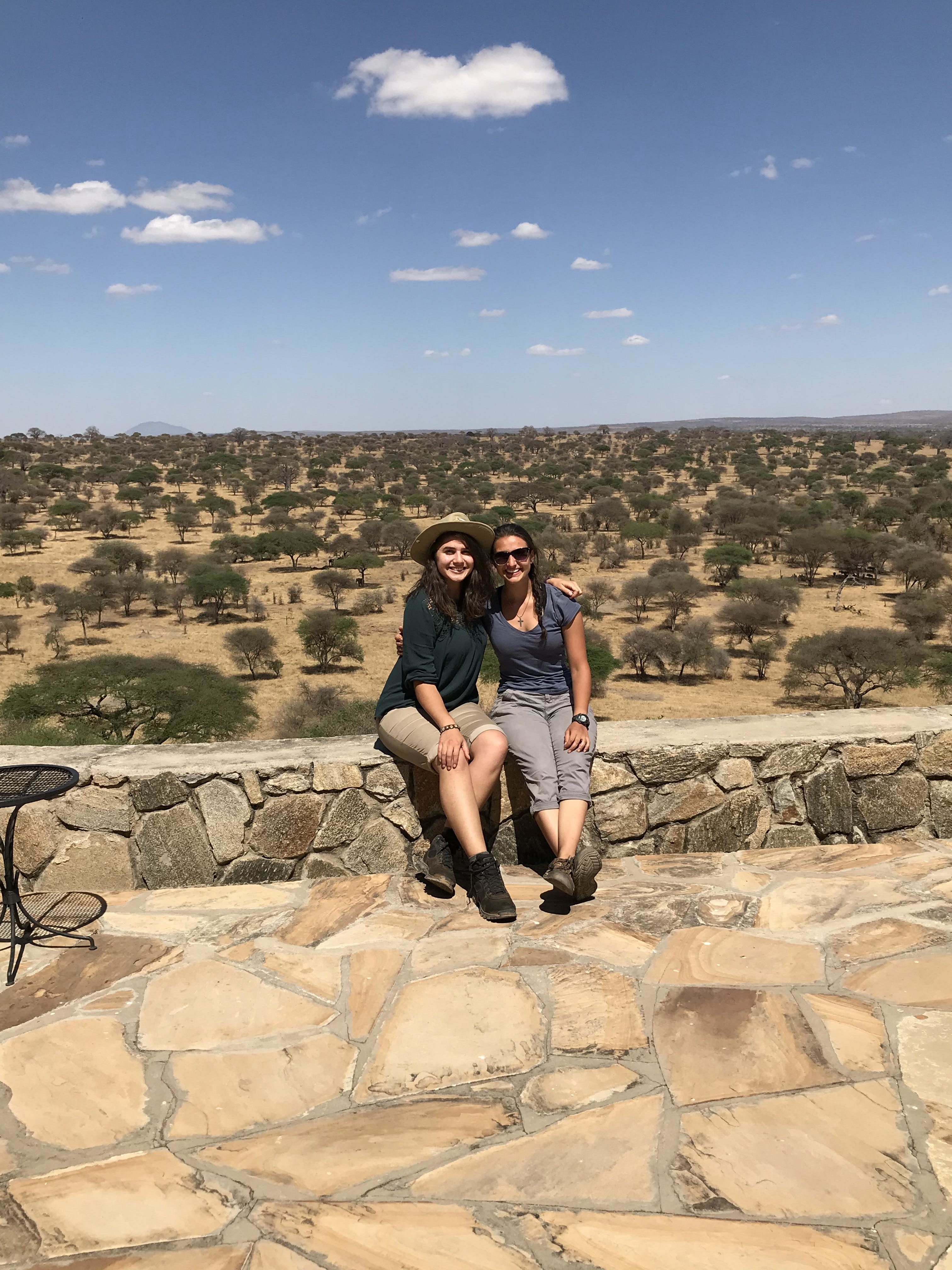 On the way back we stopped by the Tarangire National Park lodge before the guest lecture
On the way back we stopped by the Tarangire National Park lodge before the guest lecture
 Lions are identified based on their unique whisker spots
Lions are identified based on their unique whisker spots
Day 3: Understanding human-wildlife conflict
We talked to the park rangers about their practices to maintain wildlife conservation and management. In addition to how they deal with Maasai communities residing around the national parks, in addition to the poaching activities present in such protected areas.
We later interviewed Maasai community members that live in the wildlife corridors around the national parks to further understand the human-wildlife conflict. From what the local communities have told us, elephants were the biggest source of problems as they cause the most damage in such areas. This in turn, affects the livelihood of these people that are already financially unstable! These conflicts are not being resolved due to the governments availability to compensate for crop damage within a timely manner, as some individuals discussed how it may take up to two years to receive compensation. Thus, more conservation and management plans need to be further developed and tailored to benefit both the people and wildlife!
-sorry I did not take any pictures those activities but here’s a picture from that day at our camp site!
 Camp life was so much fun
Camp life was so much fun
Day 4: Manyara Ranch transect walks and animal count and LIONS!
The fourth day was absolutely amazing. First, we started with the animal counting transects, like the rest of the days but this was more intense since Manyara Ranch is a game reserve area that allows for livestock grazing. Therefore, there was a lot of cattle, goats, sheep, and donkeys to count that day. Regardless, it was a lot of fun!
Also, one of my highlights from this day was racing an ostrich run in full speed as he passed our car, that ostrich was going about 30-40 mphs, incredible!
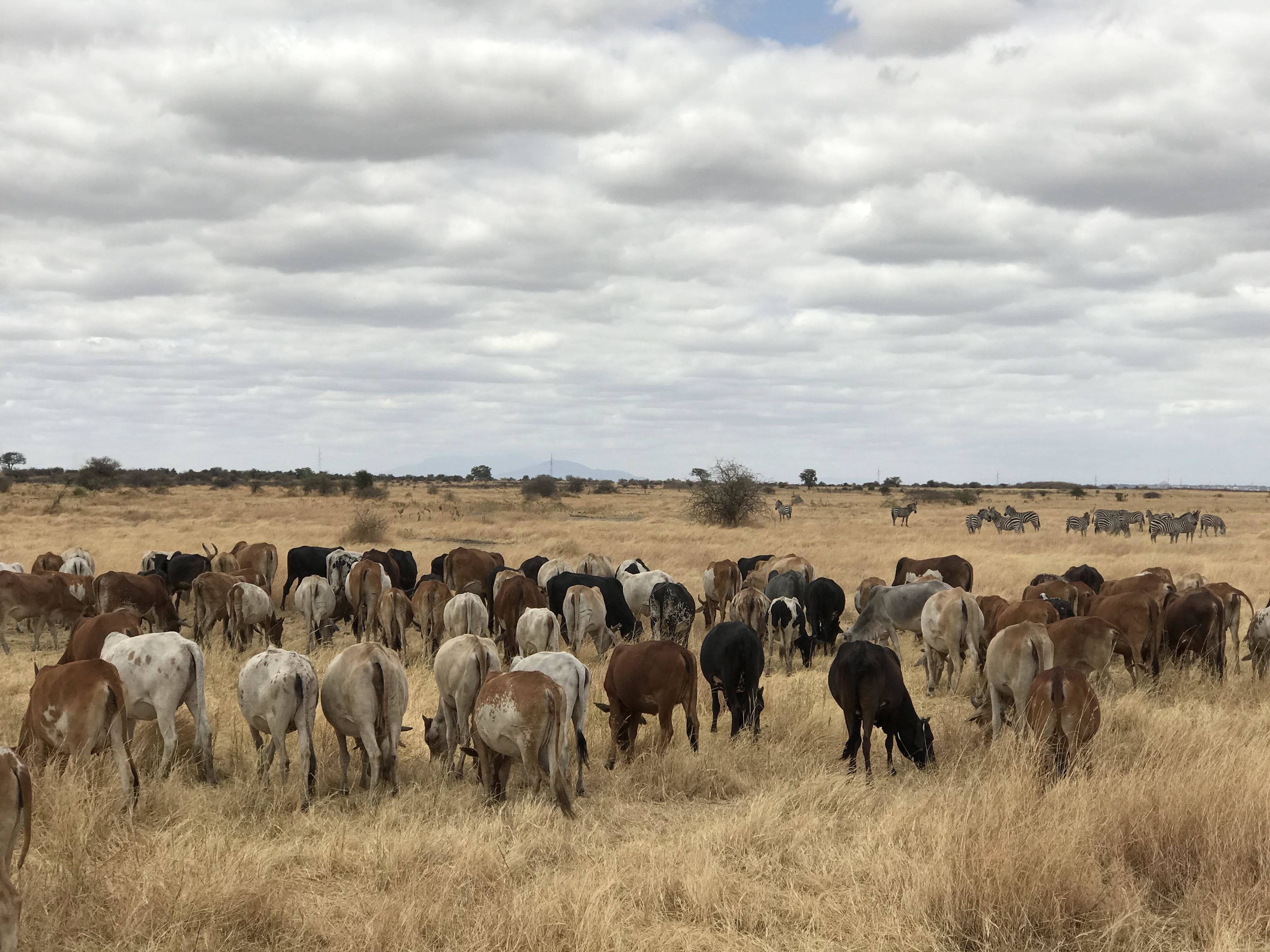 Hundreds of cattle to count
Hundreds of cattle to count
 The closest I’ve gotten to elephants so far
The closest I’ve gotten to elephants so far
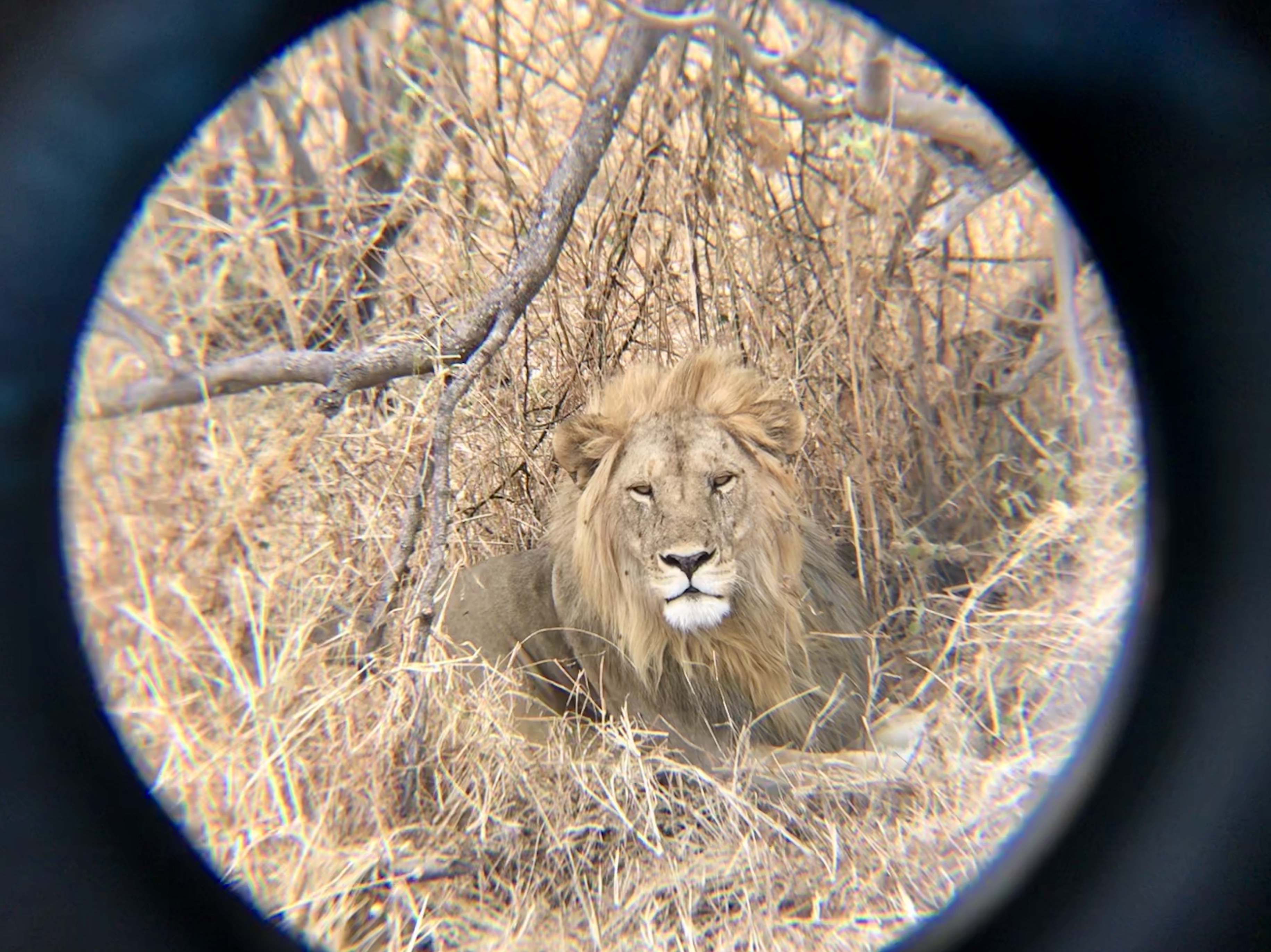 The beauty of this lion (simba) was unforgettable, favorite moment!
The beauty of this lion (simba) was unforgettable, favorite moment!
 The African lion enjoying the fresh air
The African lion enjoying the fresh air
Day 5: Background information on Manyara Ranch
On our last day, we discussed the vegetation and availability of natural resources in Manyara Ranch. Understanding the problems in these places will help improve wildlife conservation and management.
 Saying our last goodbyes to Manyara Ranch at the top of a mountain
Saying our last goodbyes to Manyara Ranch at the top of a mountain
I hope you enjoyed all the pictures!
Koheri (bye)!
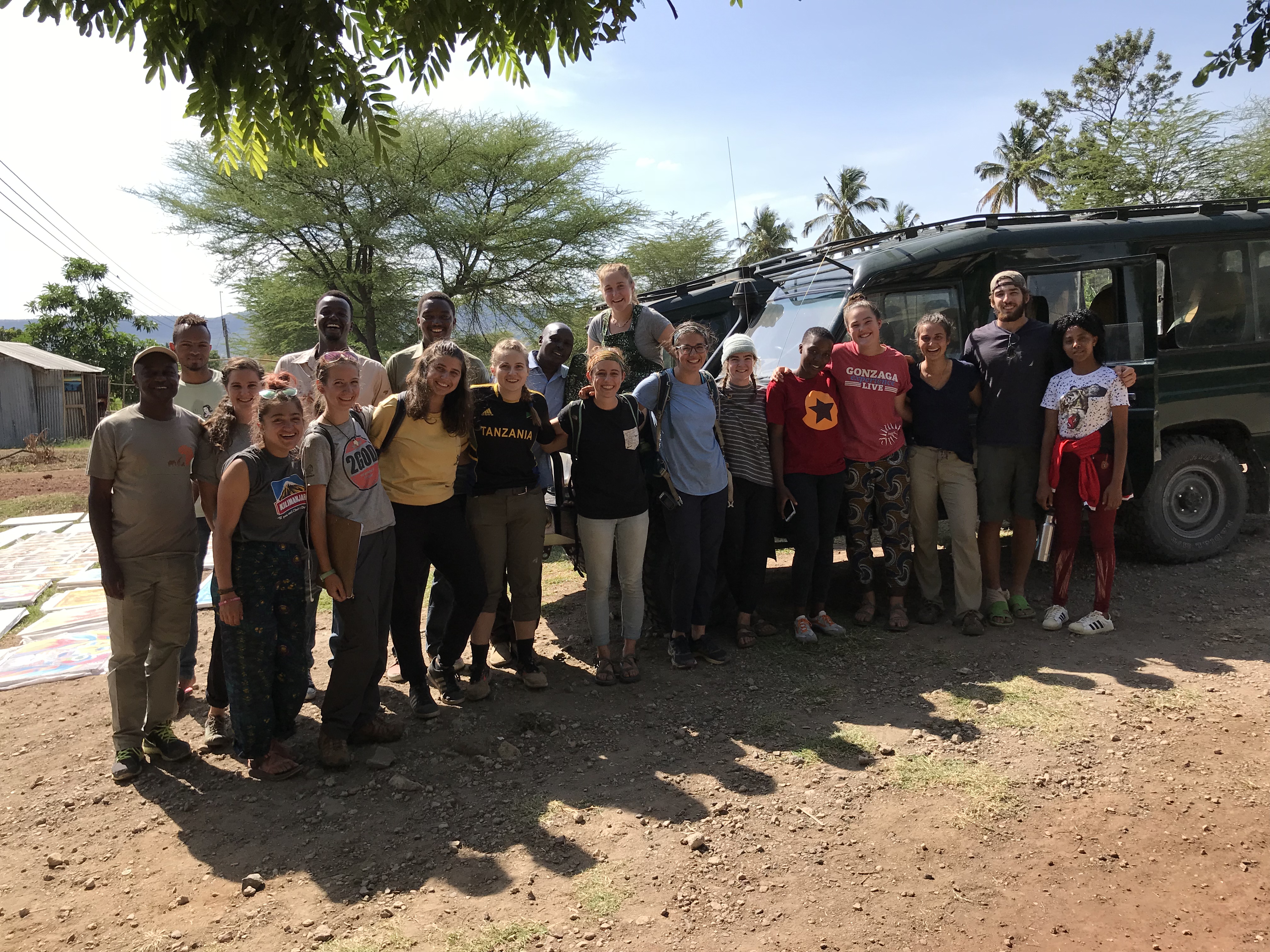 All the people involved in our research project… team Kioko
All the people involved in our research project… team Kioko 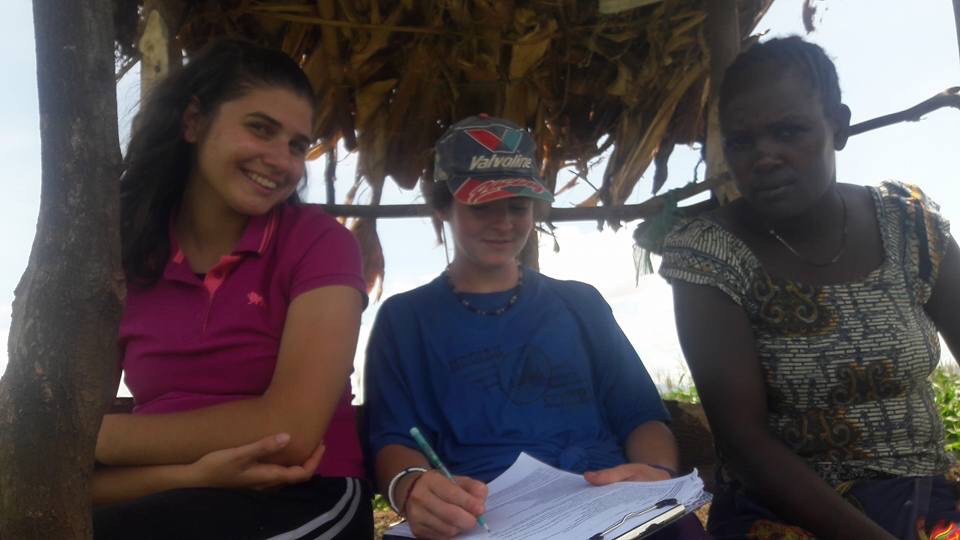 Interviews are always better under the shade
Interviews are always better under the shade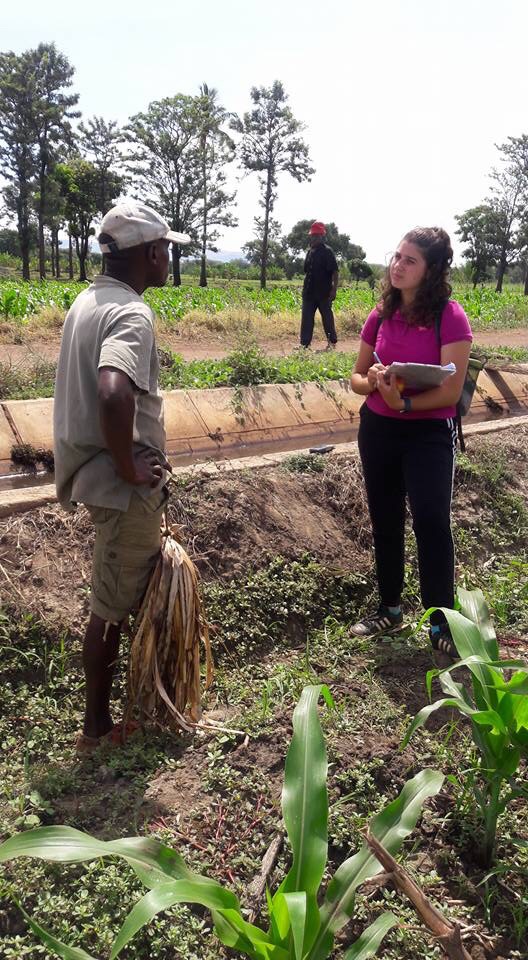 Me focusing really hard on the interview or being blinded by the sun
Me focusing really hard on the interview or being blinded by the sun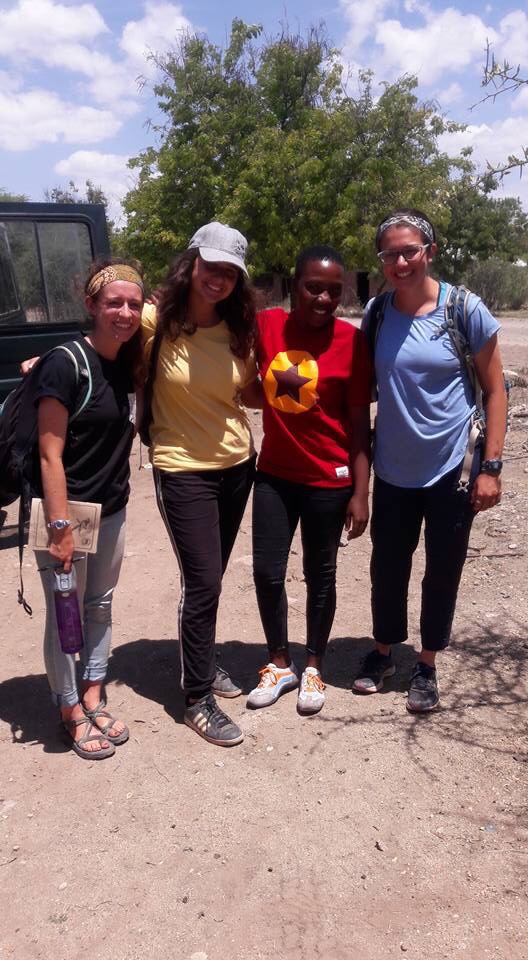 Emma, me, Ramla, and Halee smiling after a long day of interviews
Emma, me, Ramla, and Halee smiling after a long day of interviews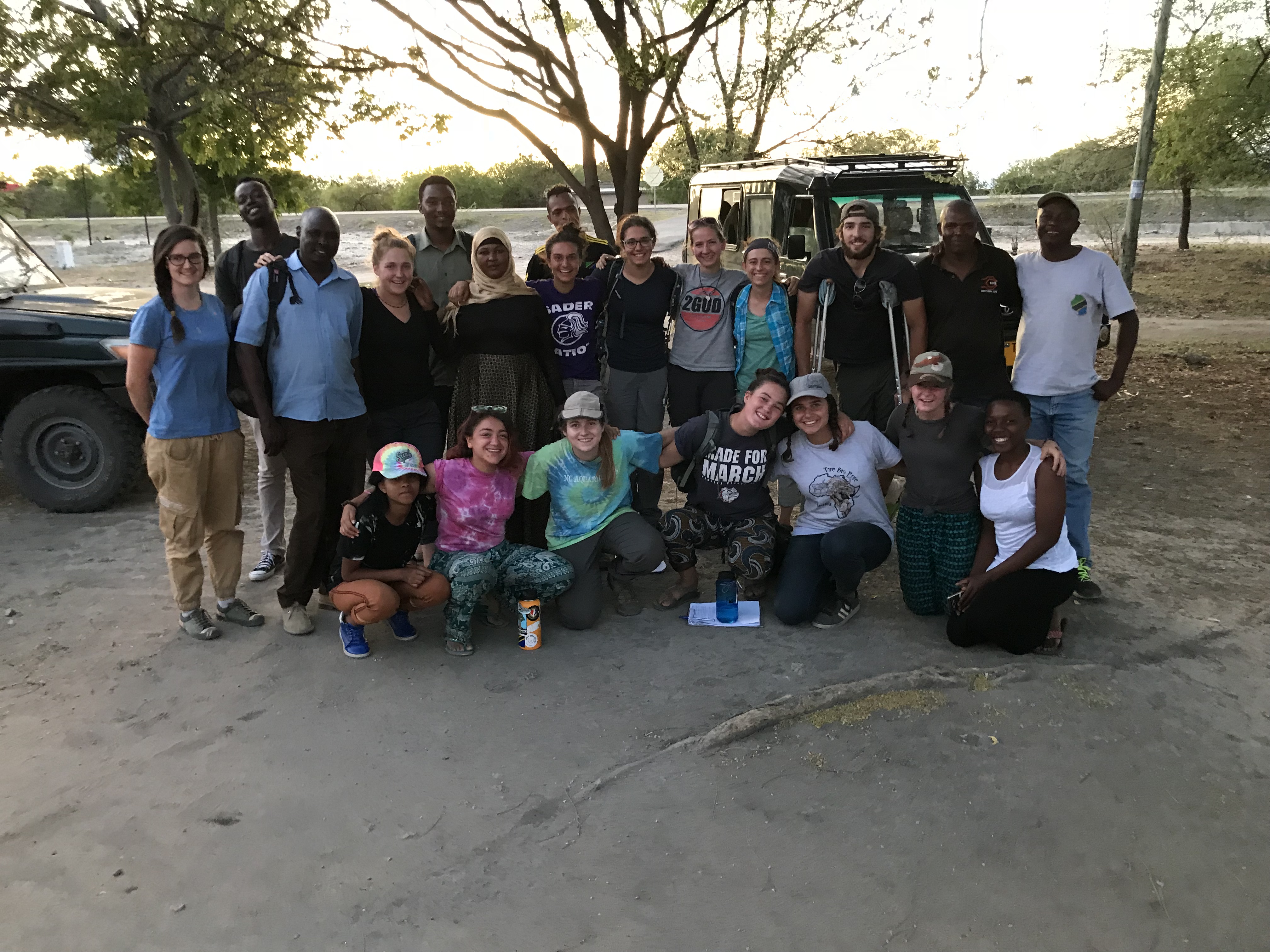 During our camping trip we were able to interview community members and village leaders
During our camping trip we were able to interview community members and village leaders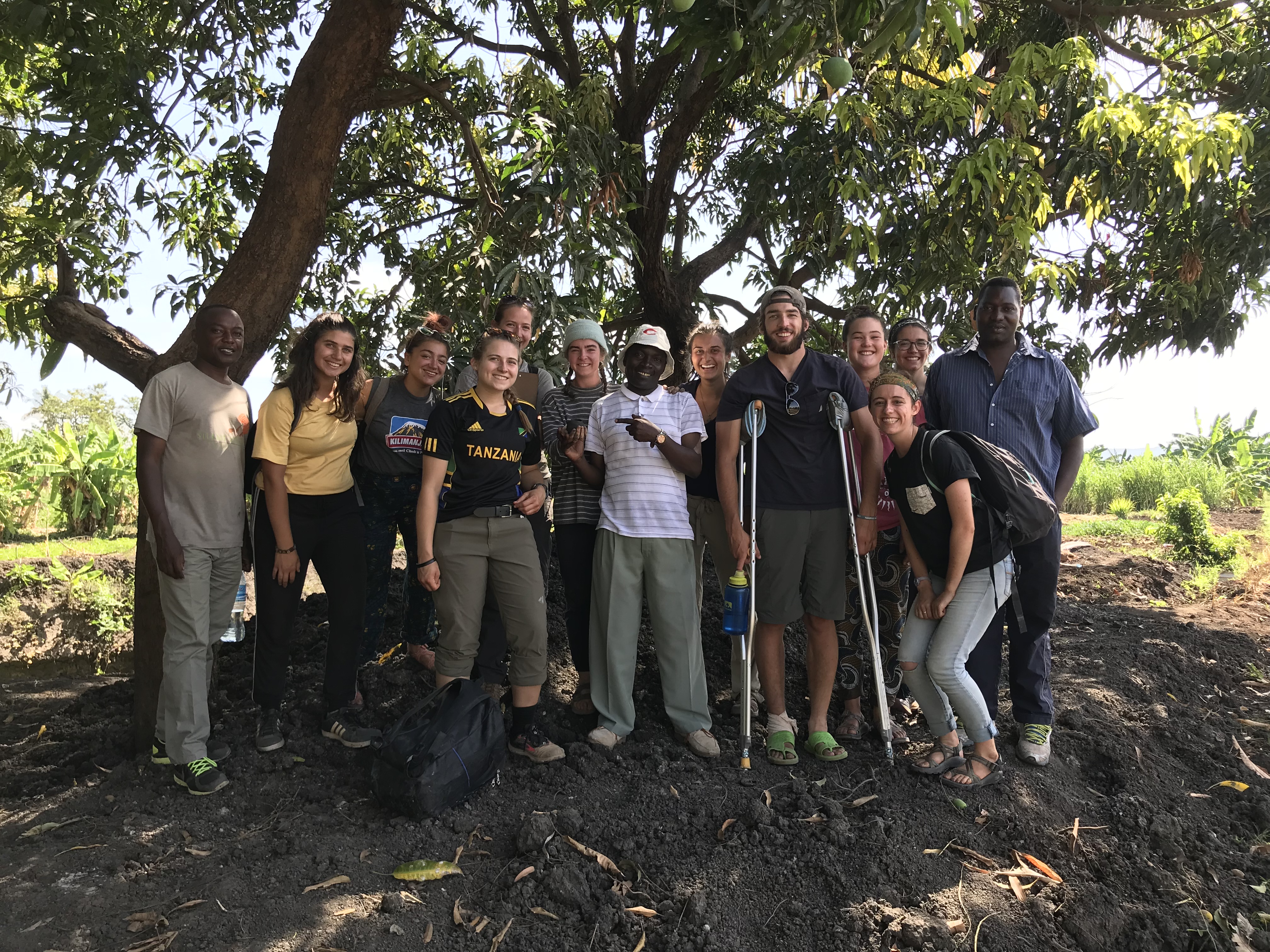 After 4 days of camping and 10 days of over 700 interviews in 6 different areas… we did it!
After 4 days of camping and 10 days of over 700 interviews in 6 different areas… we did it!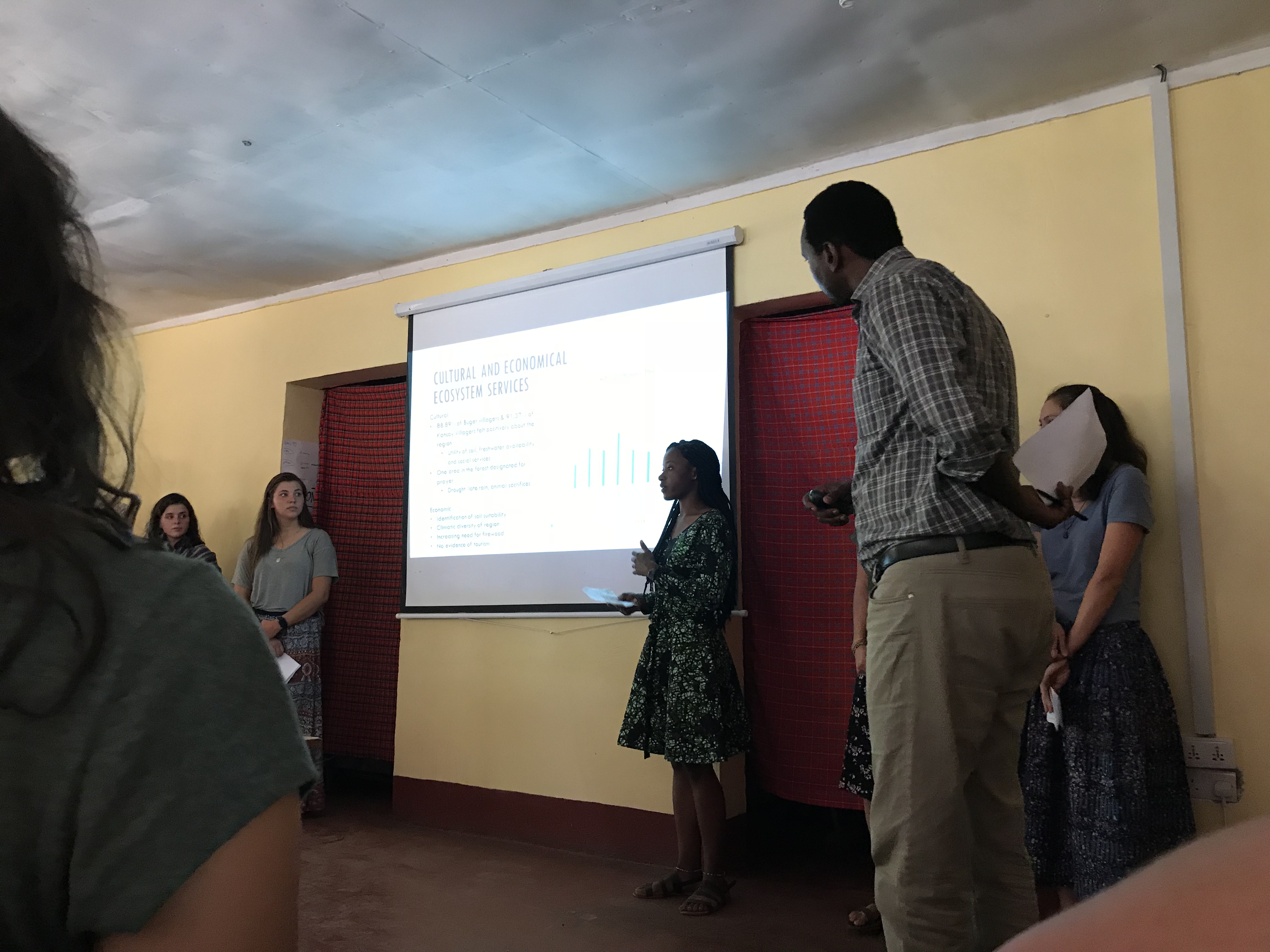 Presentations!
Presentations!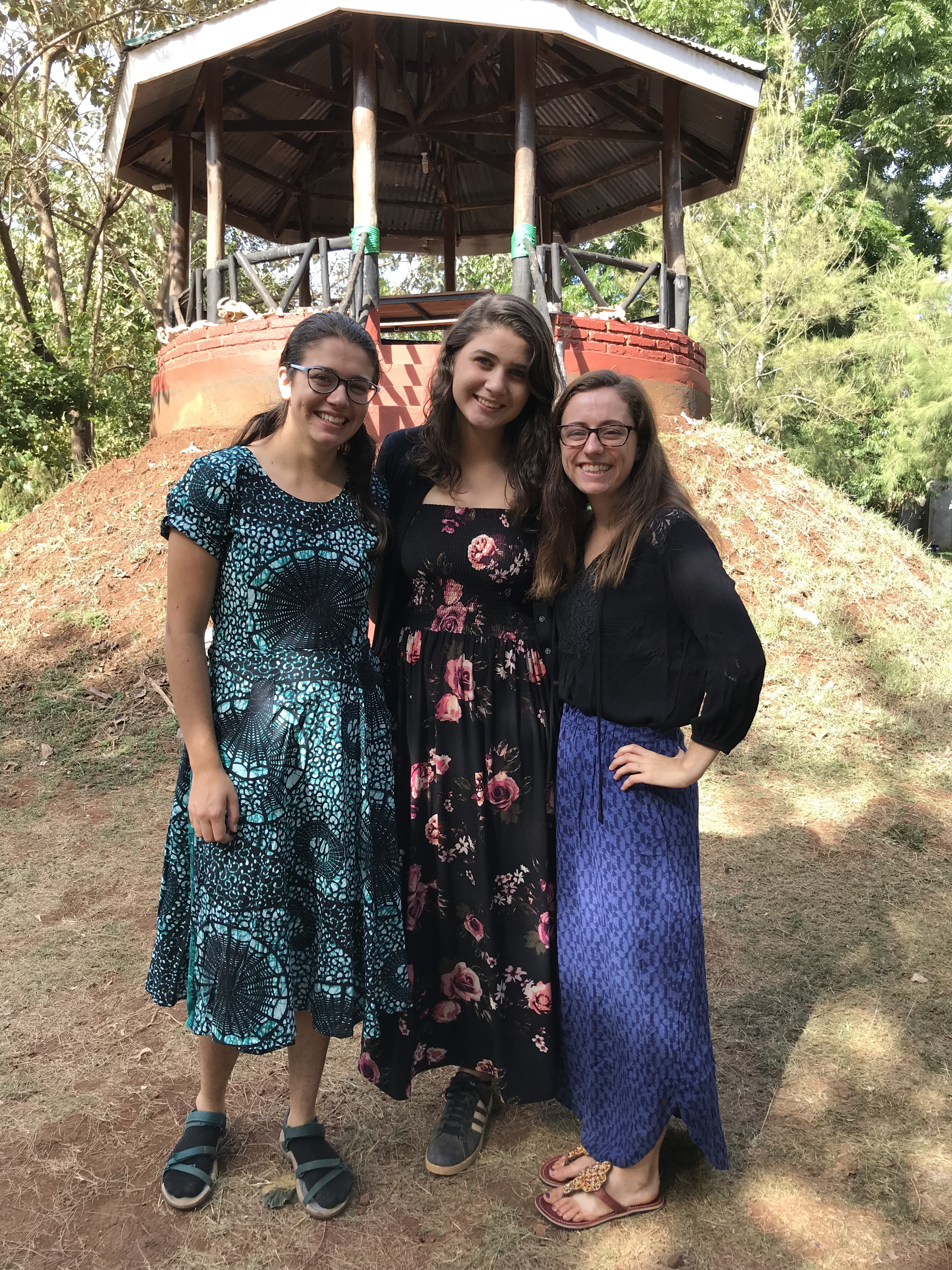 All dressed up for our community presentations!
All dressed up for our community presentations!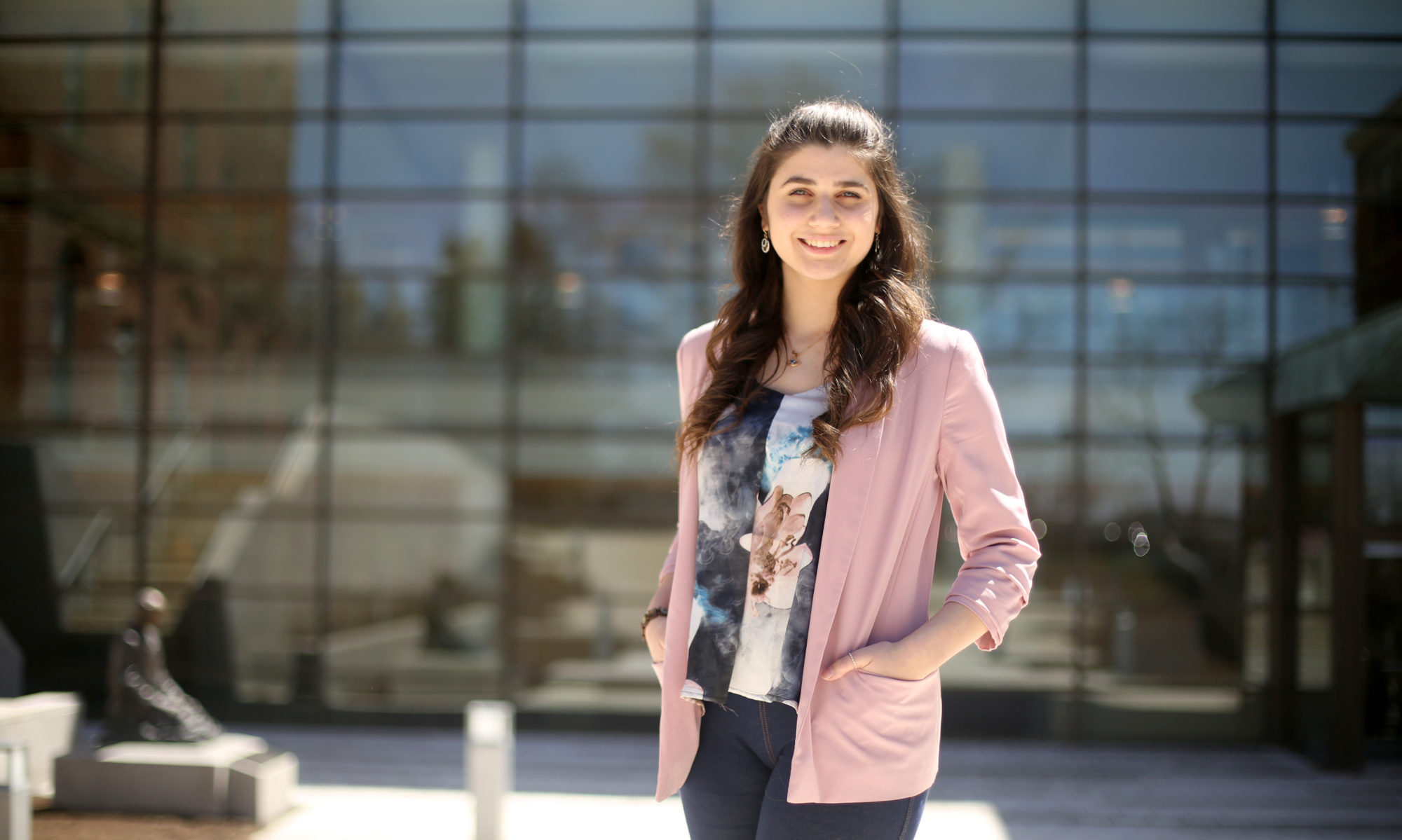
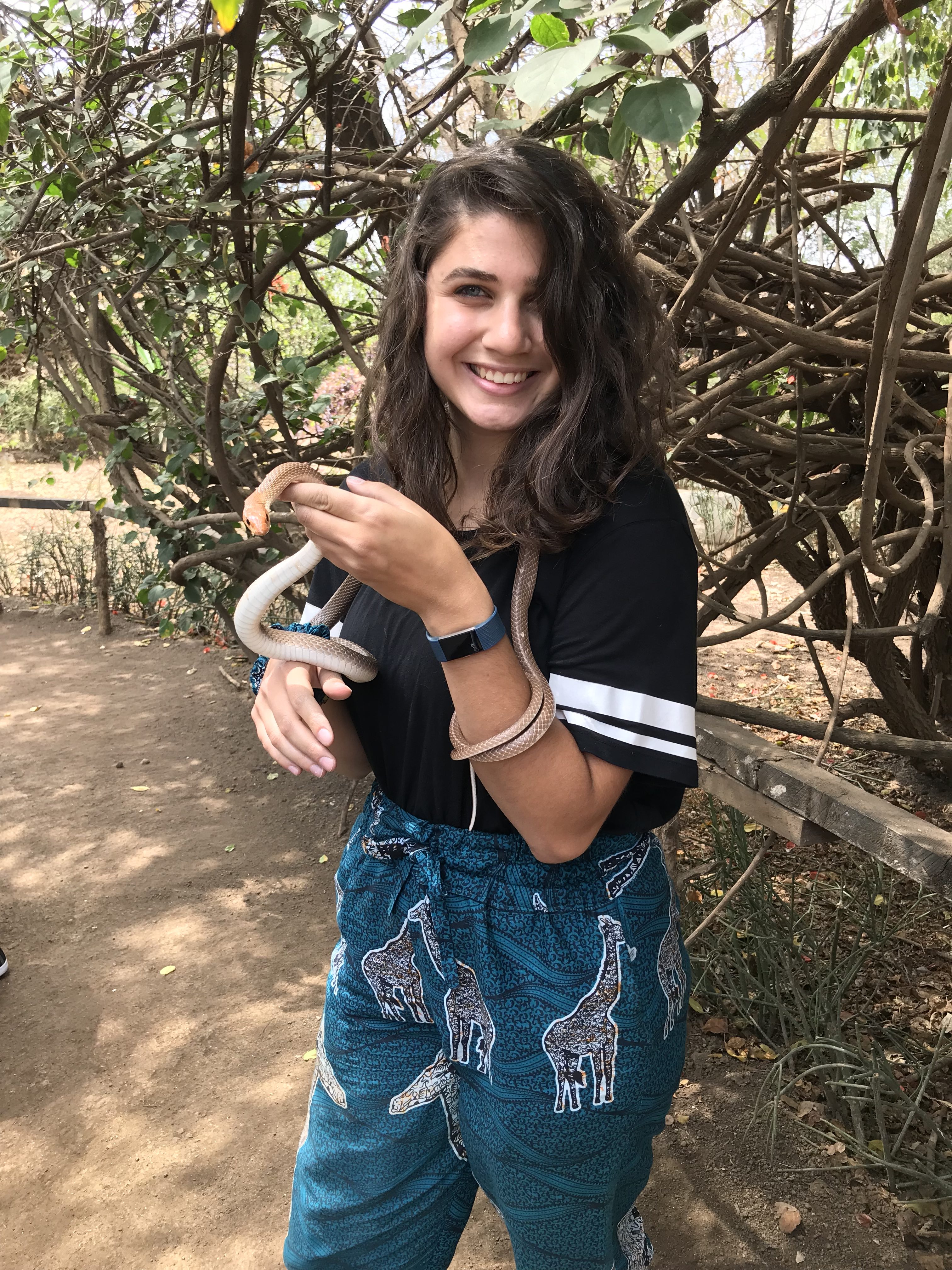 First time getting to hold a snake (don’t worry it was a nonvenomous snake)
First time getting to hold a snake (don’t worry it was a nonvenomous snake)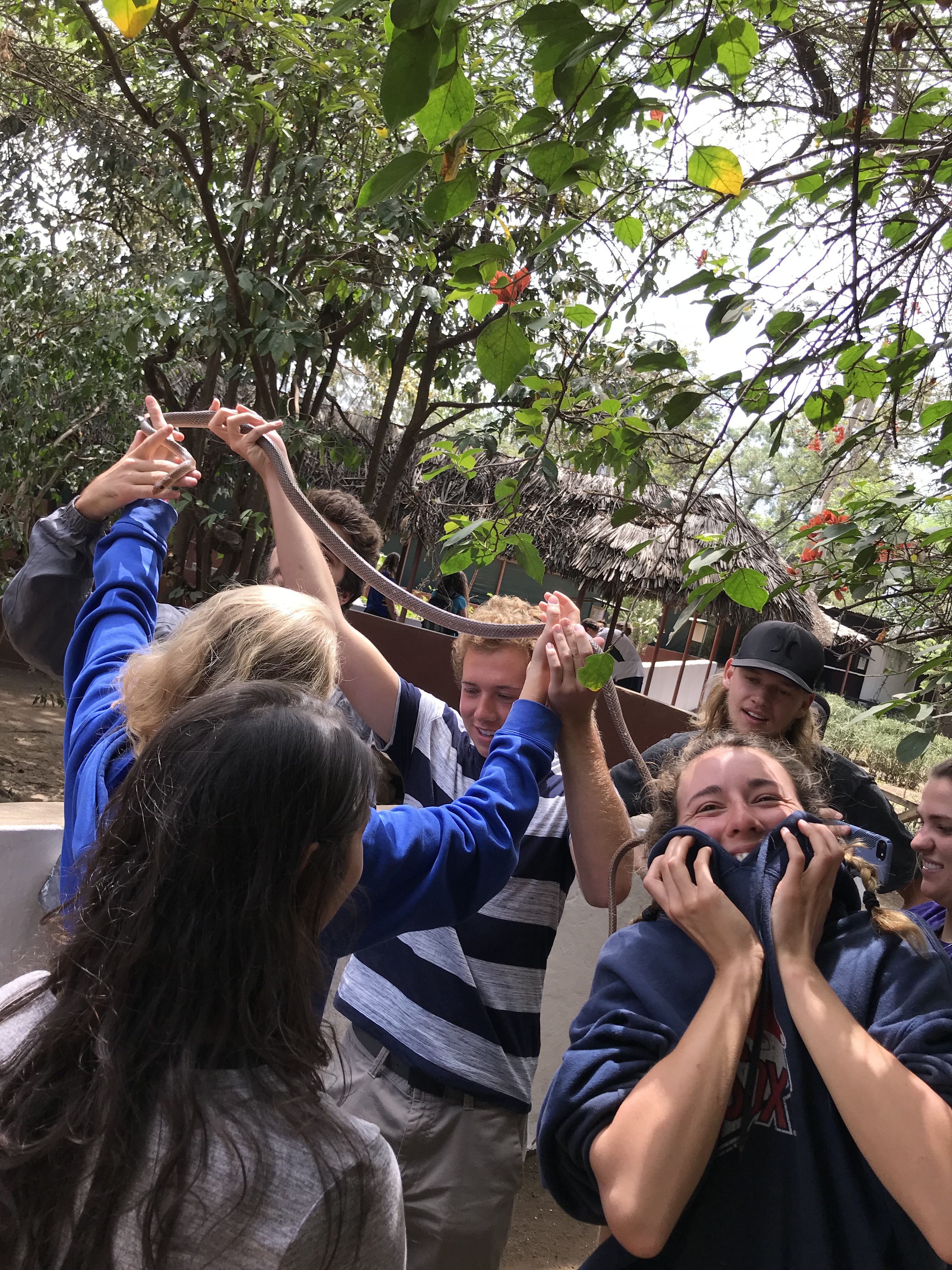 My friend Abby was holding this snake peacefully until it got stuck in her hair good thing friends are always around to help out and document the moment 🙂
My friend Abby was holding this snake peacefully until it got stuck in her hair good thing friends are always around to help out and document the moment 🙂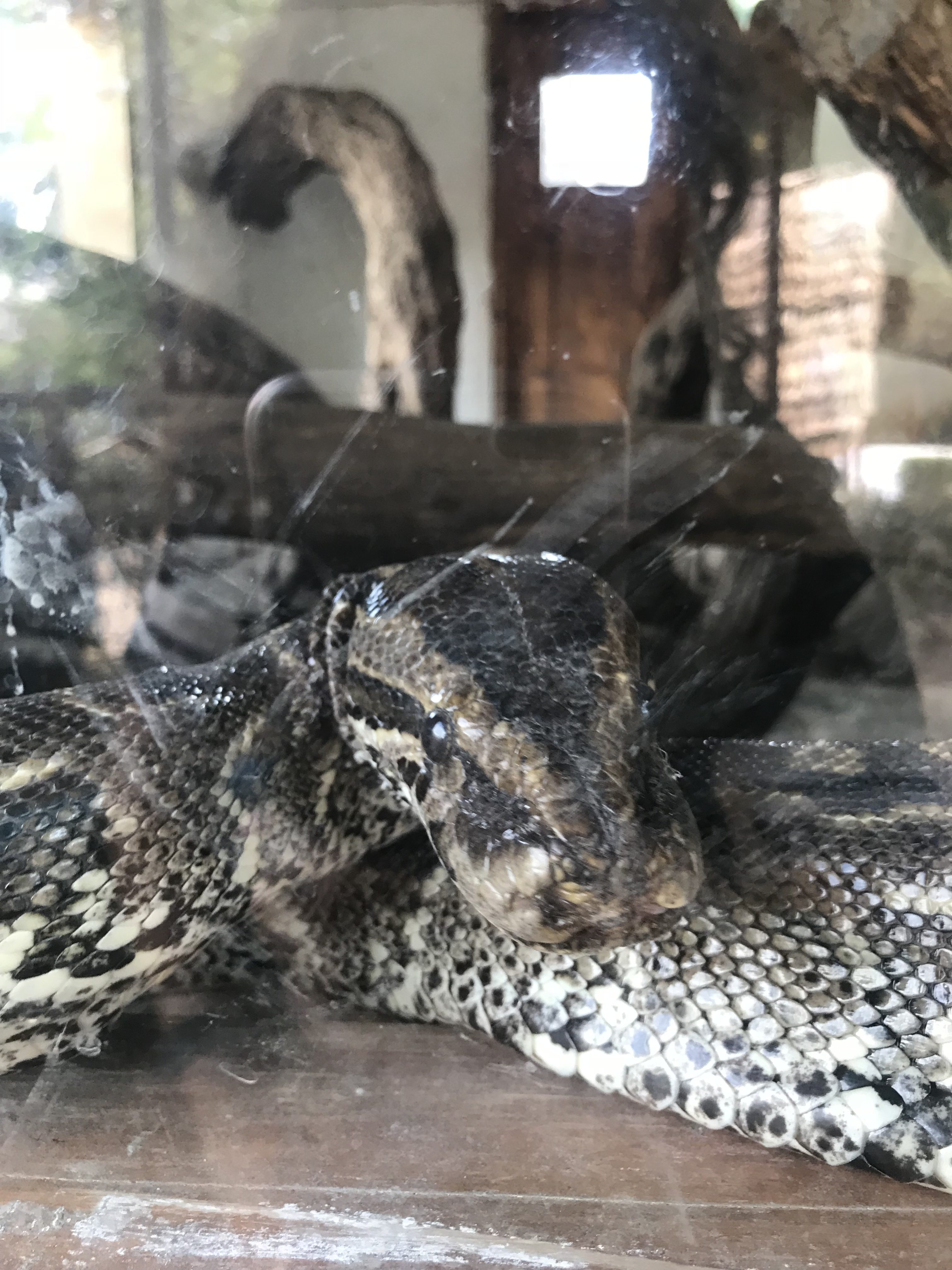 Some snakes were cute and super cool up close
Some snakes were cute and super cool up close 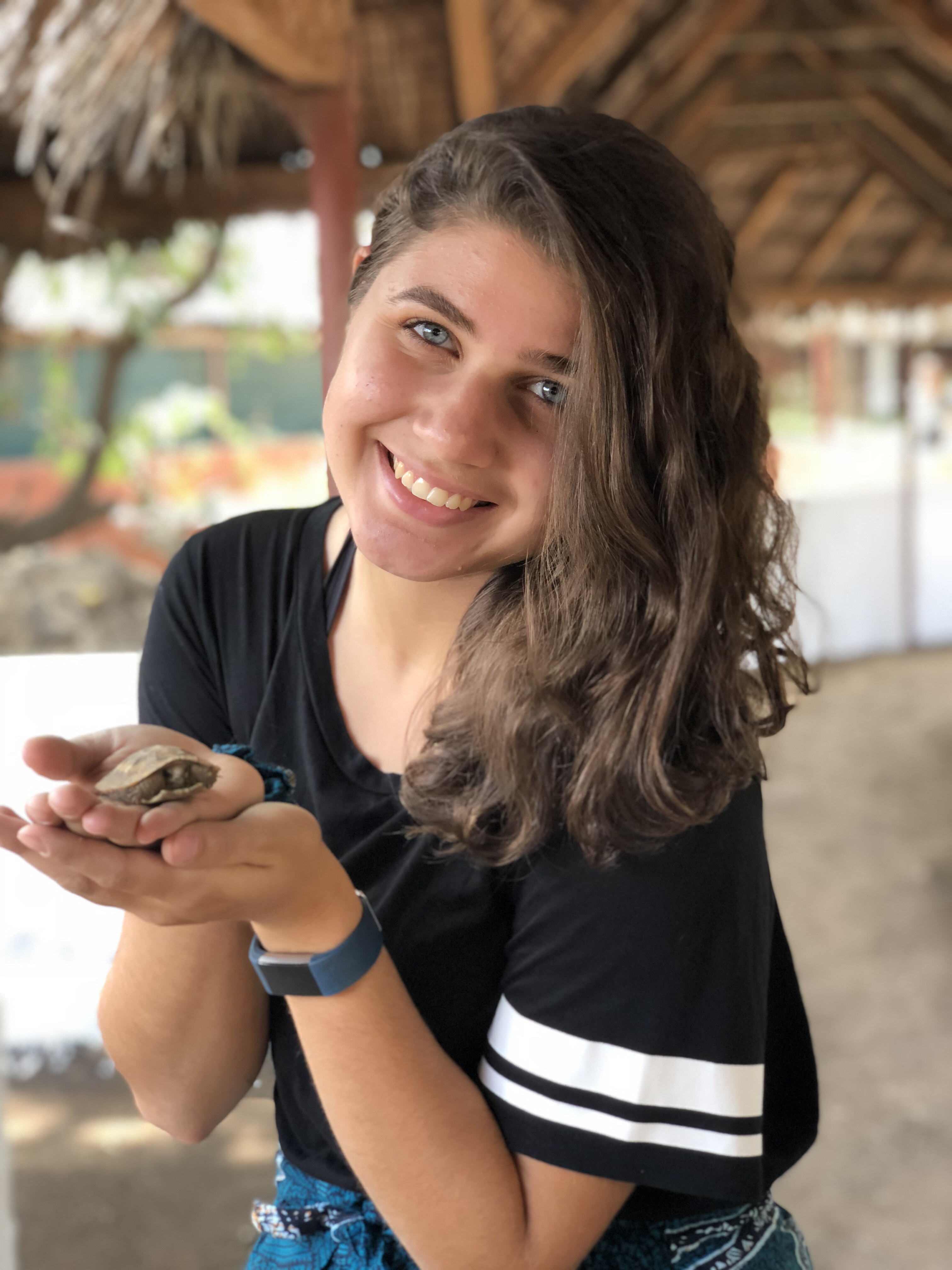 Little baby turtles are the cutest!
Little baby turtles are the cutest! 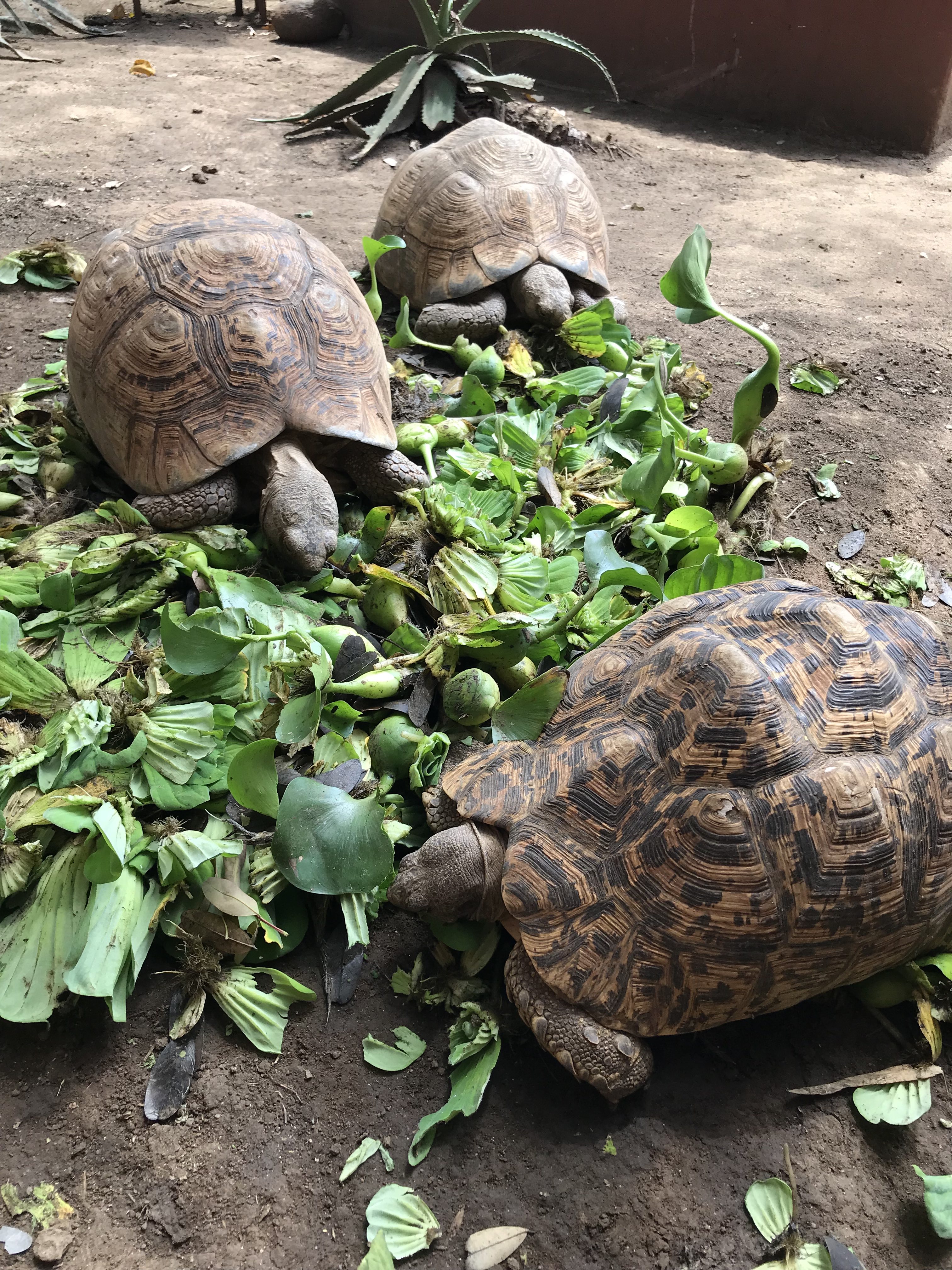 So beautiful each one of them has such unique shell pattern but they were all equally attacking those veggies
So beautiful each one of them has such unique shell pattern but they were all equally attacking those veggies 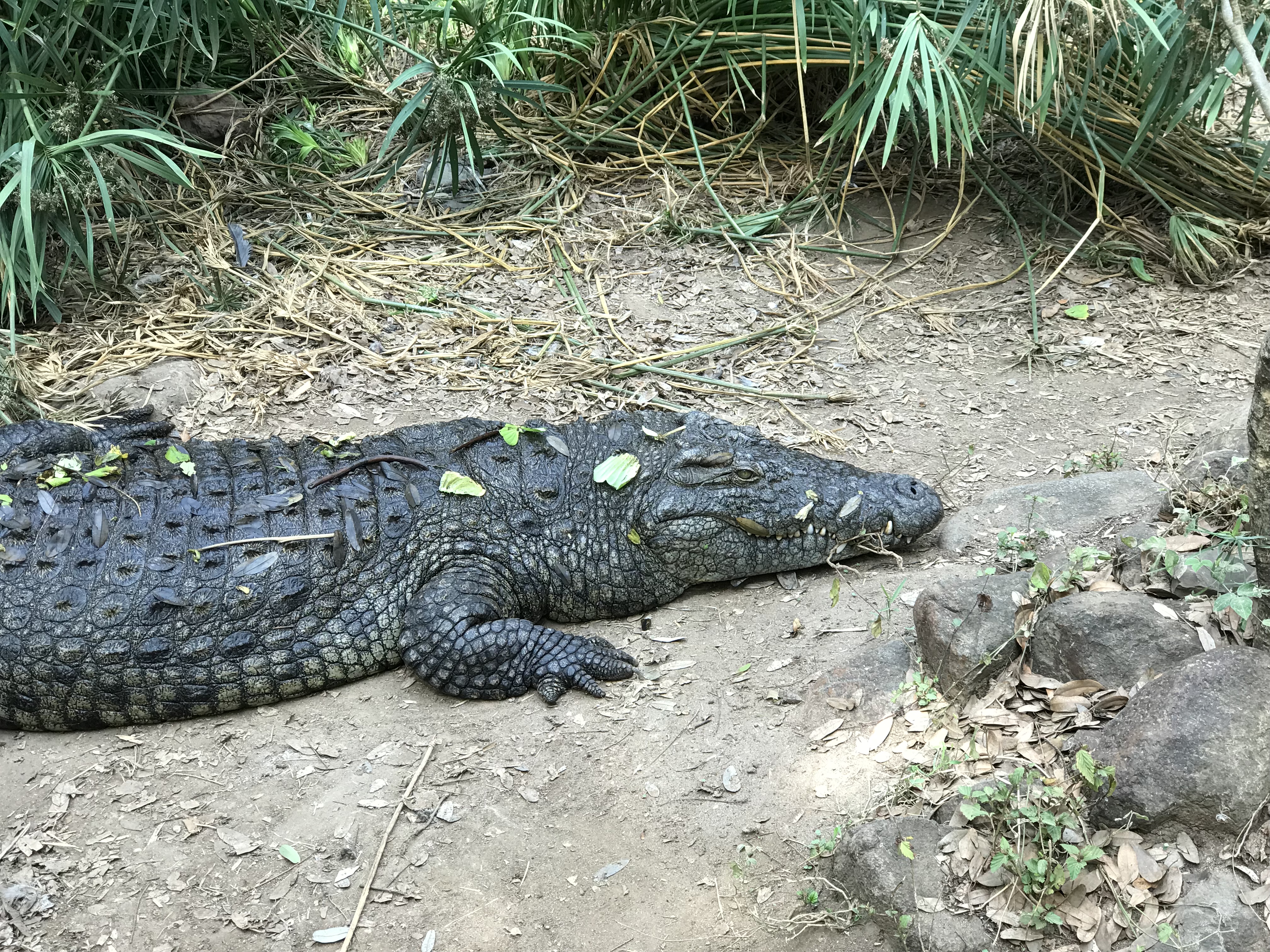 Breath taking moment to see this powerful creature in real life!
Breath taking moment to see this powerful creature in real life!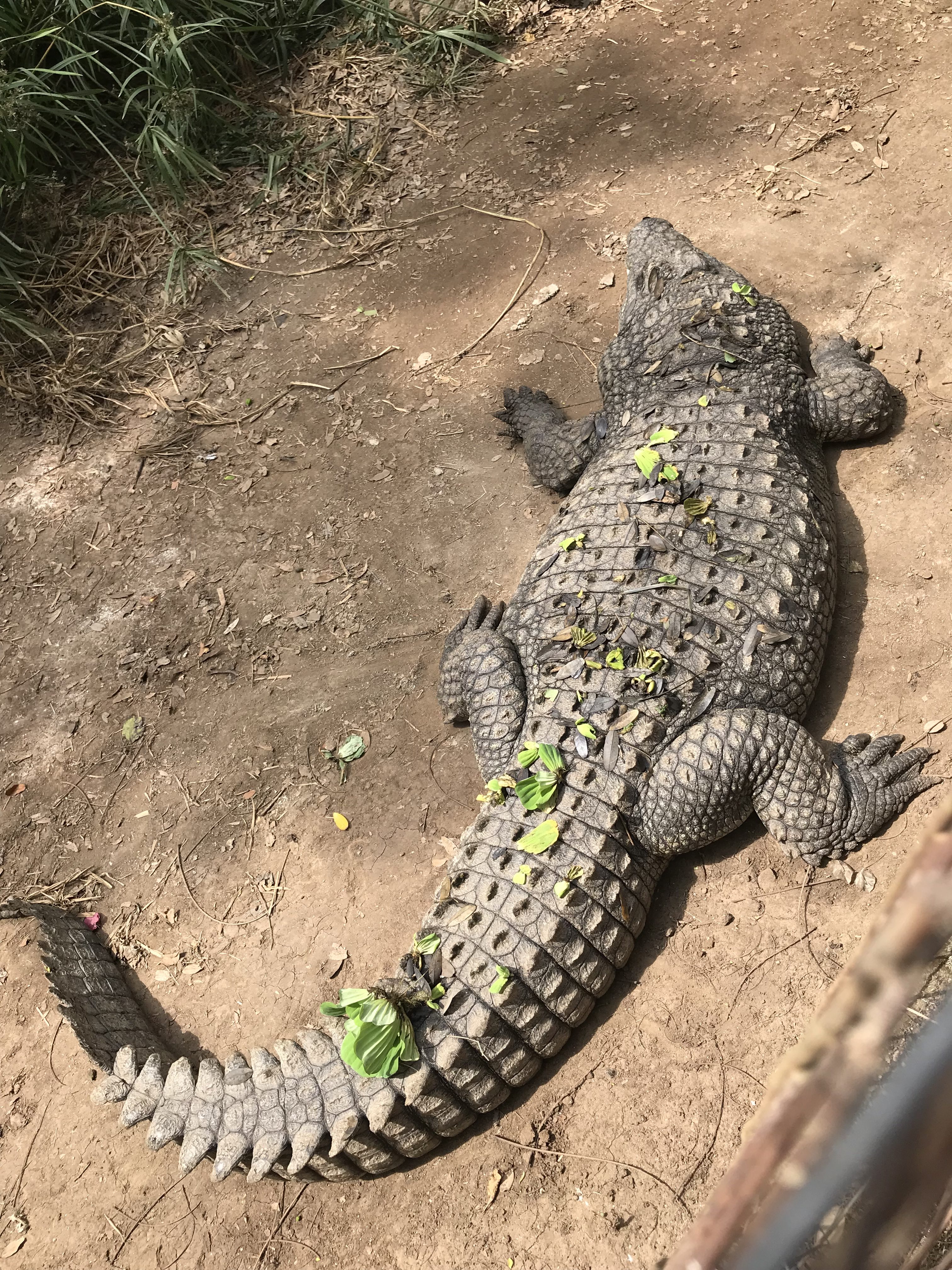 This one looks so wide because it has probably just ate its meal and the Nile crocodile can survive several months on one big meal!
This one looks so wide because it has probably just ate its meal and the Nile crocodile can survive several months on one big meal!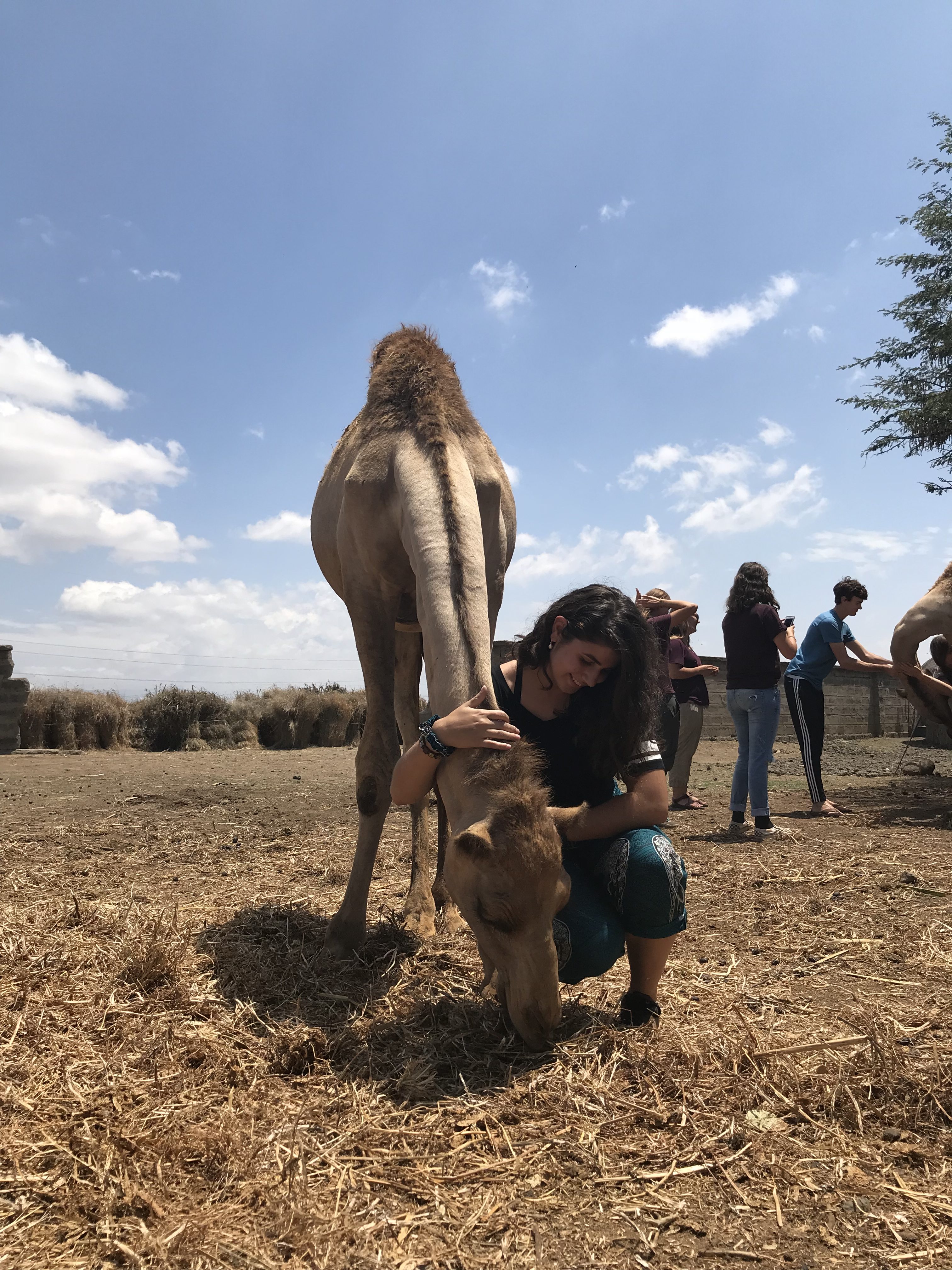 Just hanging out with my buddy!
Just hanging out with my buddy!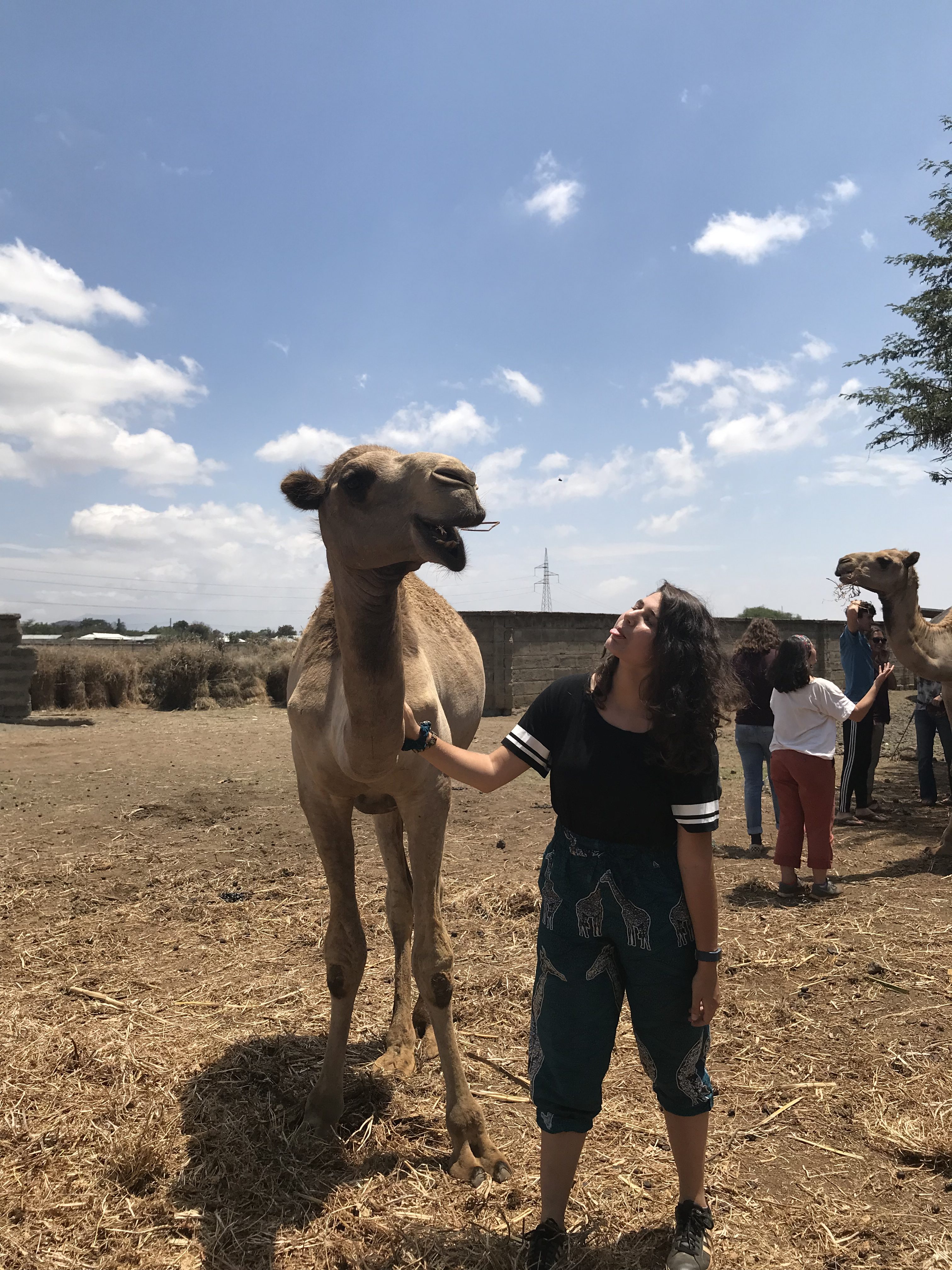 It was so much fun hanging out with this camel!
It was so much fun hanging out with this camel! 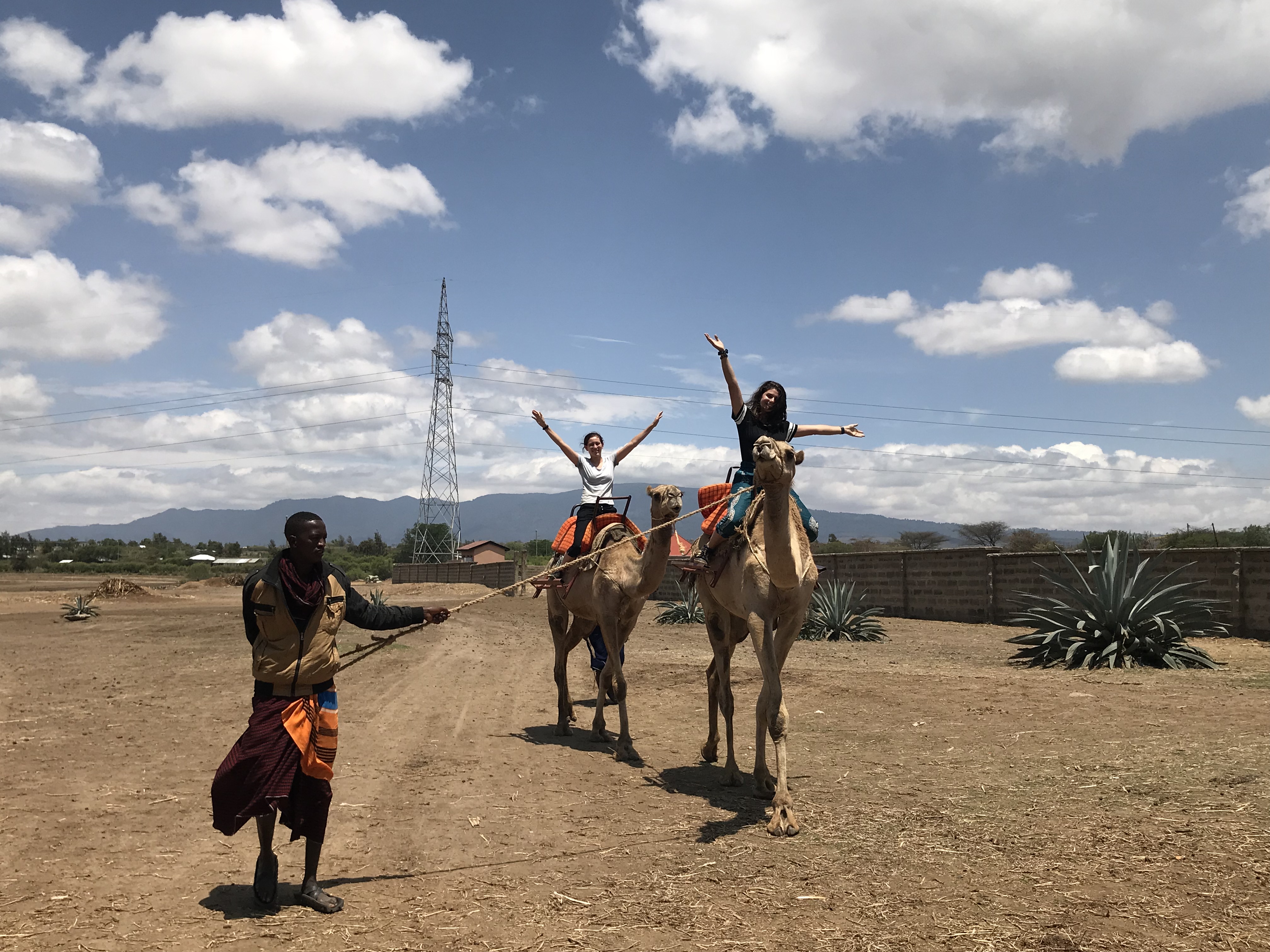 On top of the world for 2 mins!
On top of the world for 2 mins!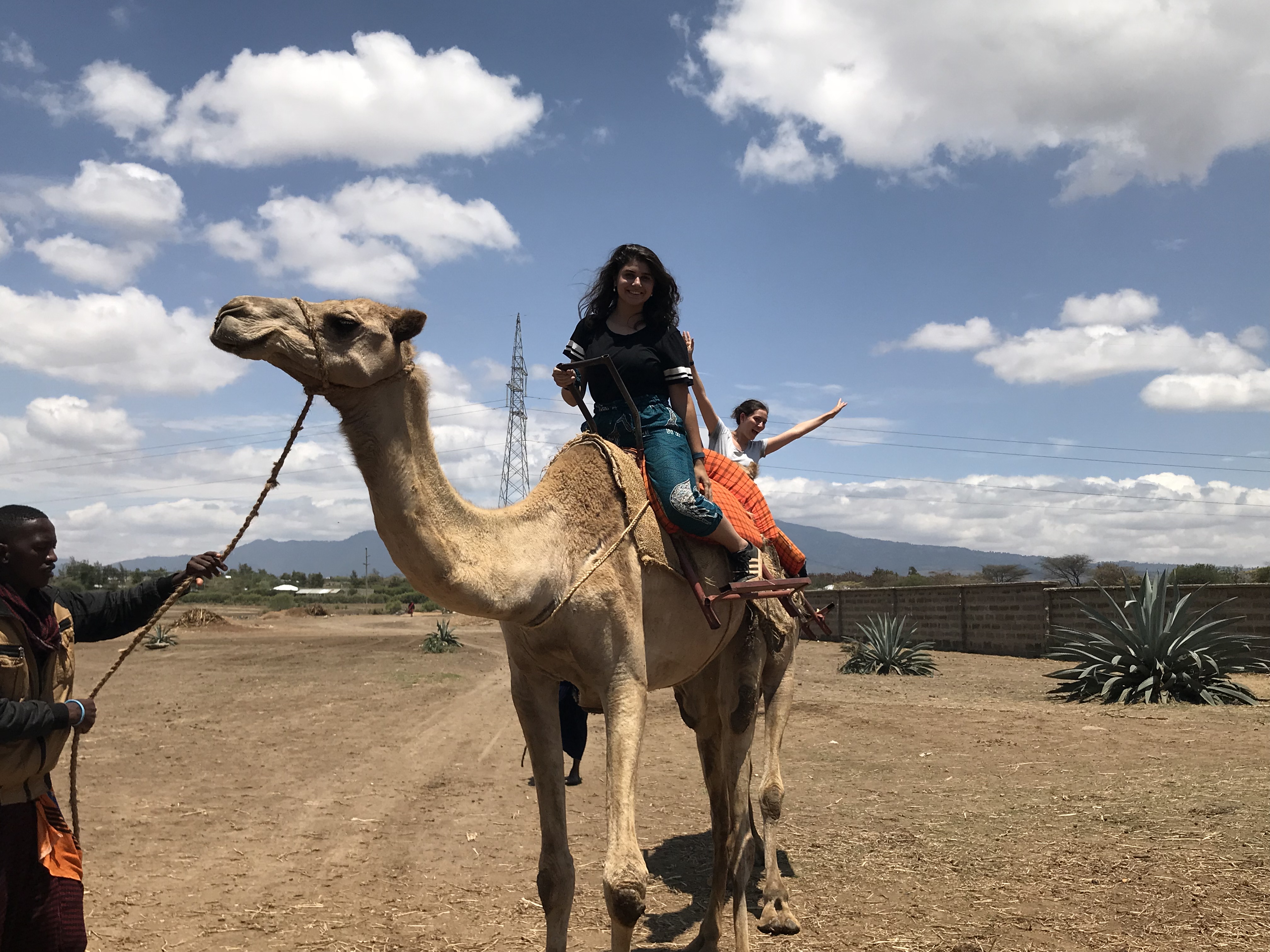 Felt like a queen
Felt like a queen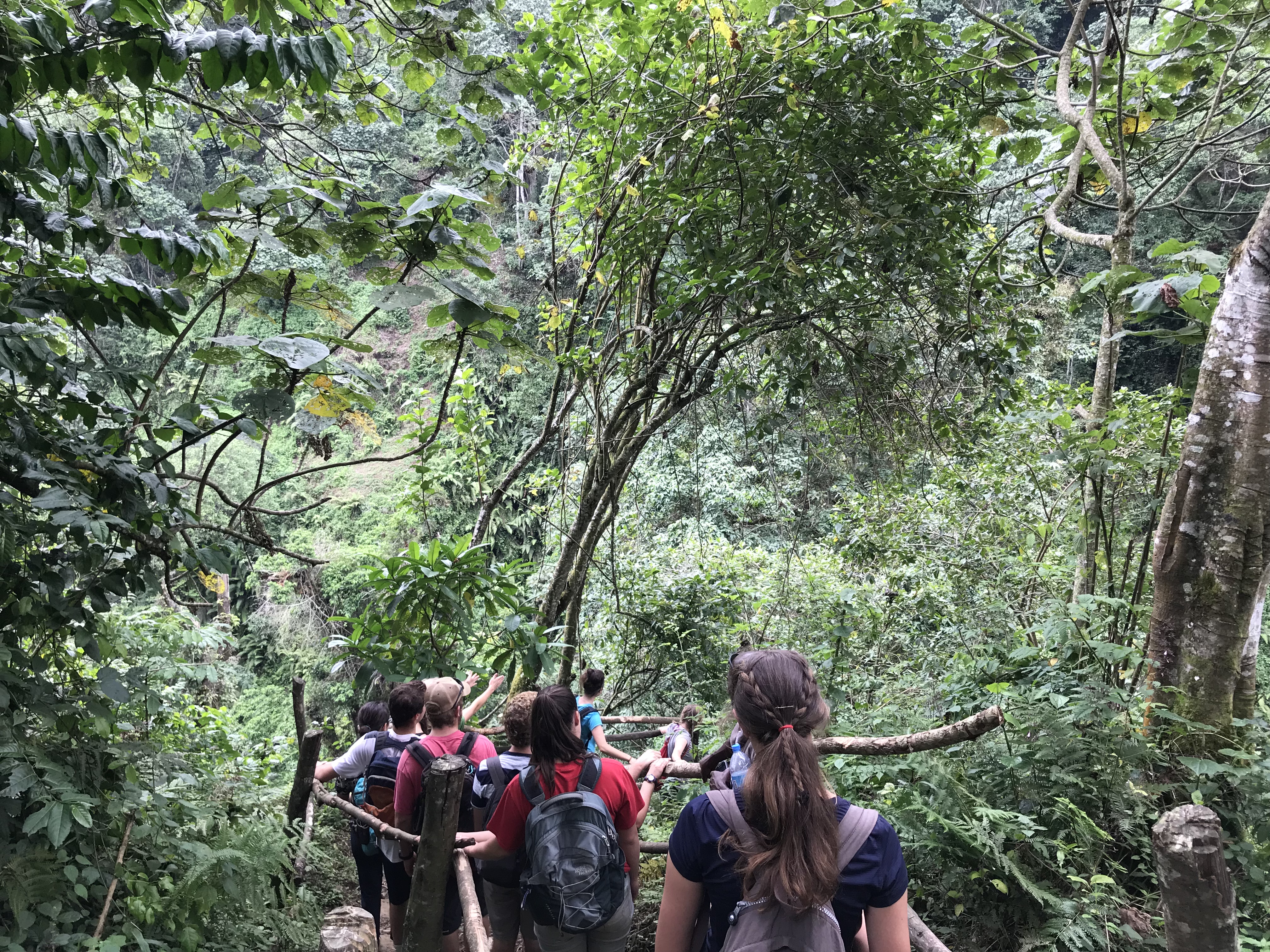 Making our way through the woods to get to the waterfalls!
Making our way through the woods to get to the waterfalls!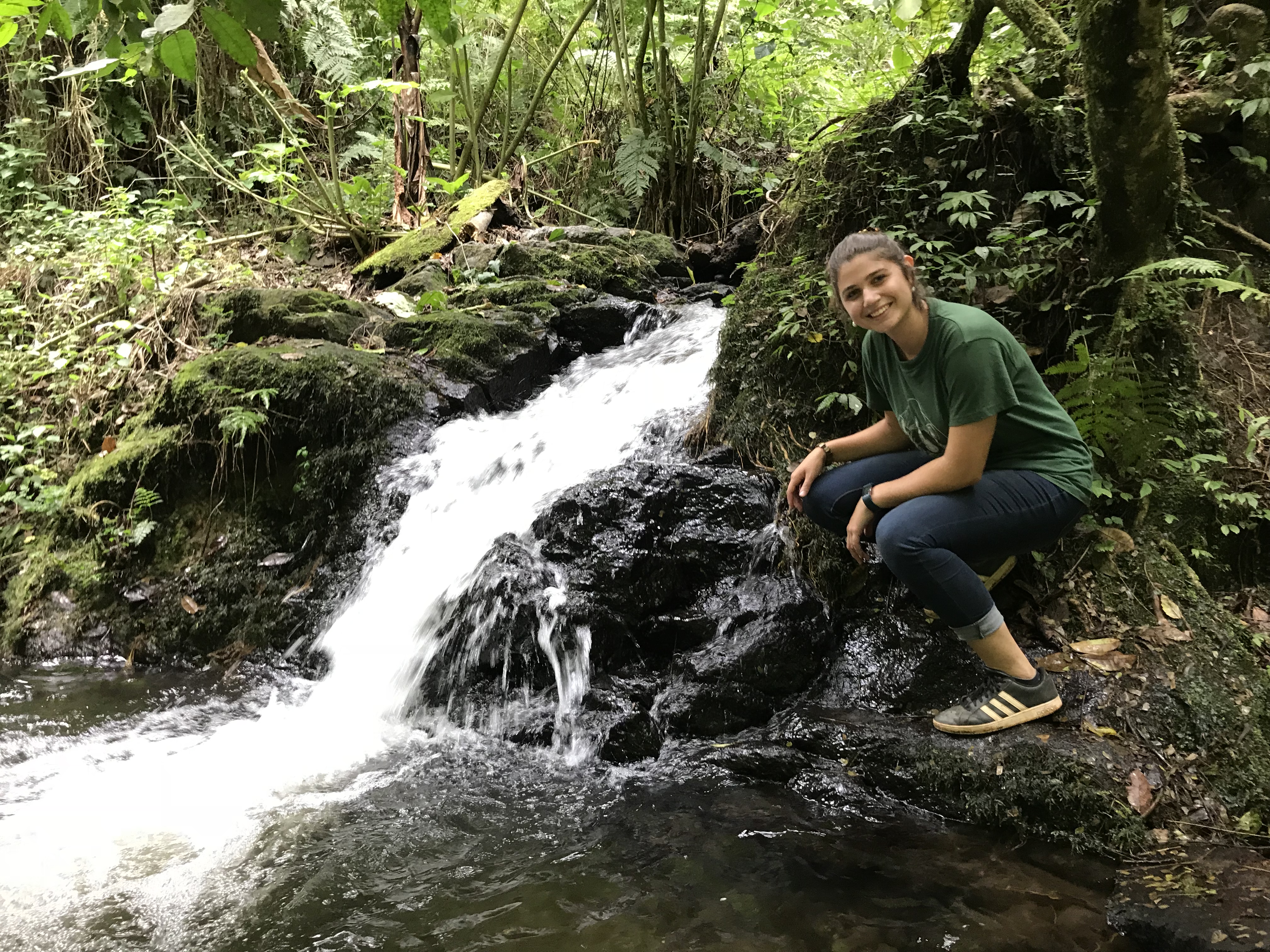 Enjoying nature throughout the way
Enjoying nature throughout the way 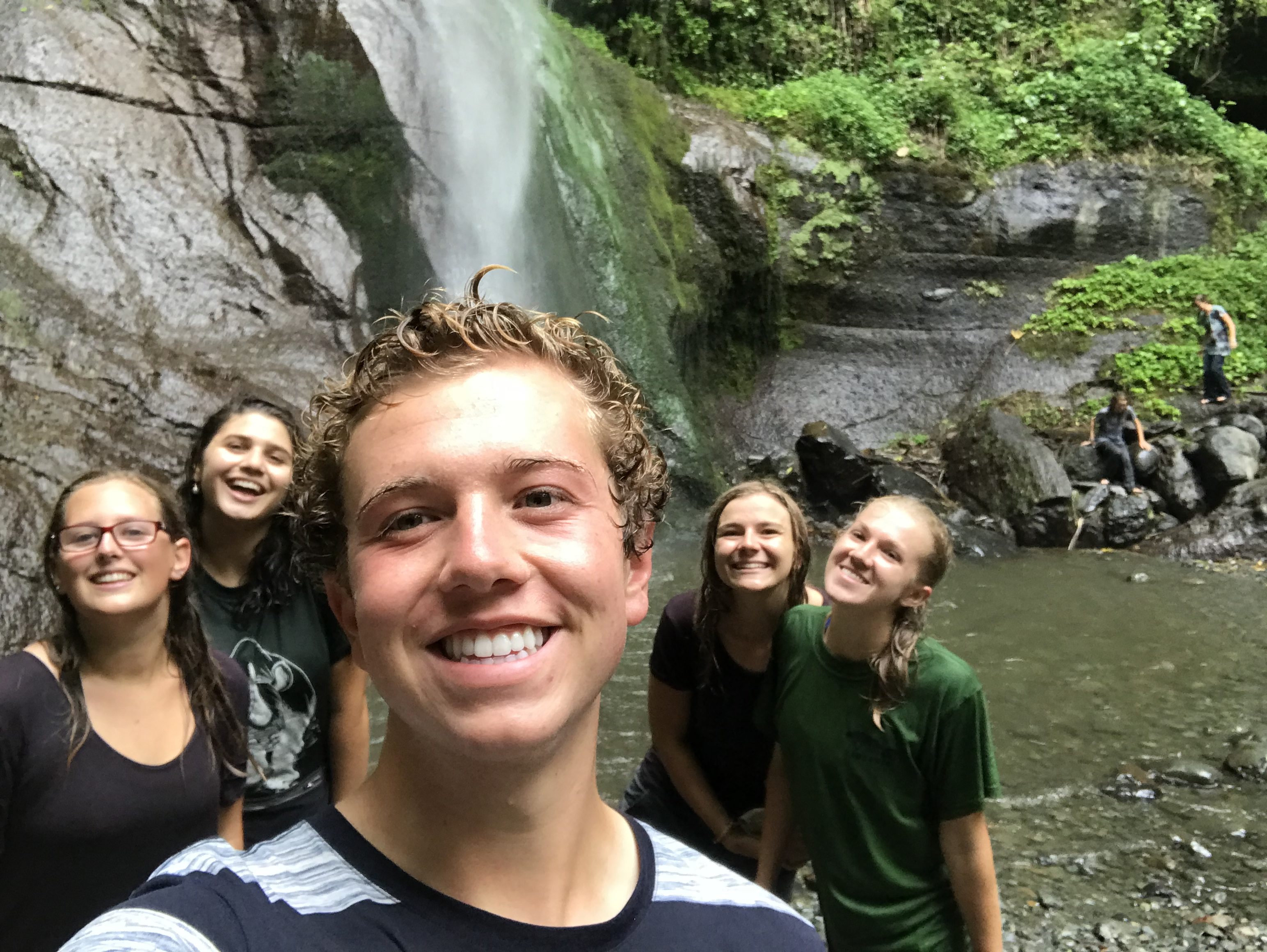 Still happy after walking into a waterfall and getting fully soaked
Still happy after walking into a waterfall and getting fully soaked 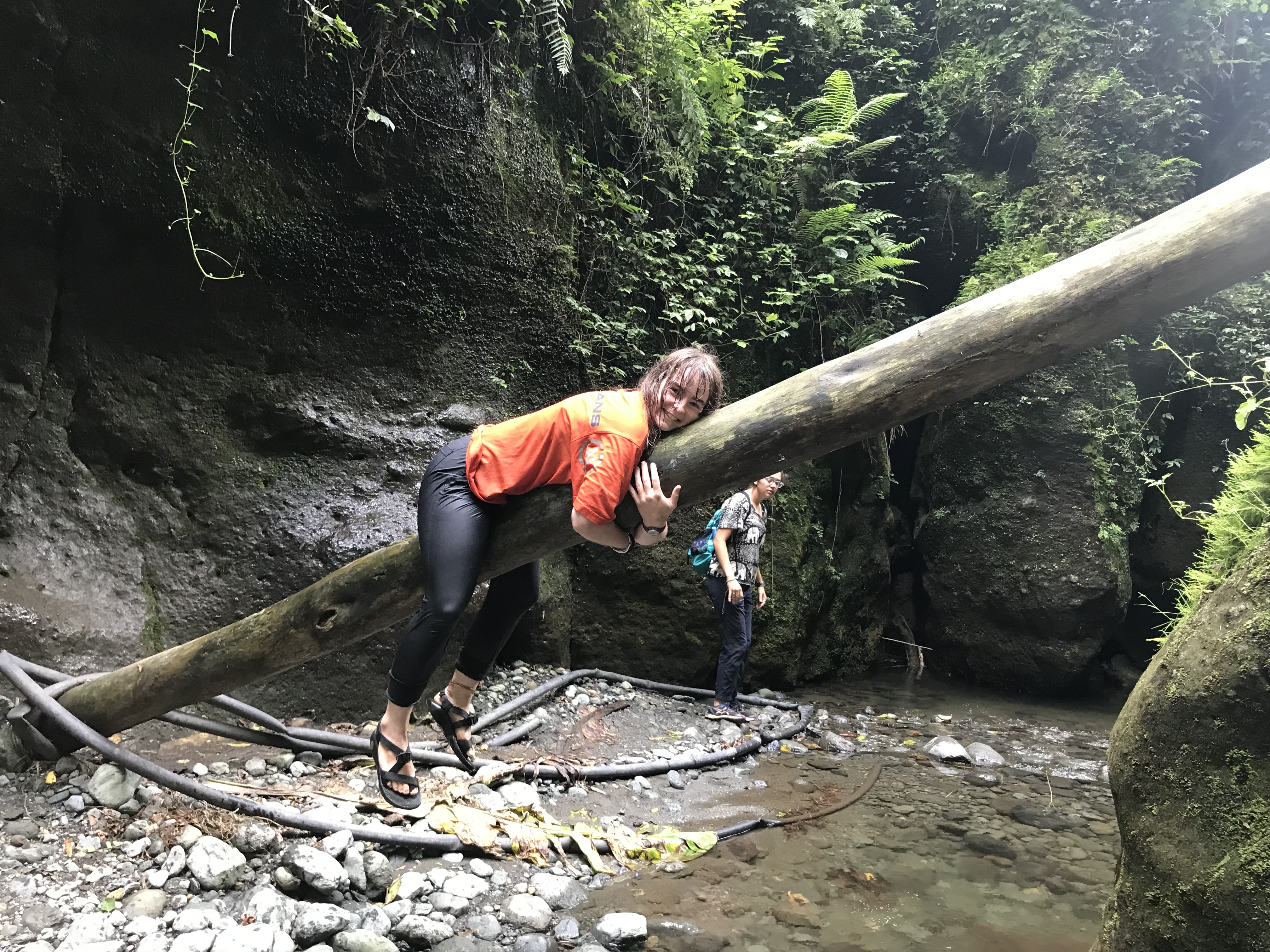 Lucy being so one with nature
Lucy being so one with nature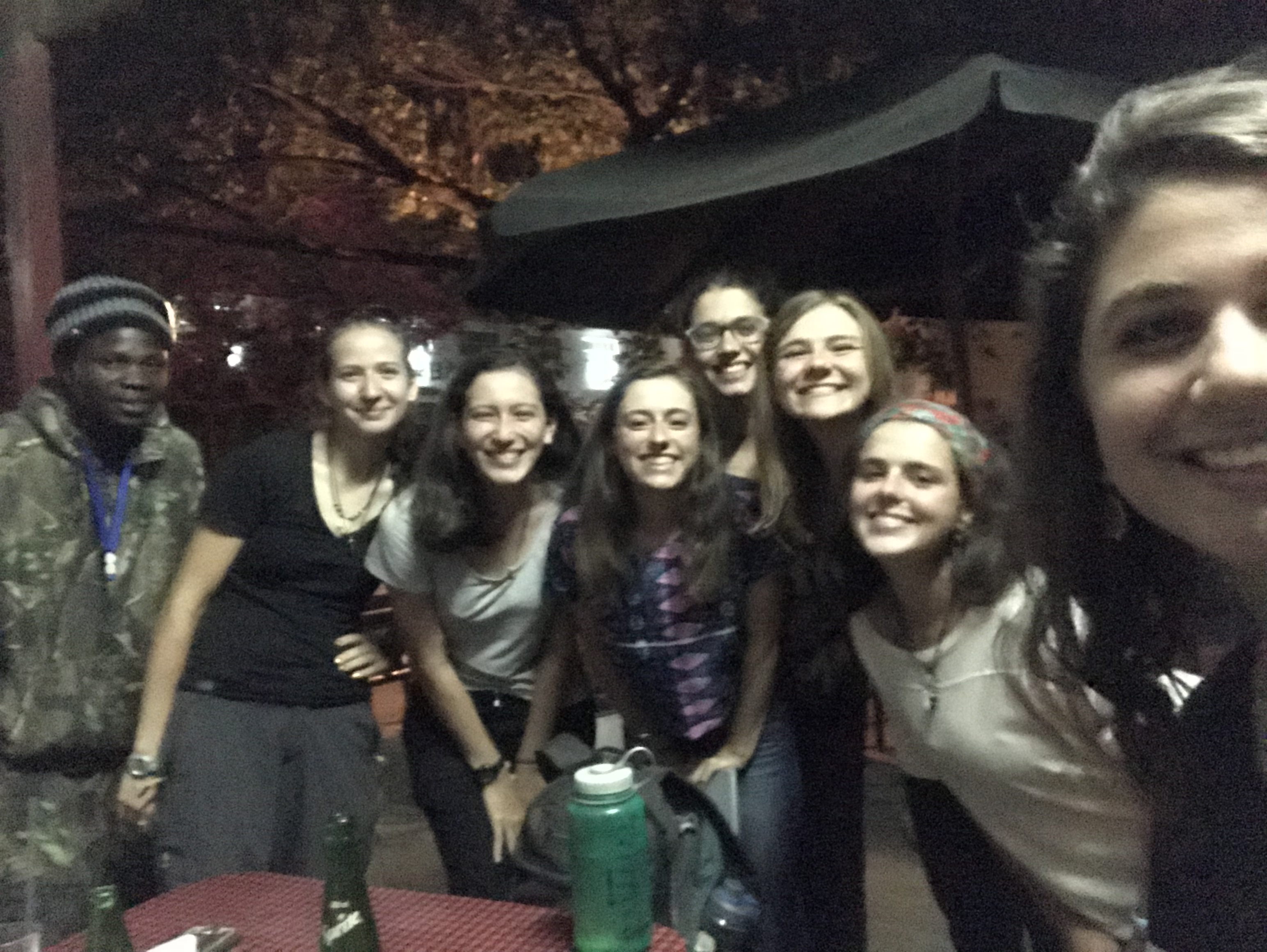 After a long day, Karaoke night with friends
After a long day, Karaoke night with friends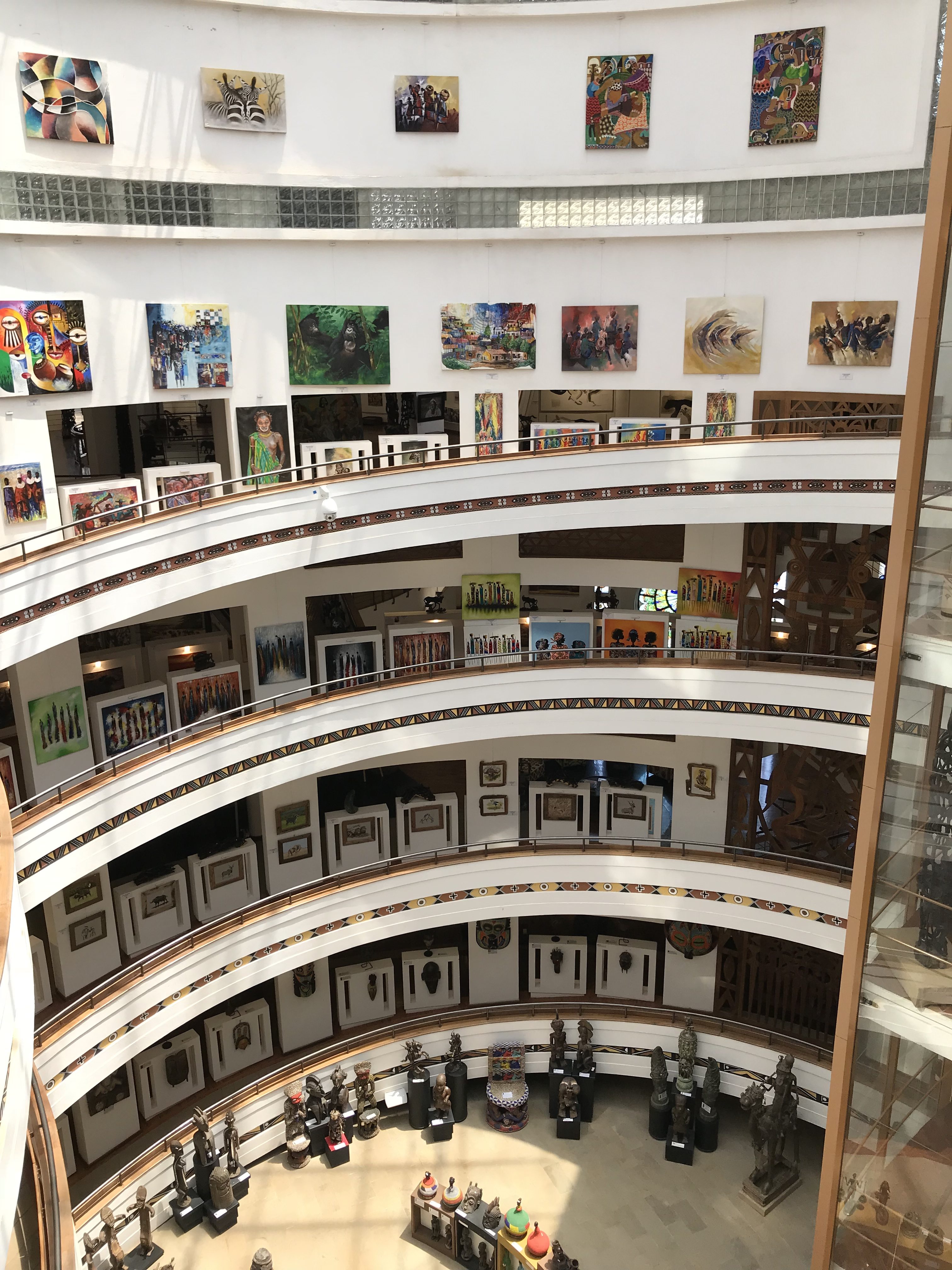 This place was huge and each floor was so different from the other!
This place was huge and each floor was so different from the other!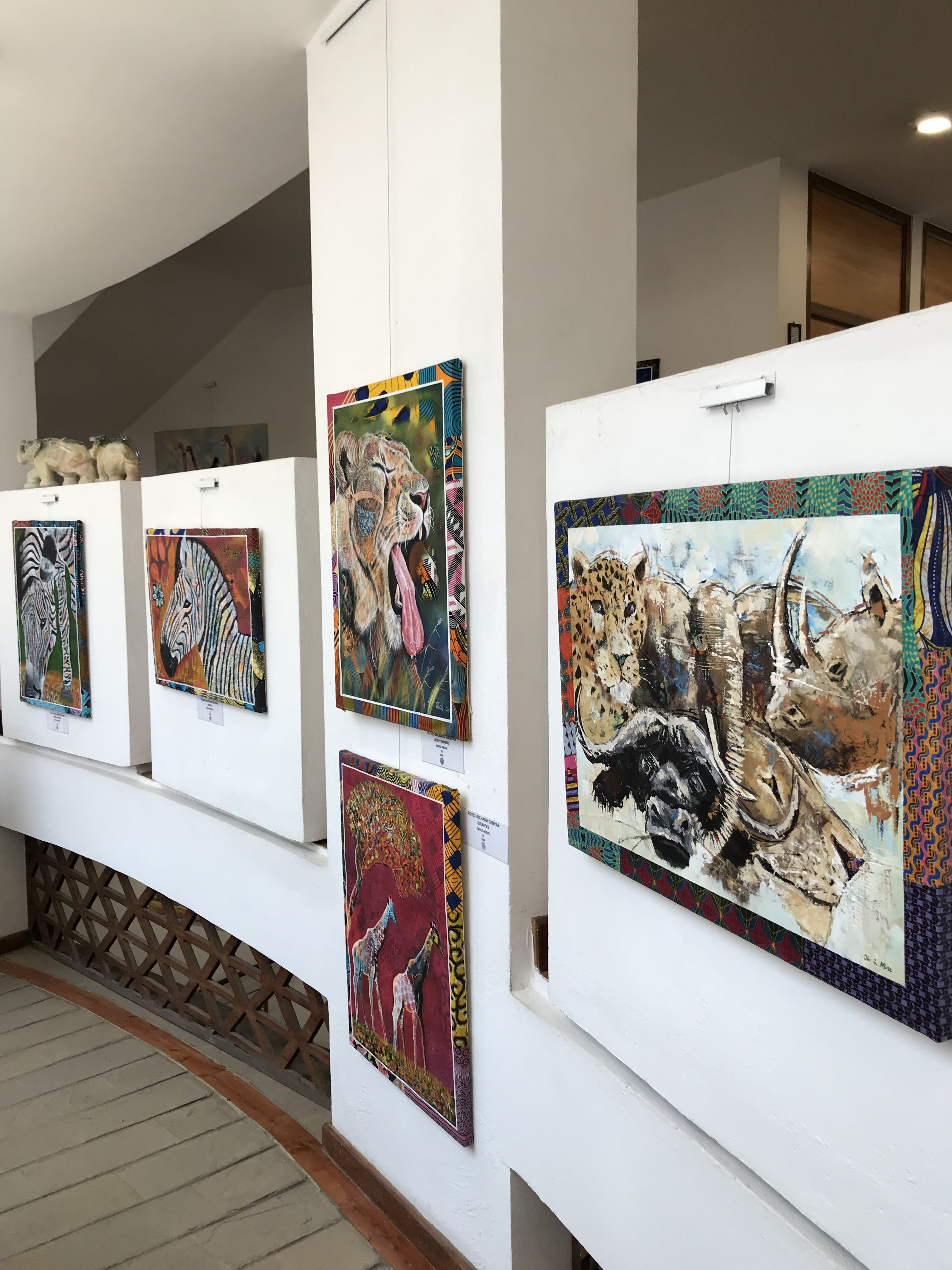 Some of my favorite painting at the exhibit
Some of my favorite painting at the exhibit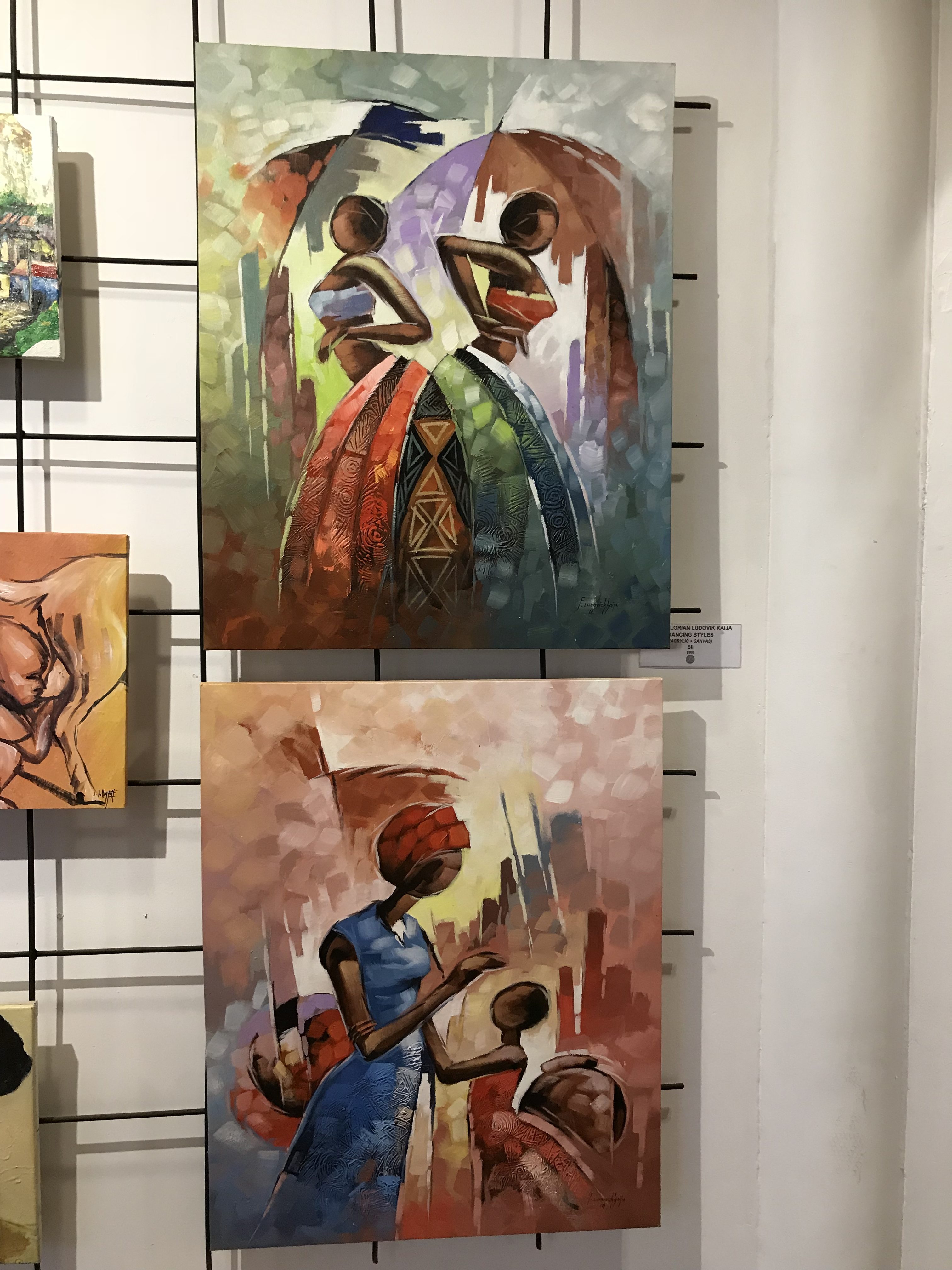 Such unique techniques to creating these beautiful pieces
Such unique techniques to creating these beautiful pieces My absolute favorite in the building, the artist incorporated tradition kitenge fabric in their artwork to illustrate the nature and traditions of this country
My absolute favorite in the building, the artist incorporated tradition kitenge fabric in their artwork to illustrate the nature and traditions of this country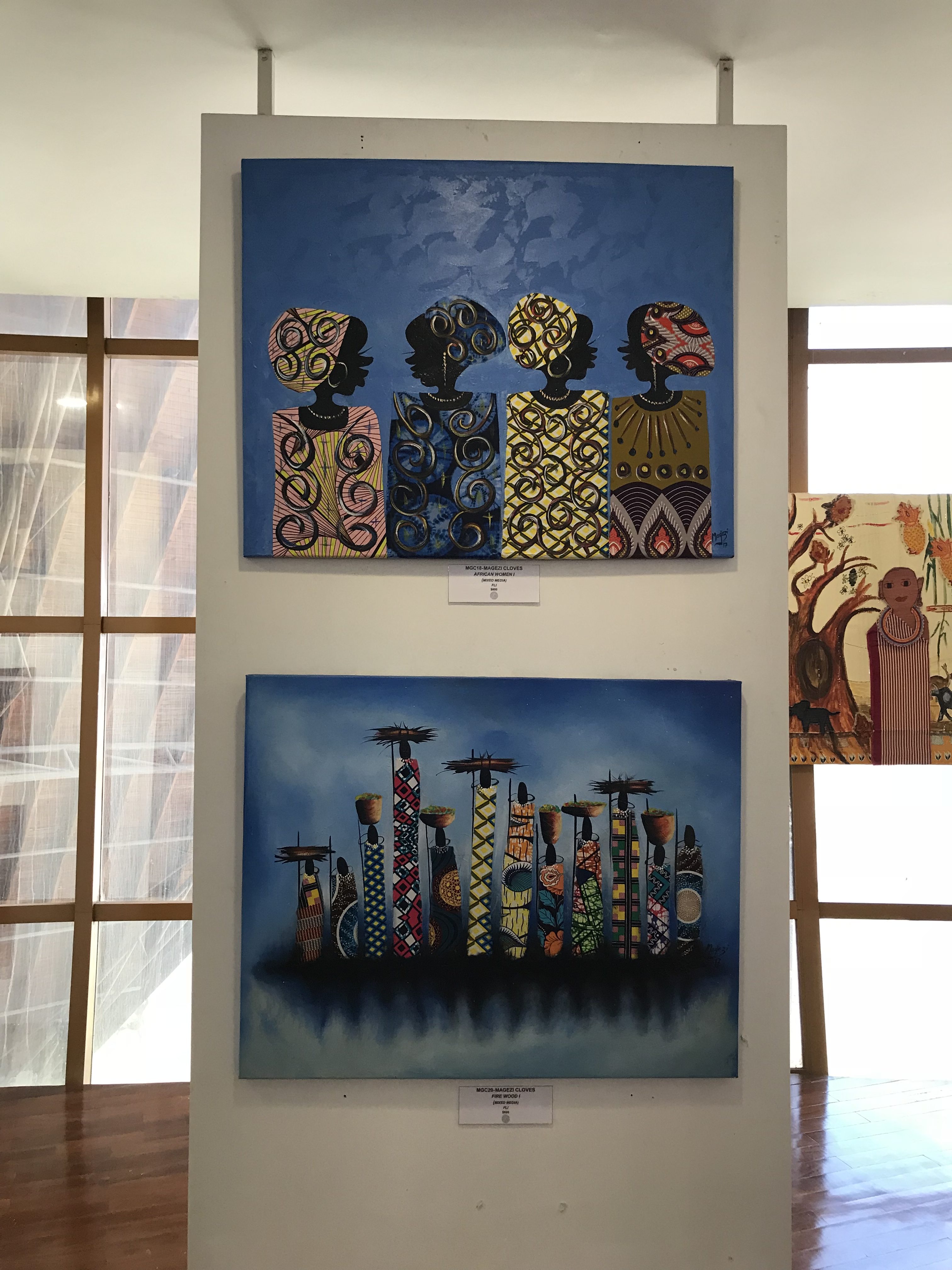 Again, combining fabric and painting so much creativity!
Again, combining fabric and painting so much creativity!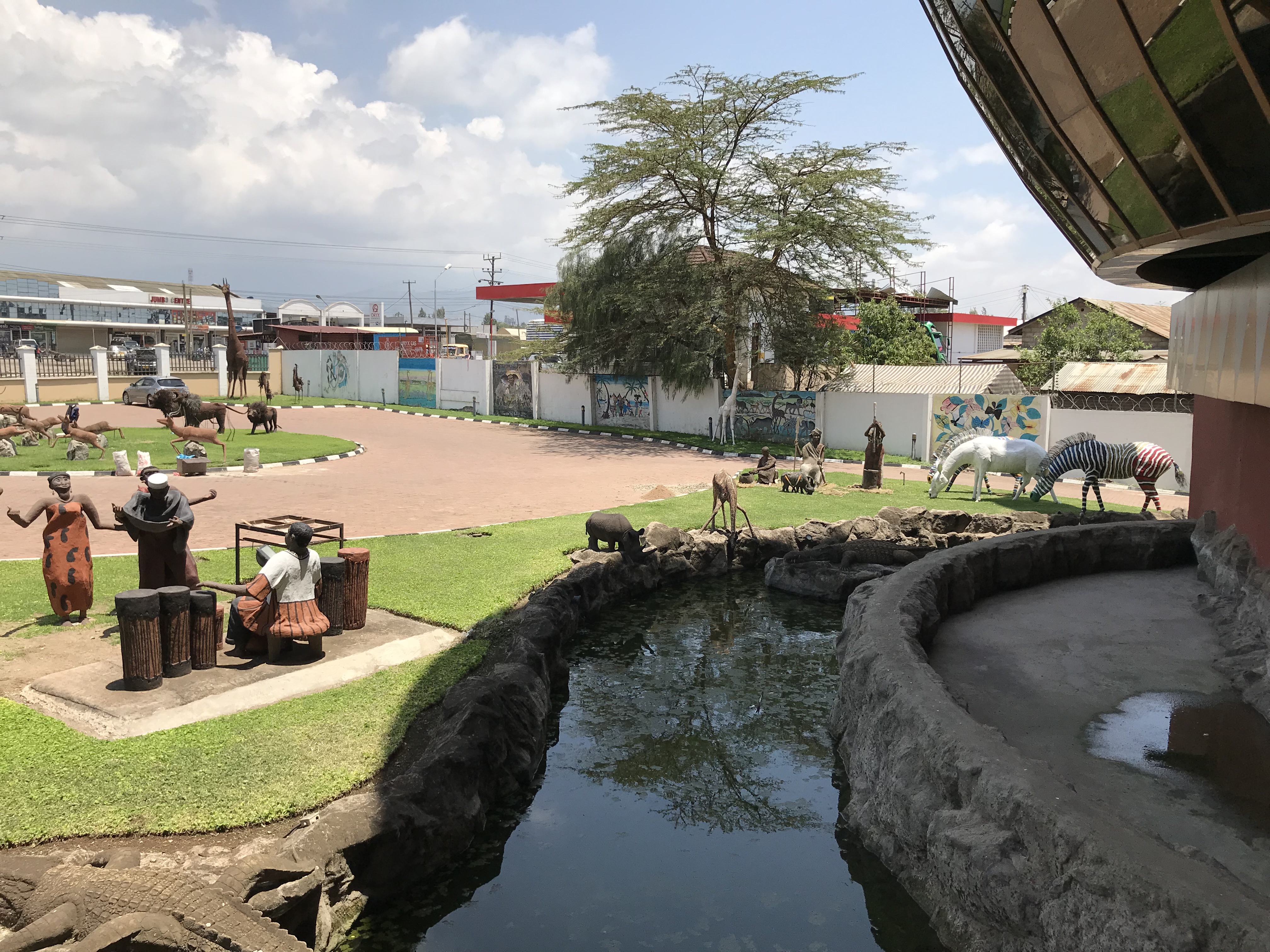 Not only did I walk through 5 stories of beautiful artwork, I come it to this!
Not only did I walk through 5 stories of beautiful artwork, I come it to this!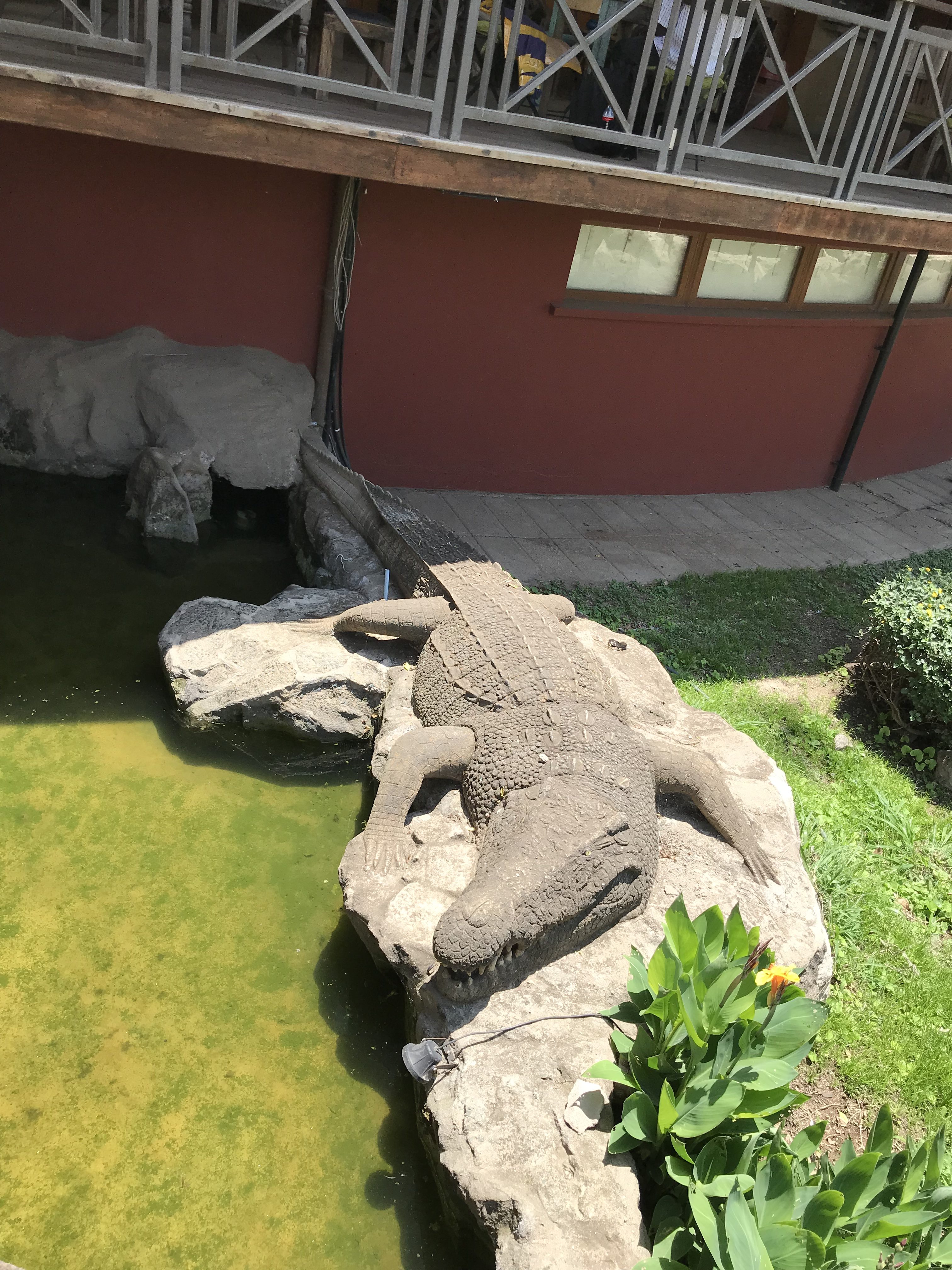 Doesn’t this look so real! It’s all carved out from wood, so much detail!!!
Doesn’t this look so real! It’s all carved out from wood, so much detail!!!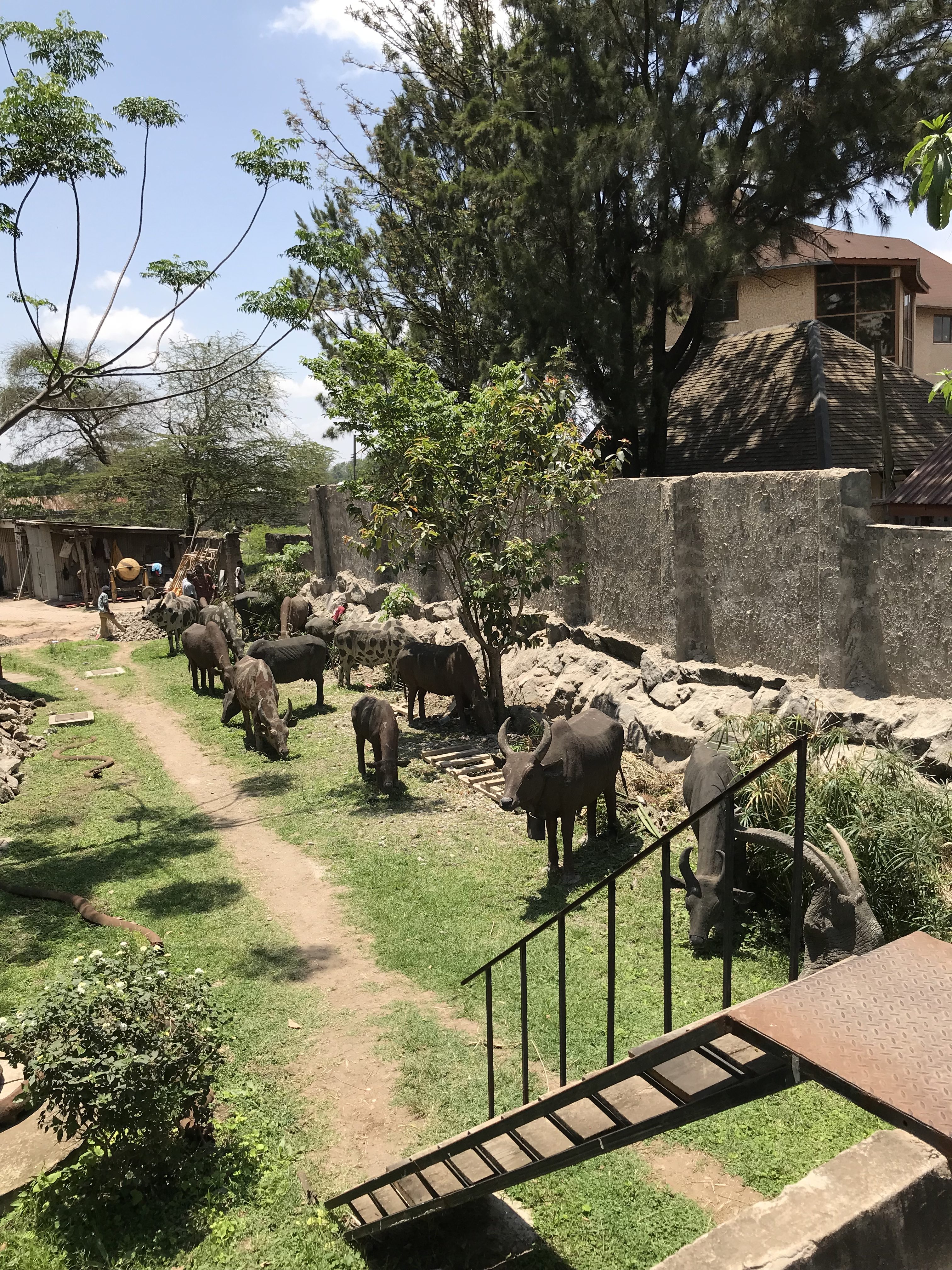 Again the diversity of artwork in one space was mind blowing for me and my friends… would definitely recommend visiting if you ever have the chance!
Again the diversity of artwork in one space was mind blowing for me and my friends… would definitely recommend visiting if you ever have the chance!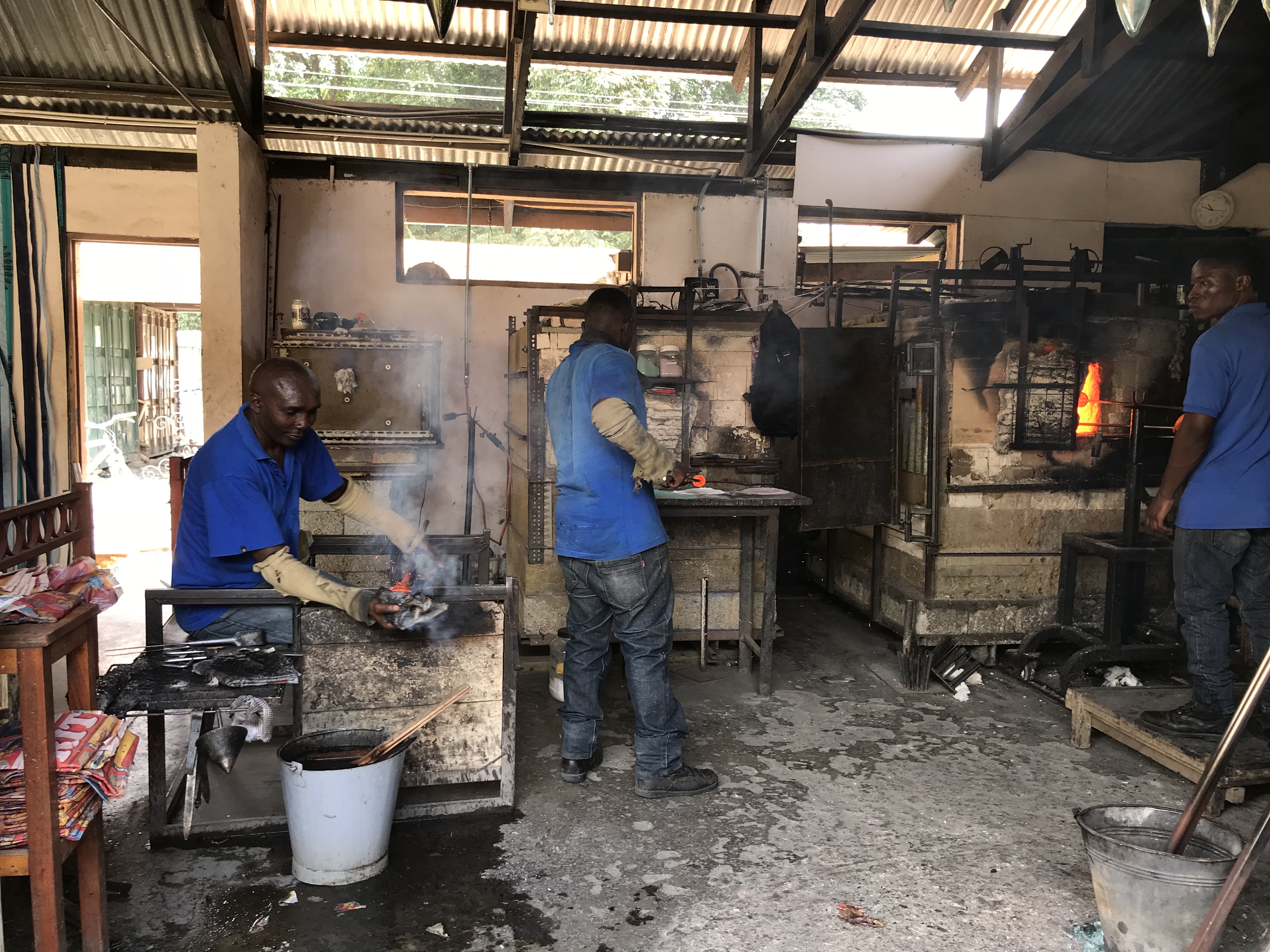 The beginning of the process to make a vase
The beginning of the process to make a vase 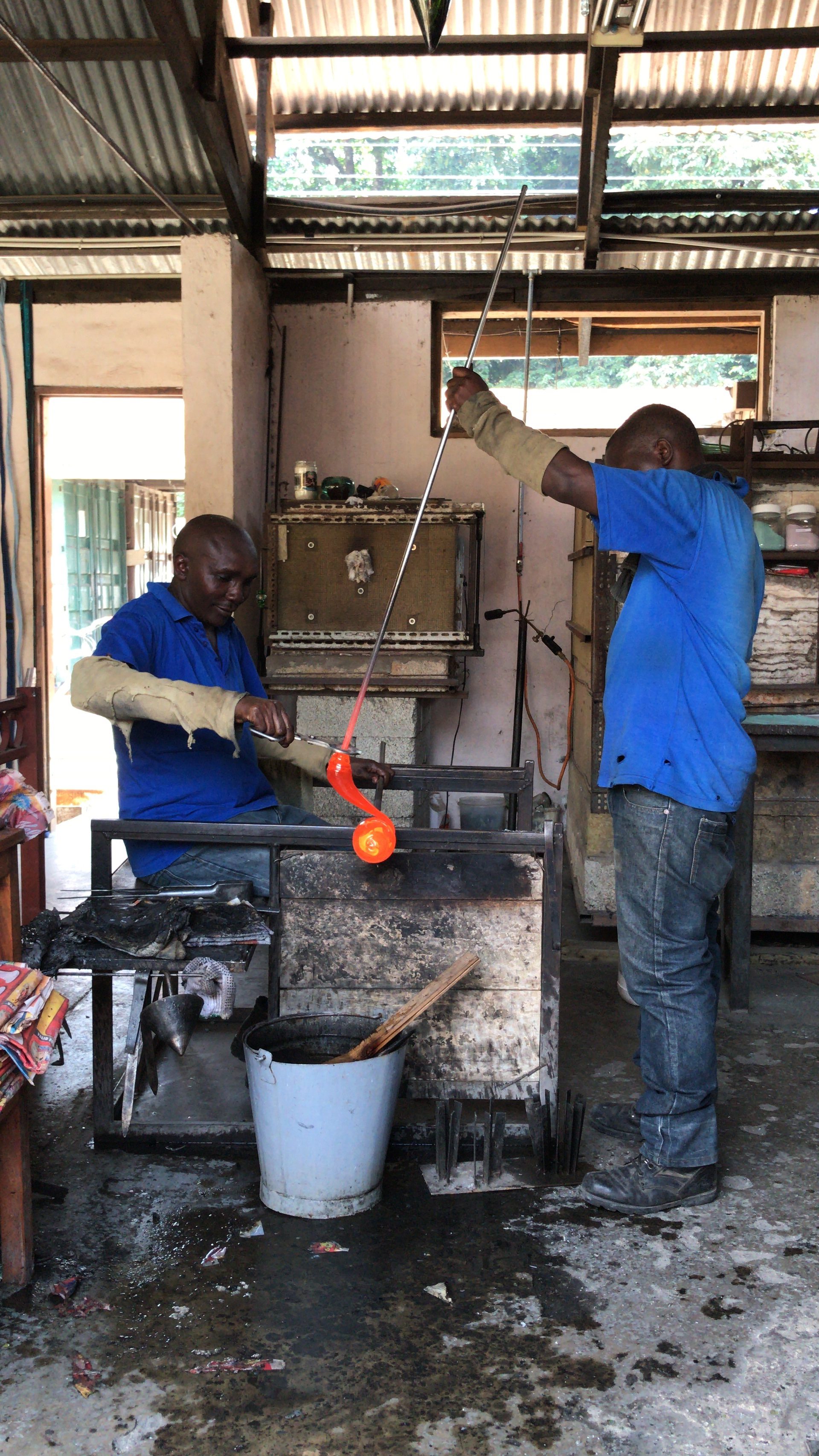 Melting glass and shaping it was so cool to see!
Melting glass and shaping it was so cool to see!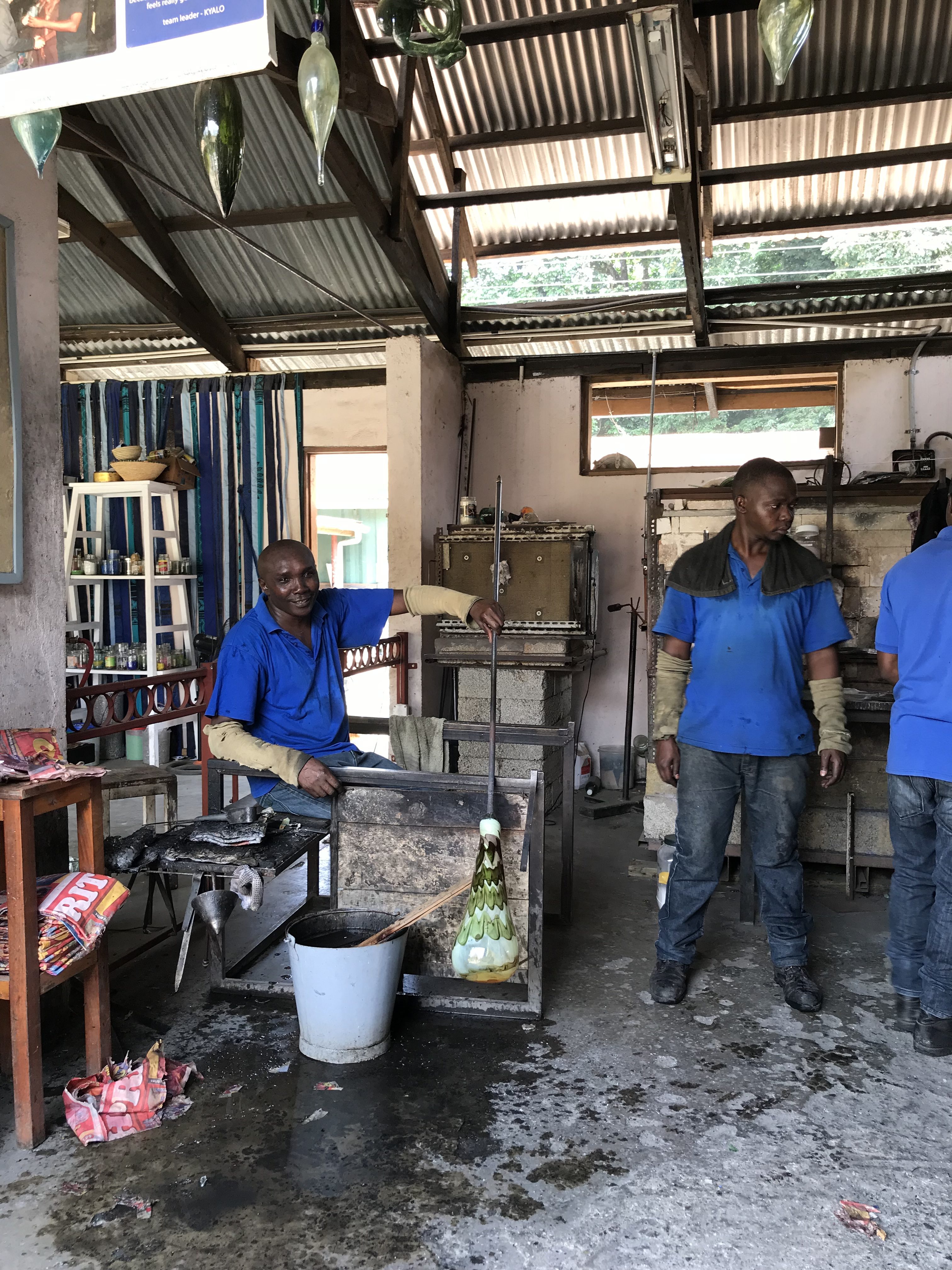 Look! it’s morphing into a vase ready to be in a home!
Look! it’s morphing into a vase ready to be in a home!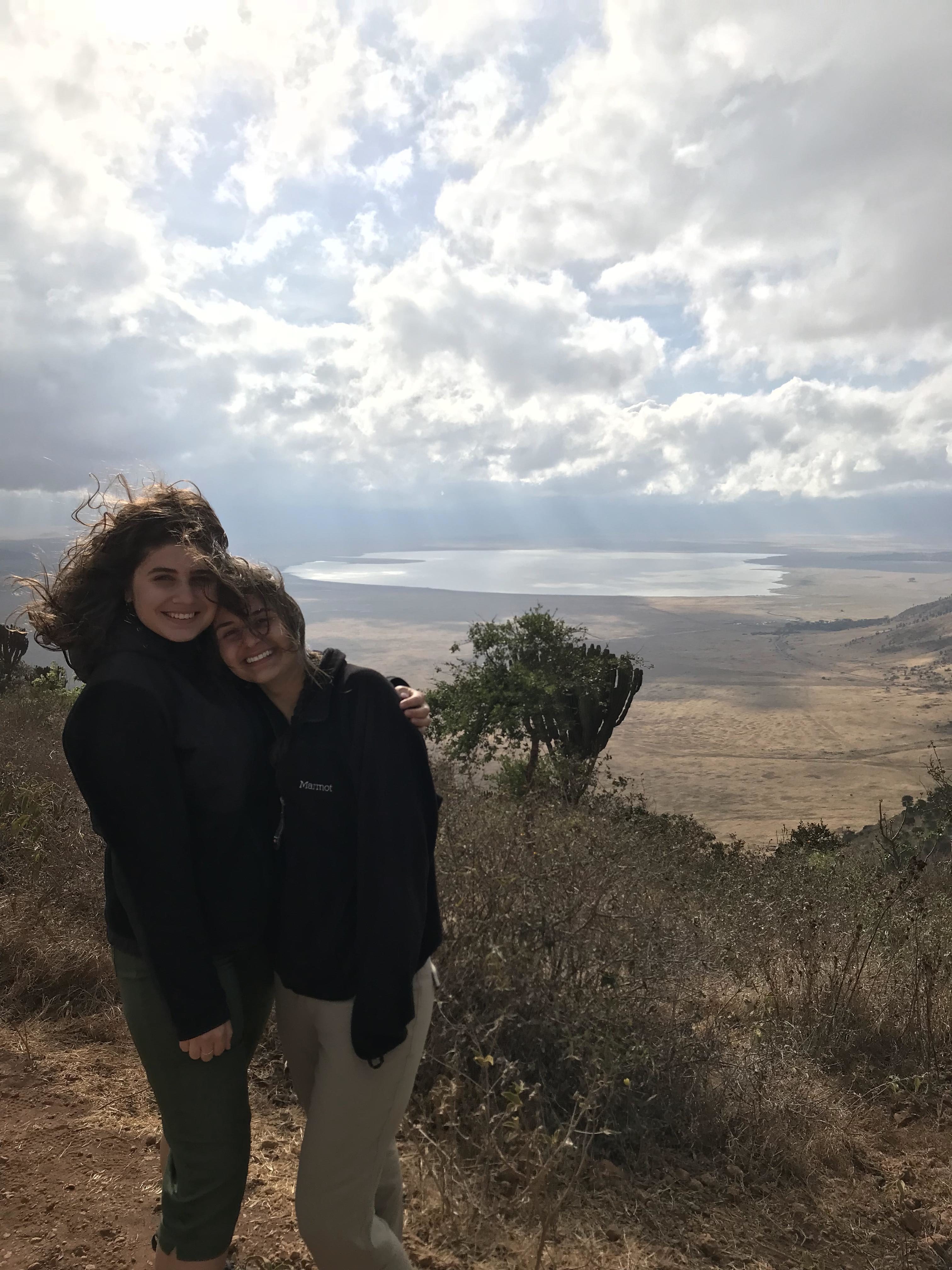 Hannah and I enjoying theses sights of the Ngorongoro Crater
Hannah and I enjoying theses sights of the Ngorongoro Crater Using the cars as shade from the sun, as the car moved, the lions followed it!
Using the cars as shade from the sun, as the car moved, the lions followed it!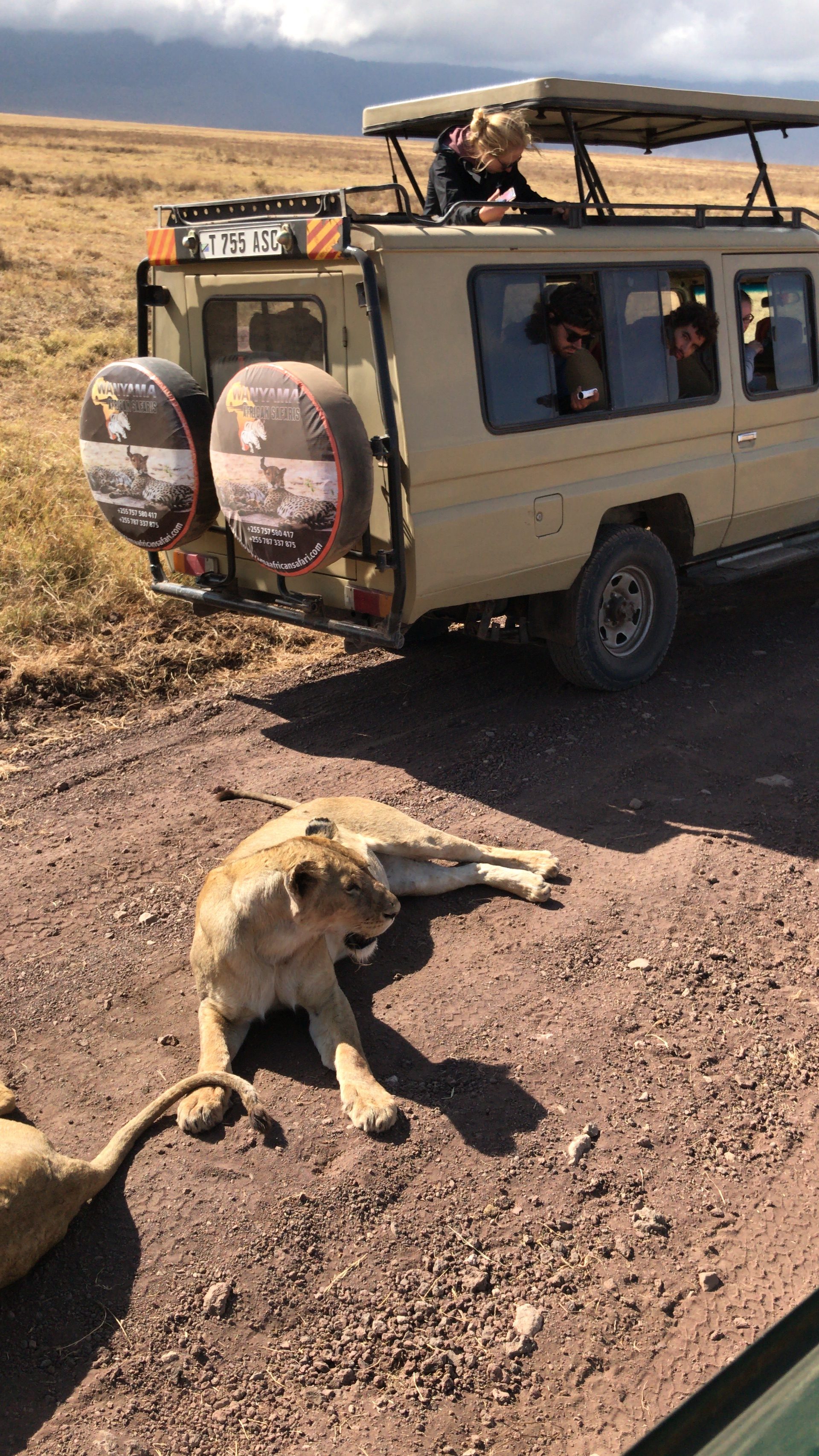 Found some simbas chilling on the road
Found some simbas chilling on the road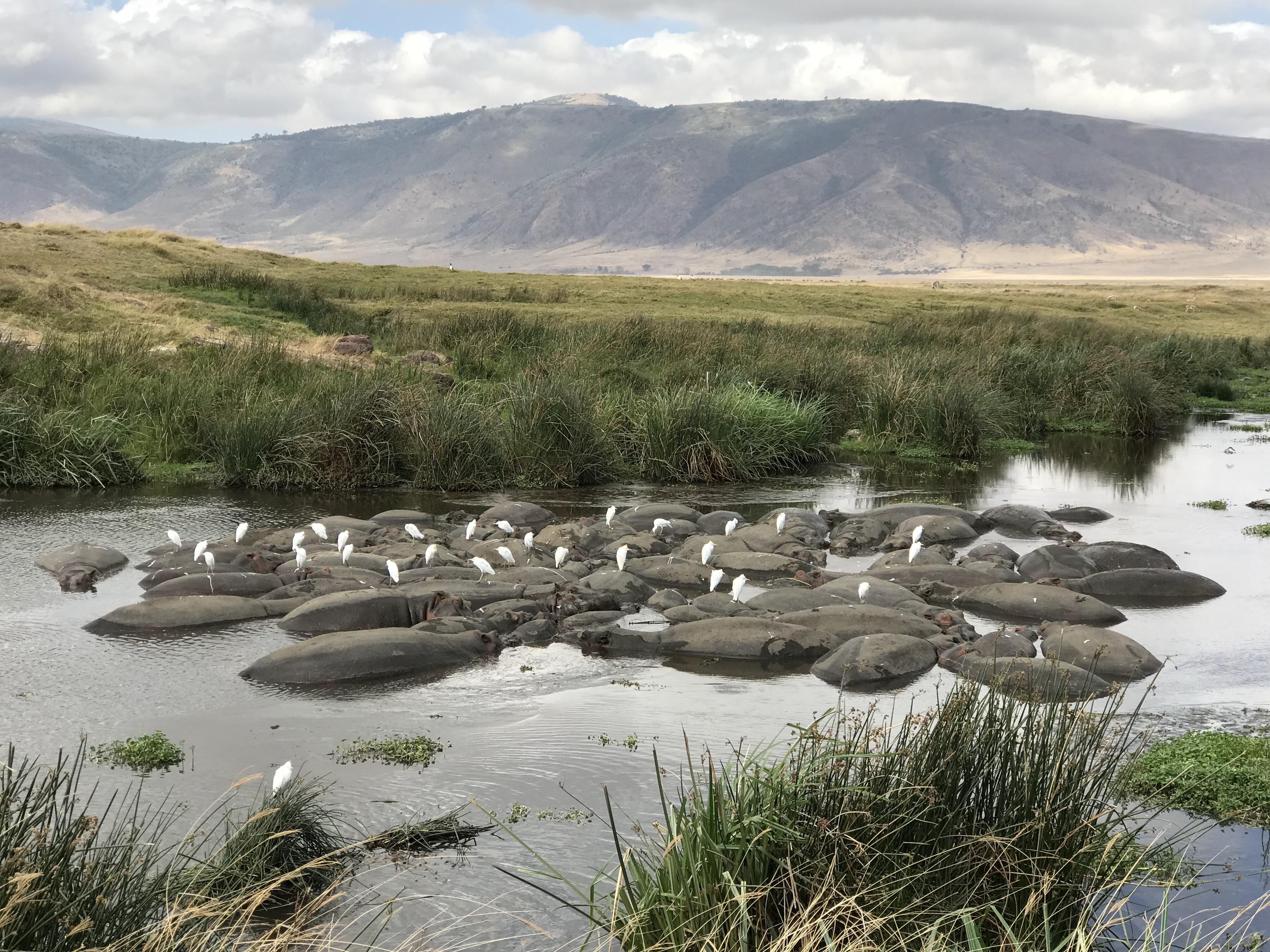 Hippo pool!
Hippo pool! 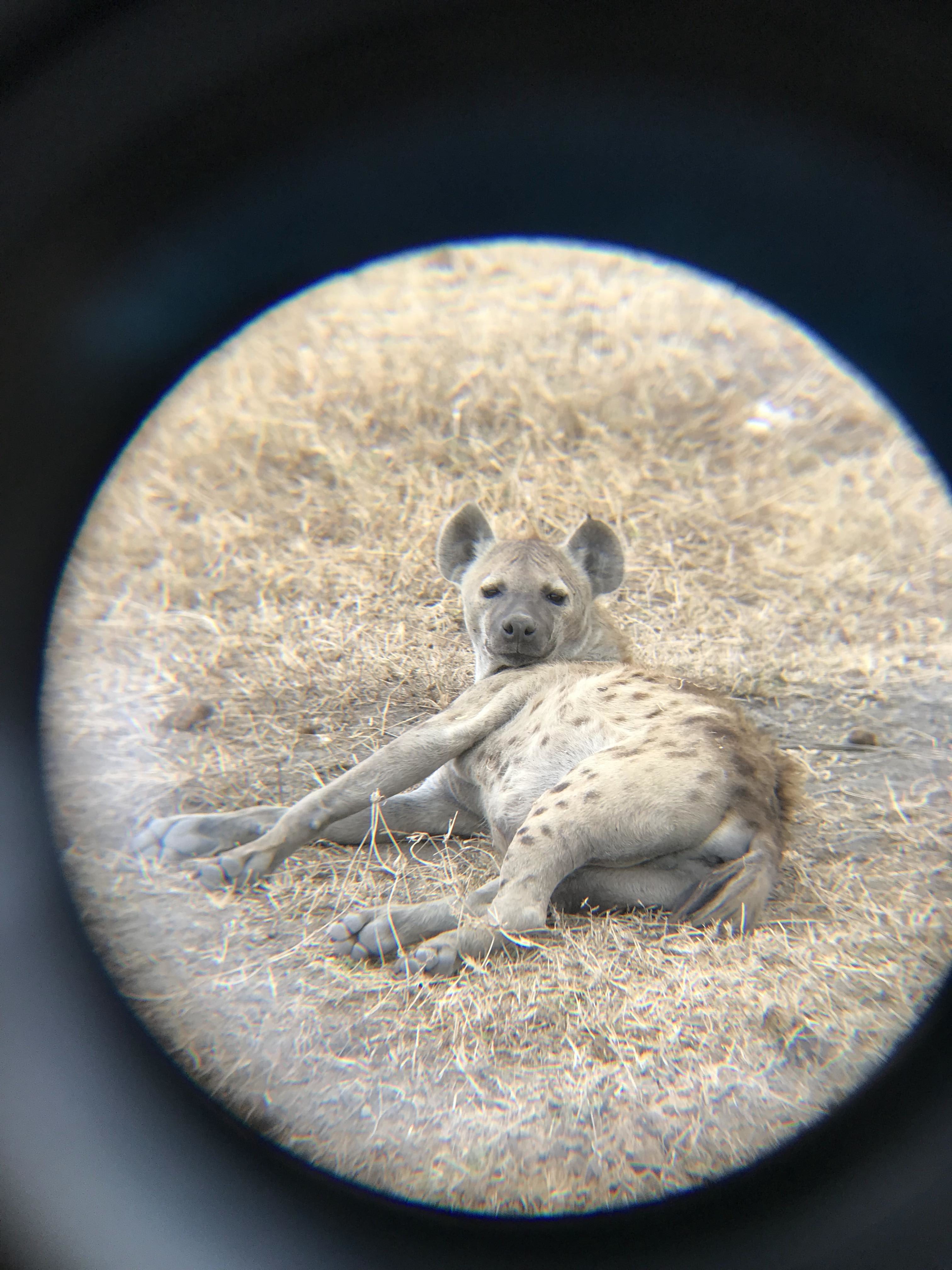 A cute shot of a Hyena taking a break from its nap to look at us
A cute shot of a Hyena taking a break from its nap to look at us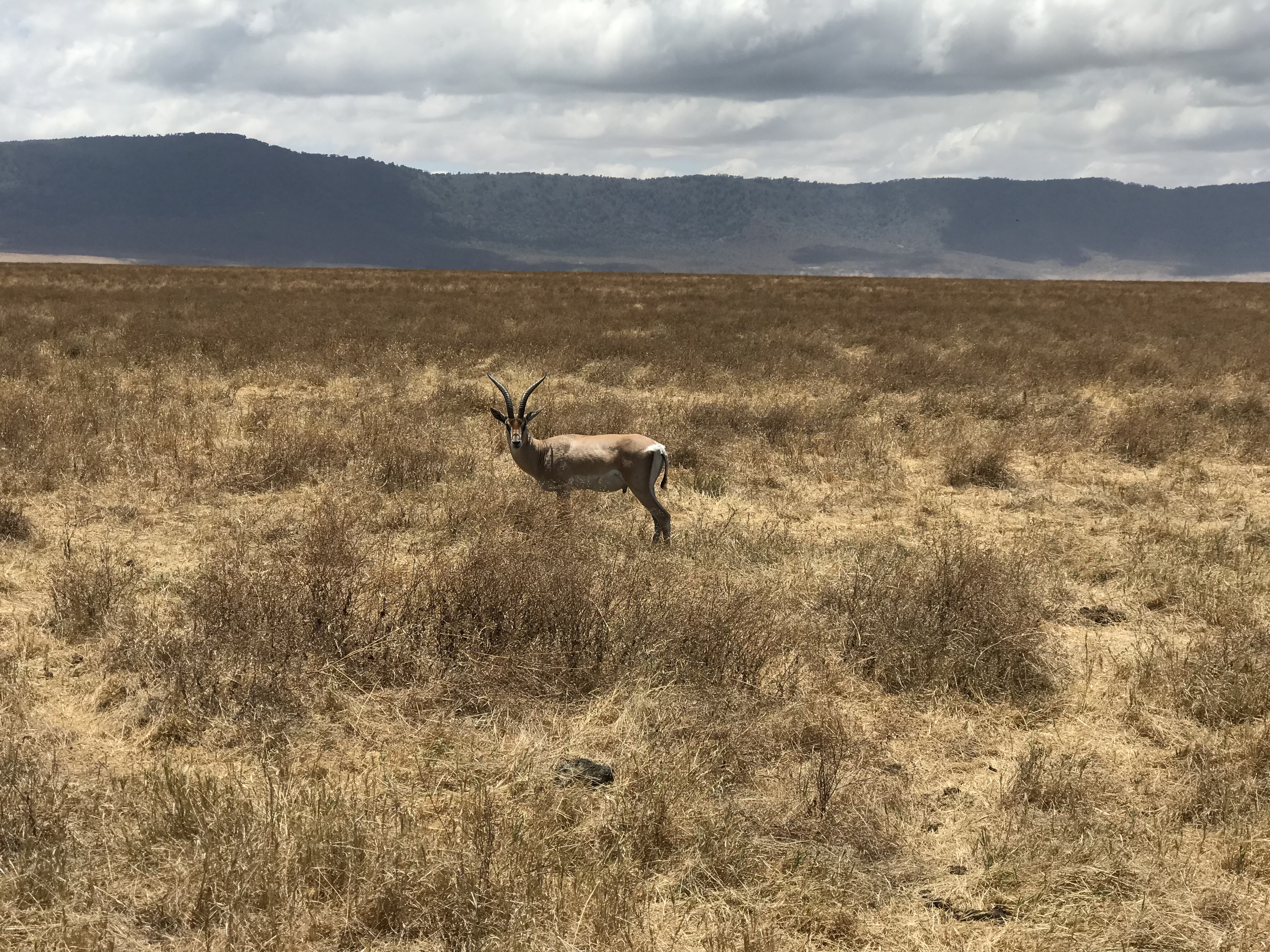
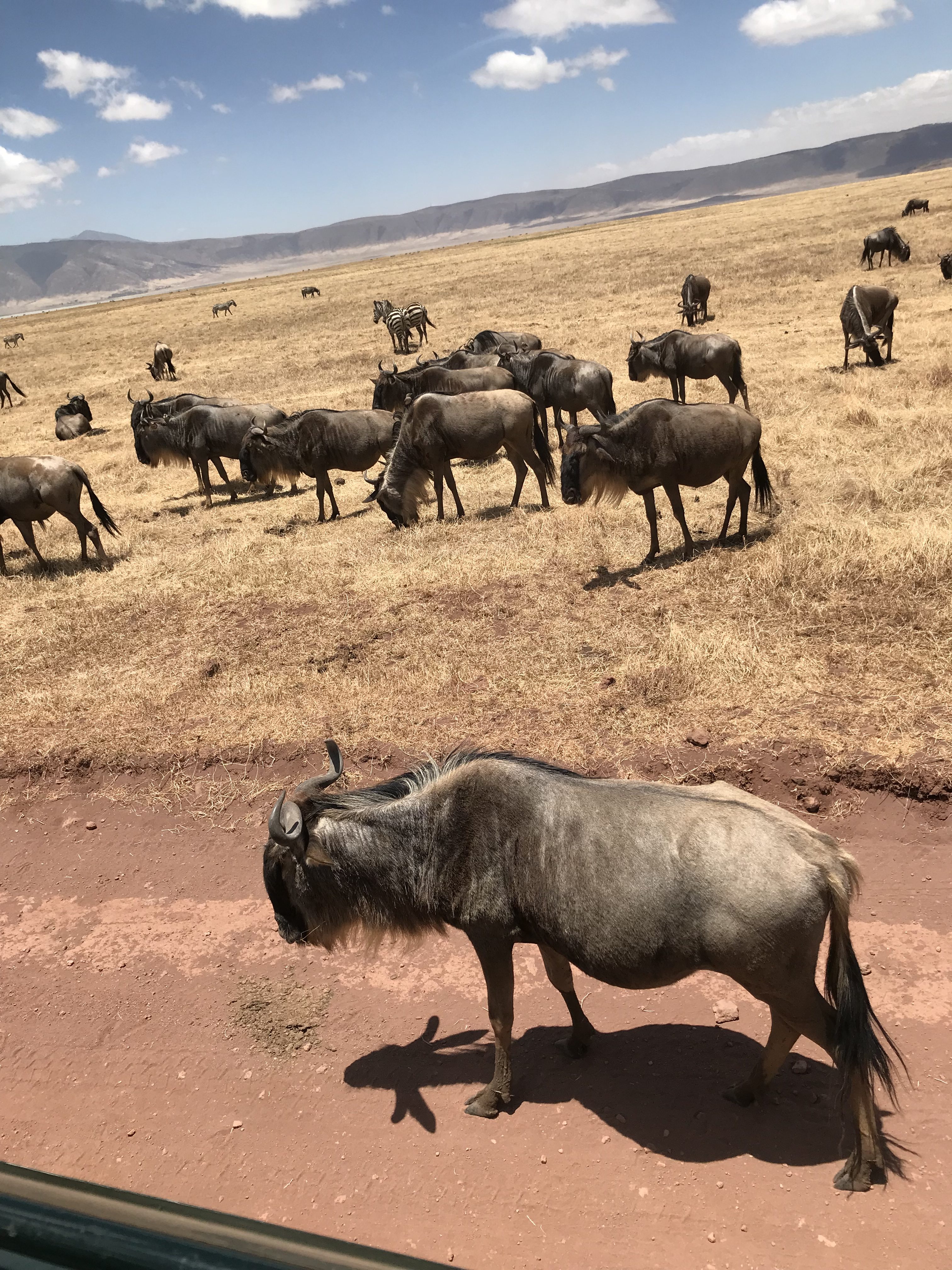
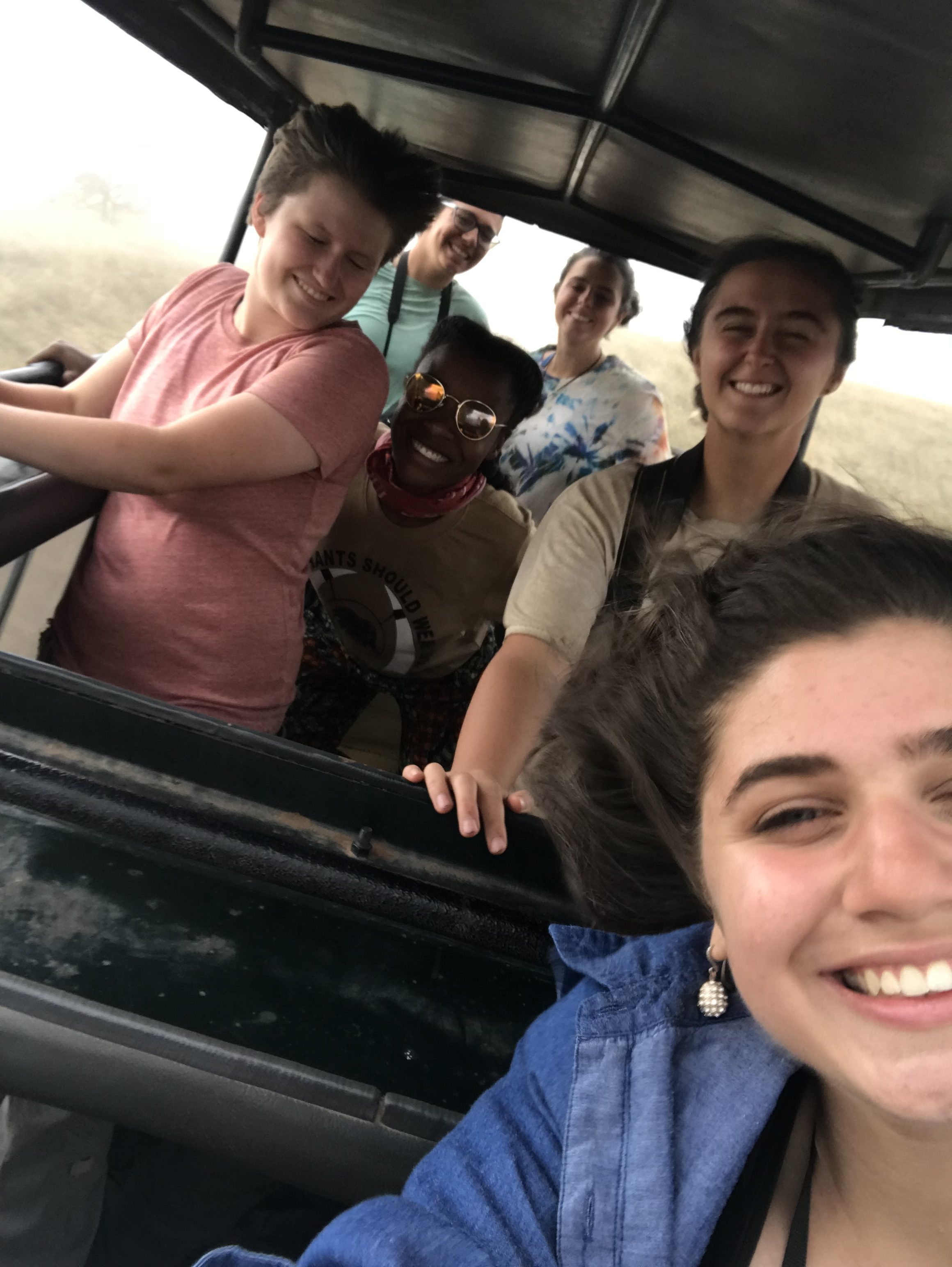
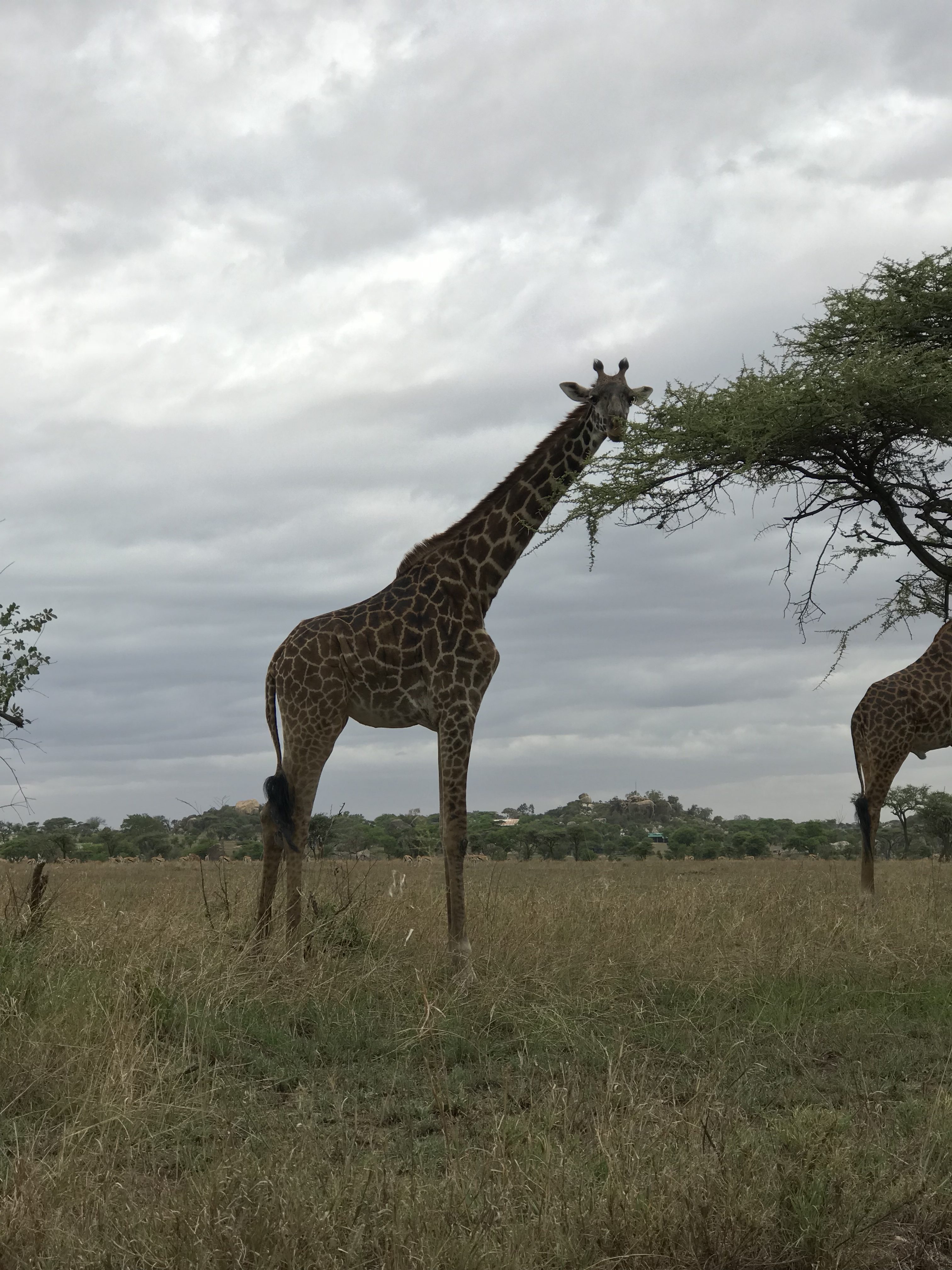
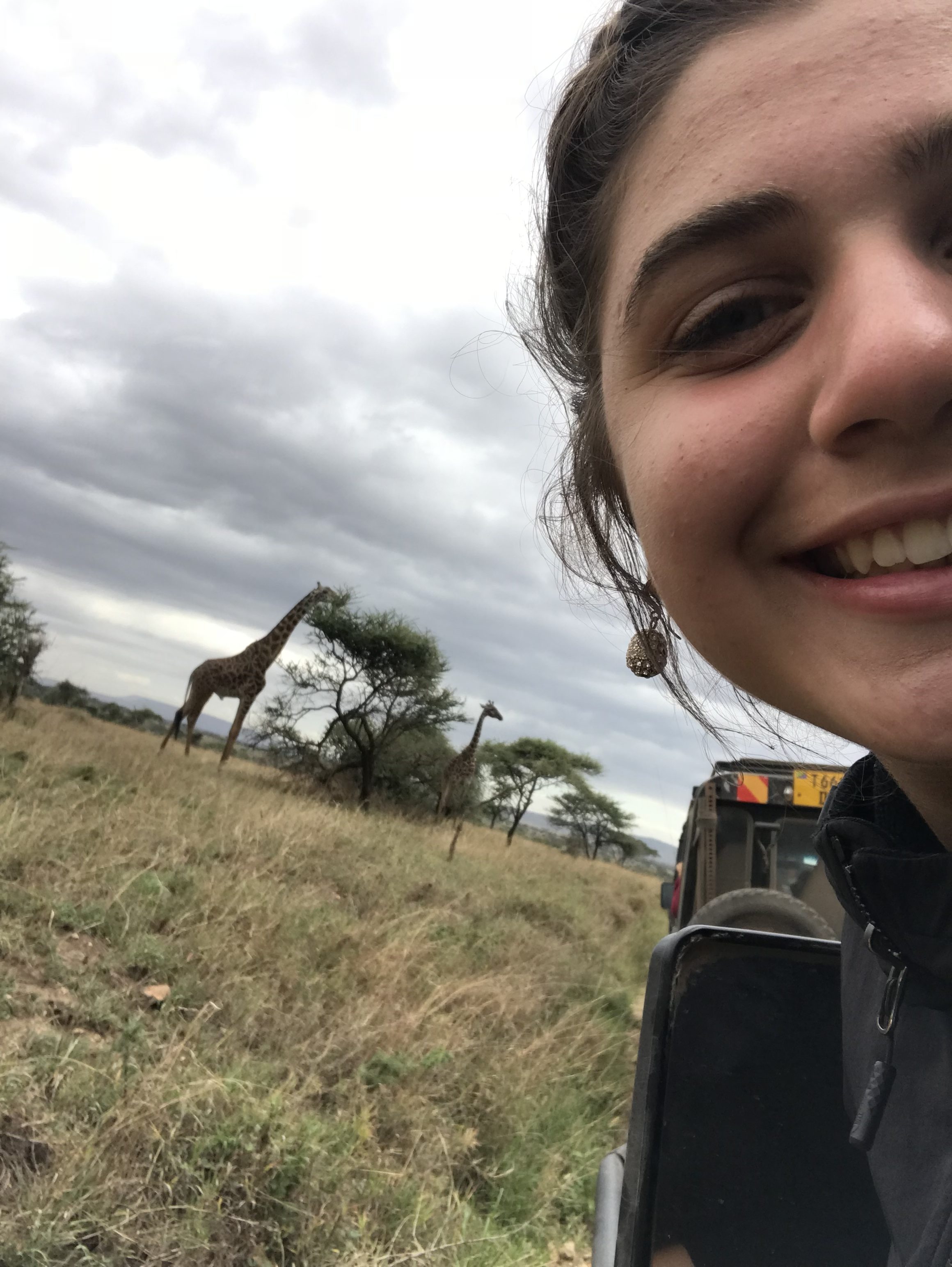
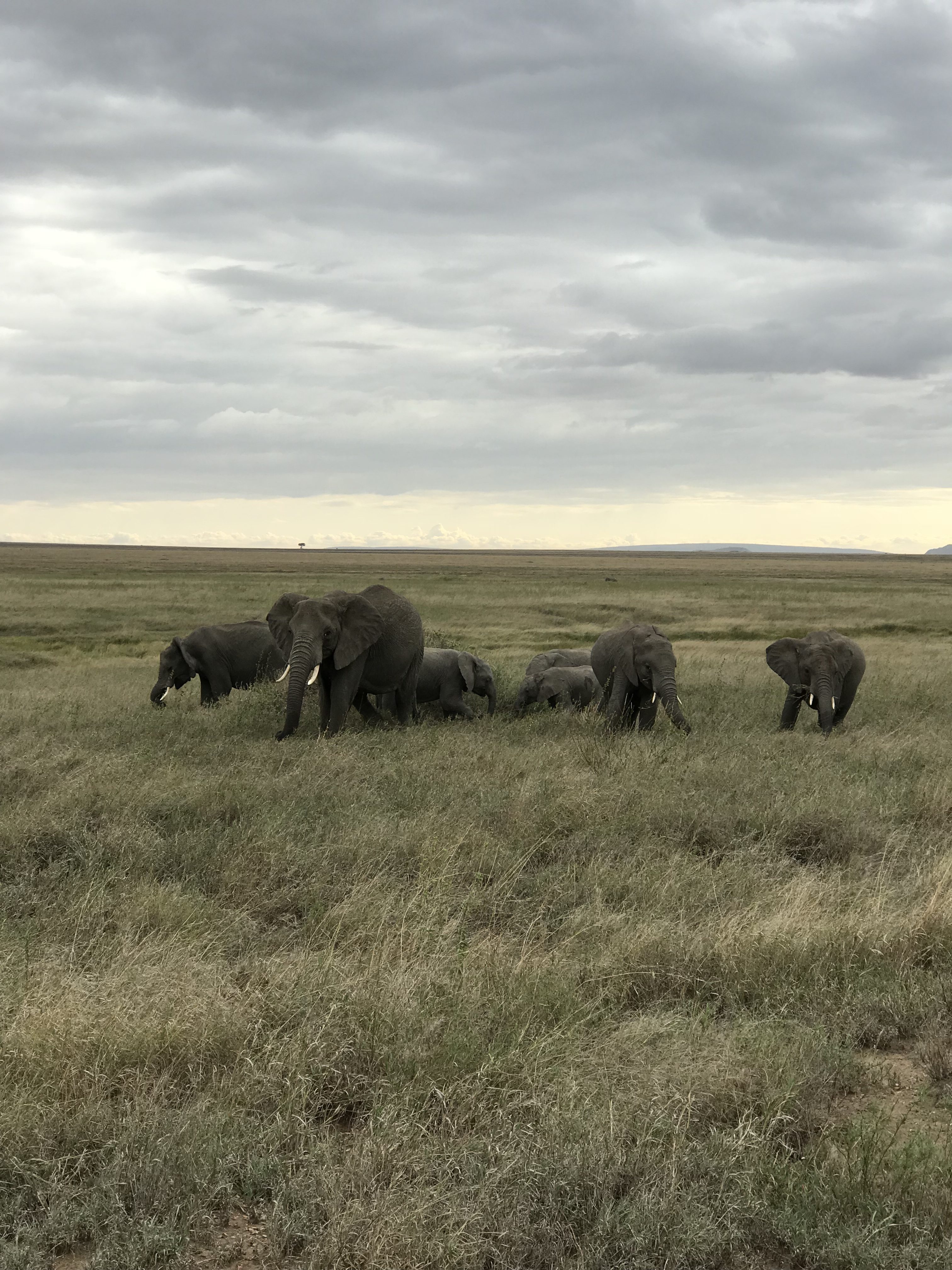
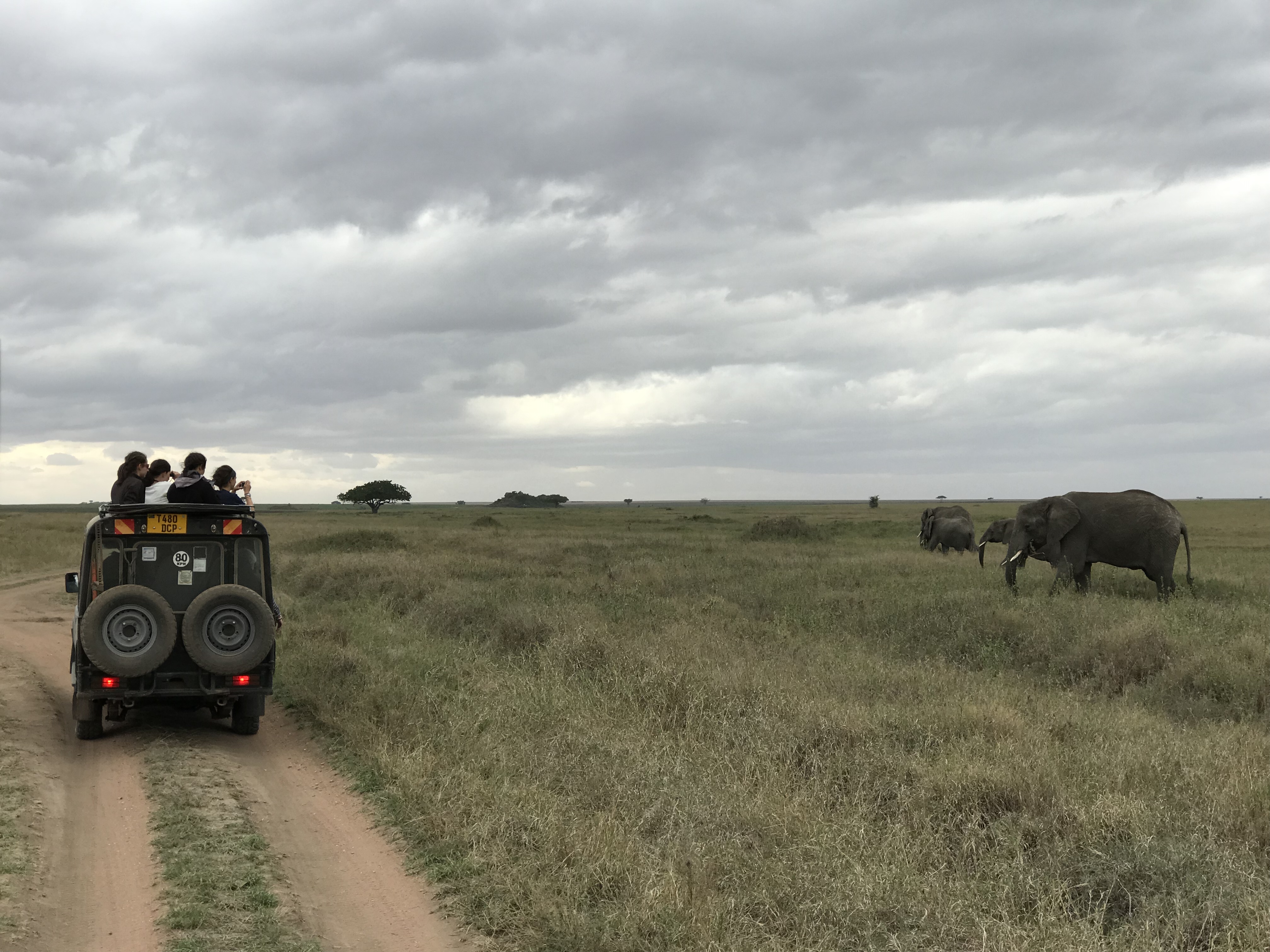
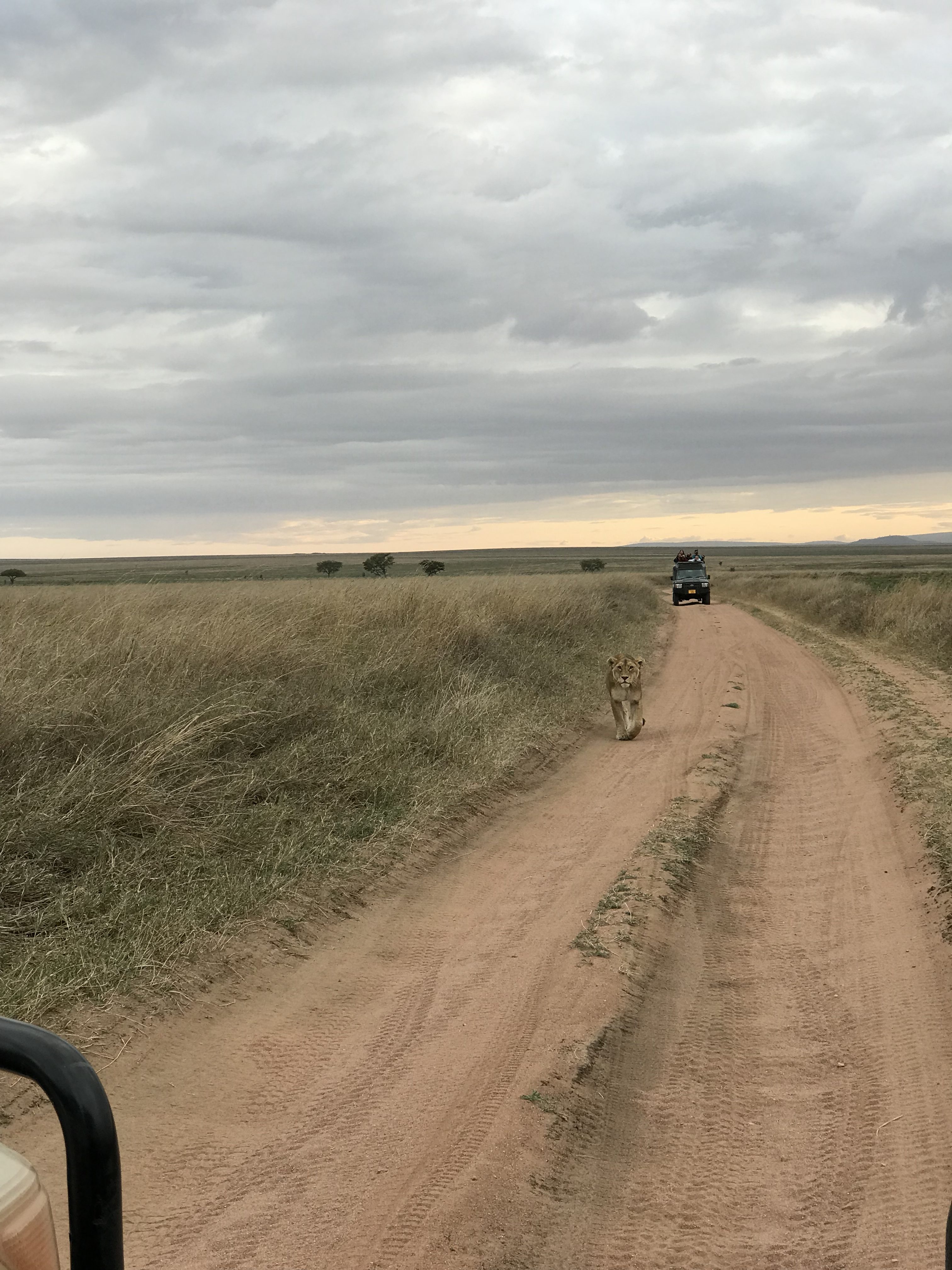
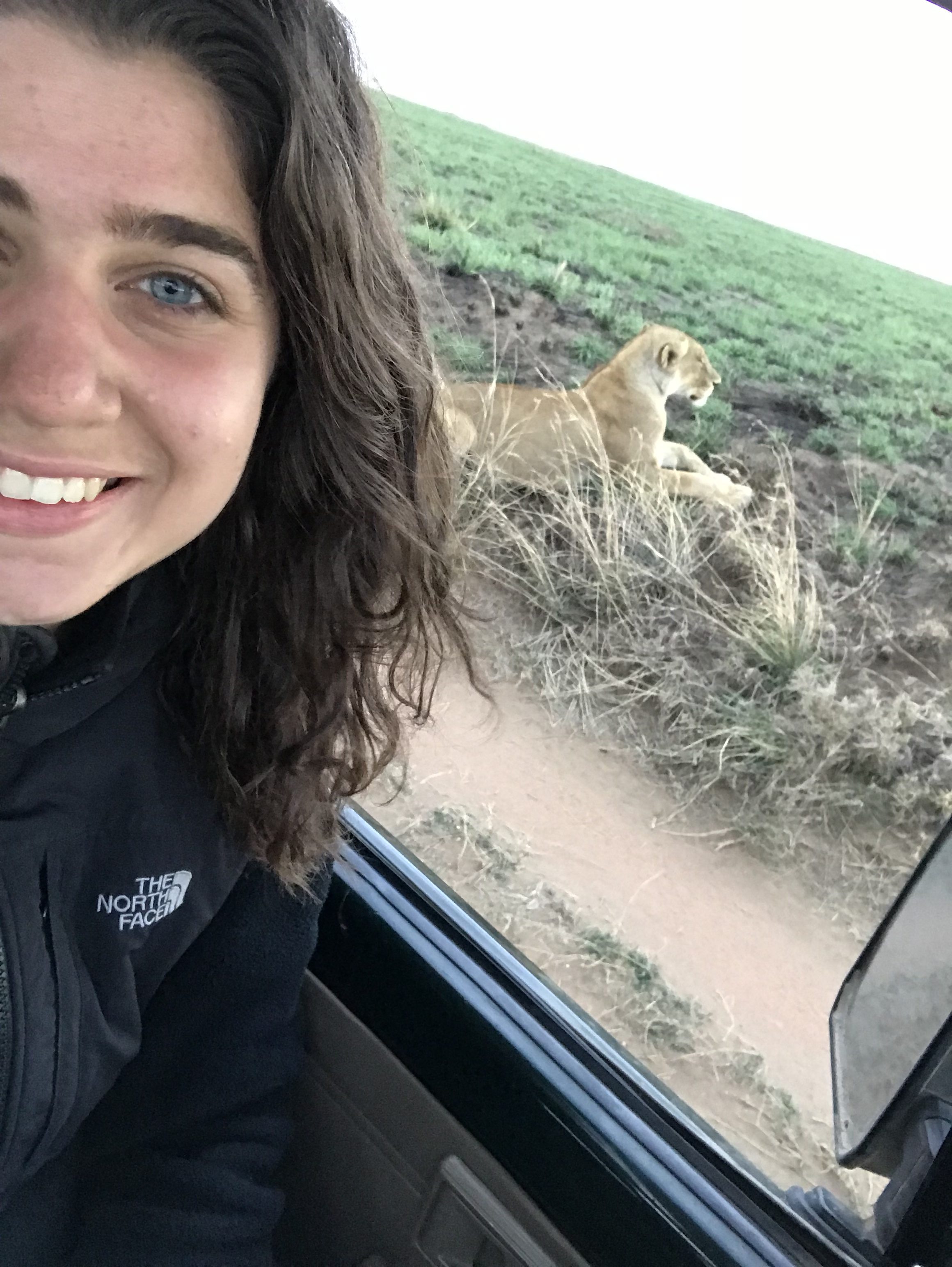
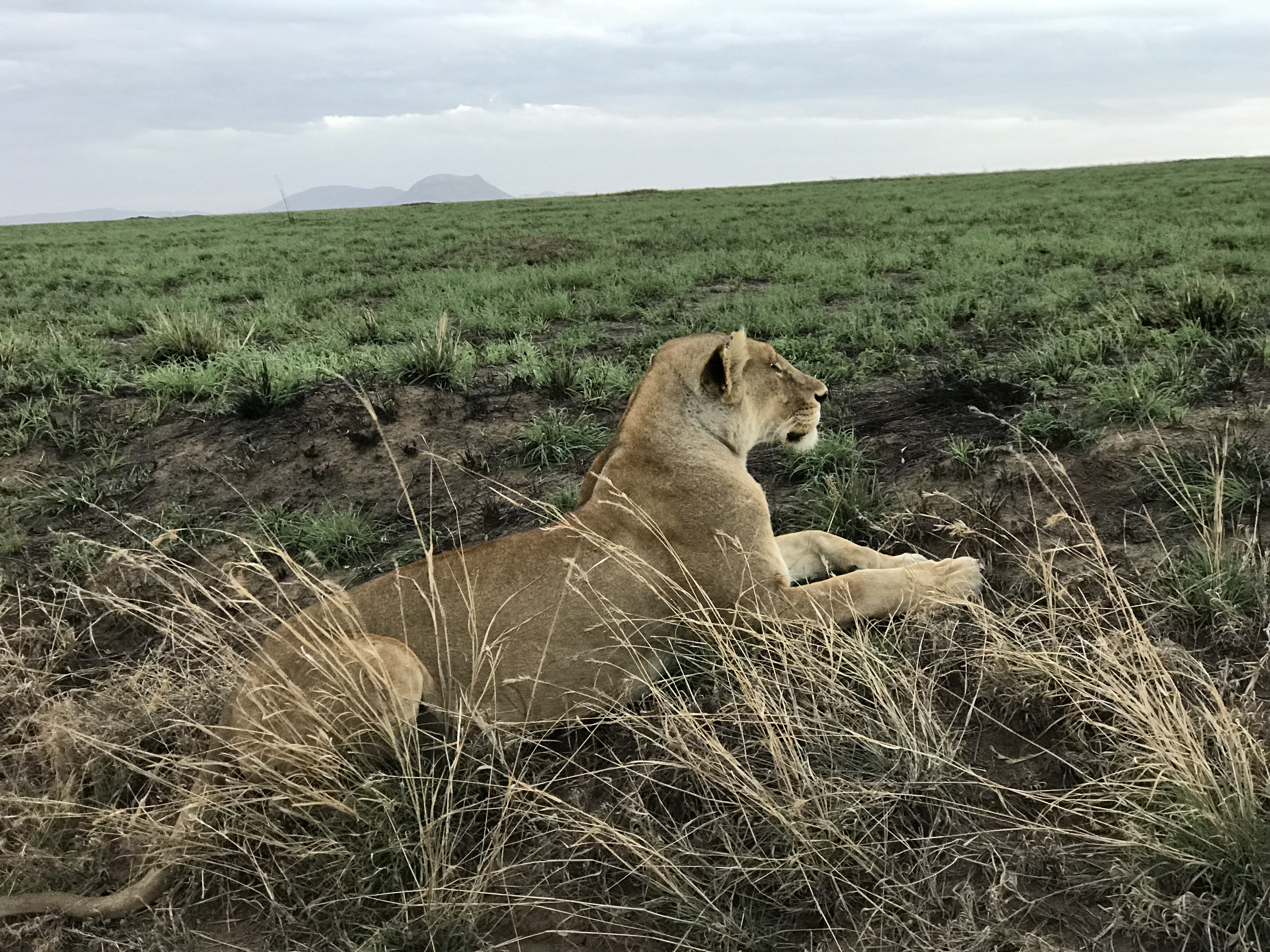
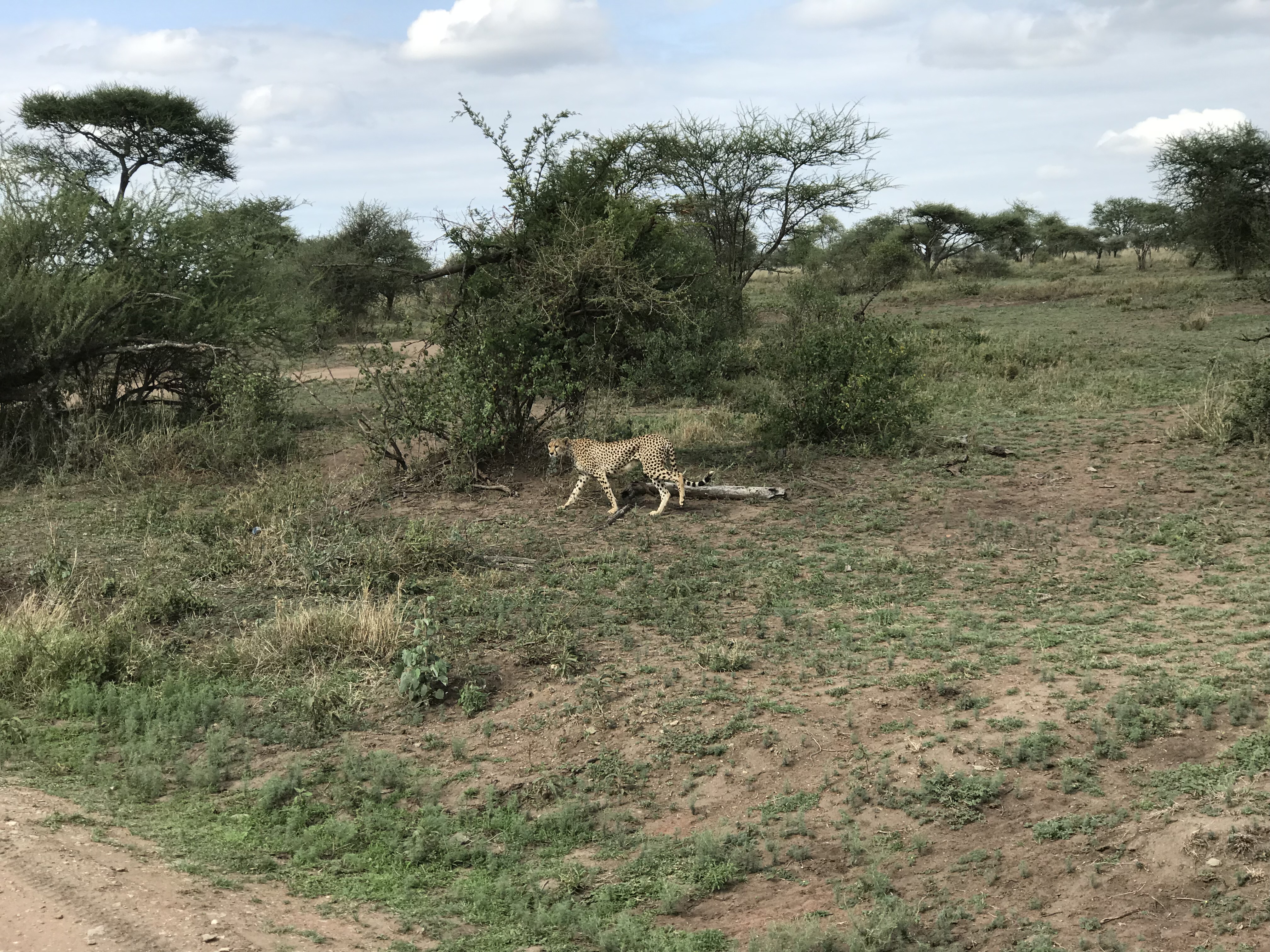
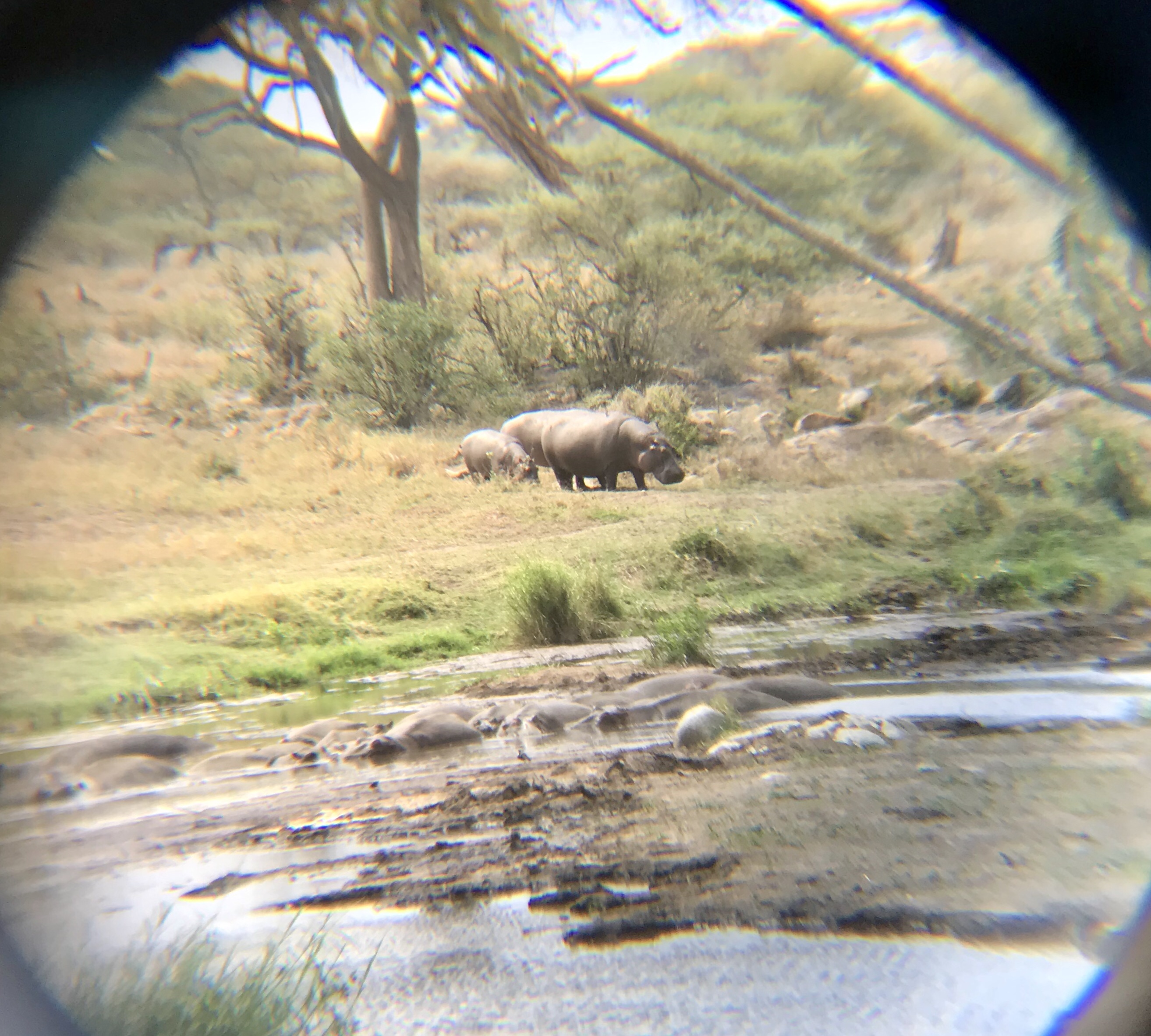
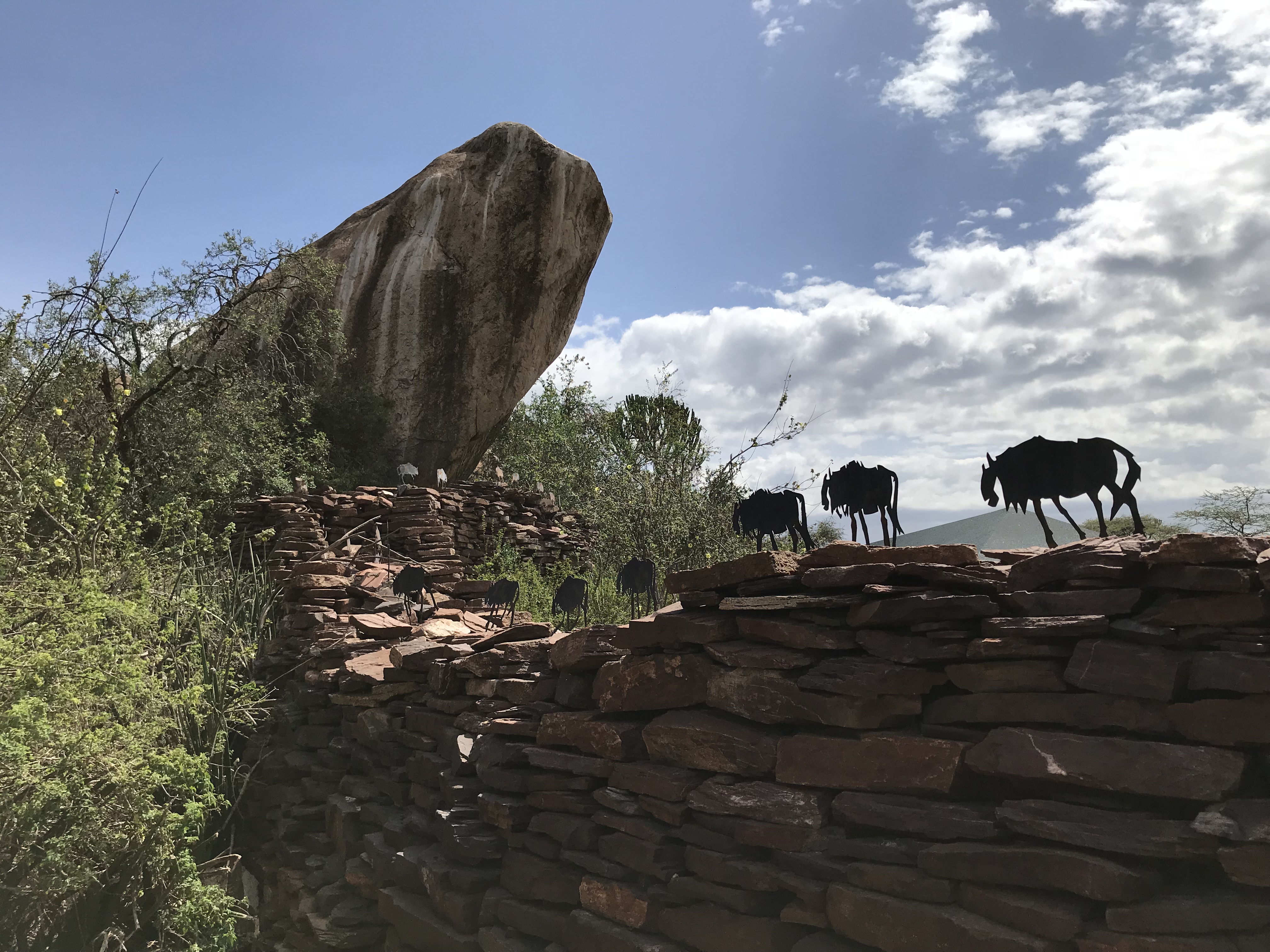
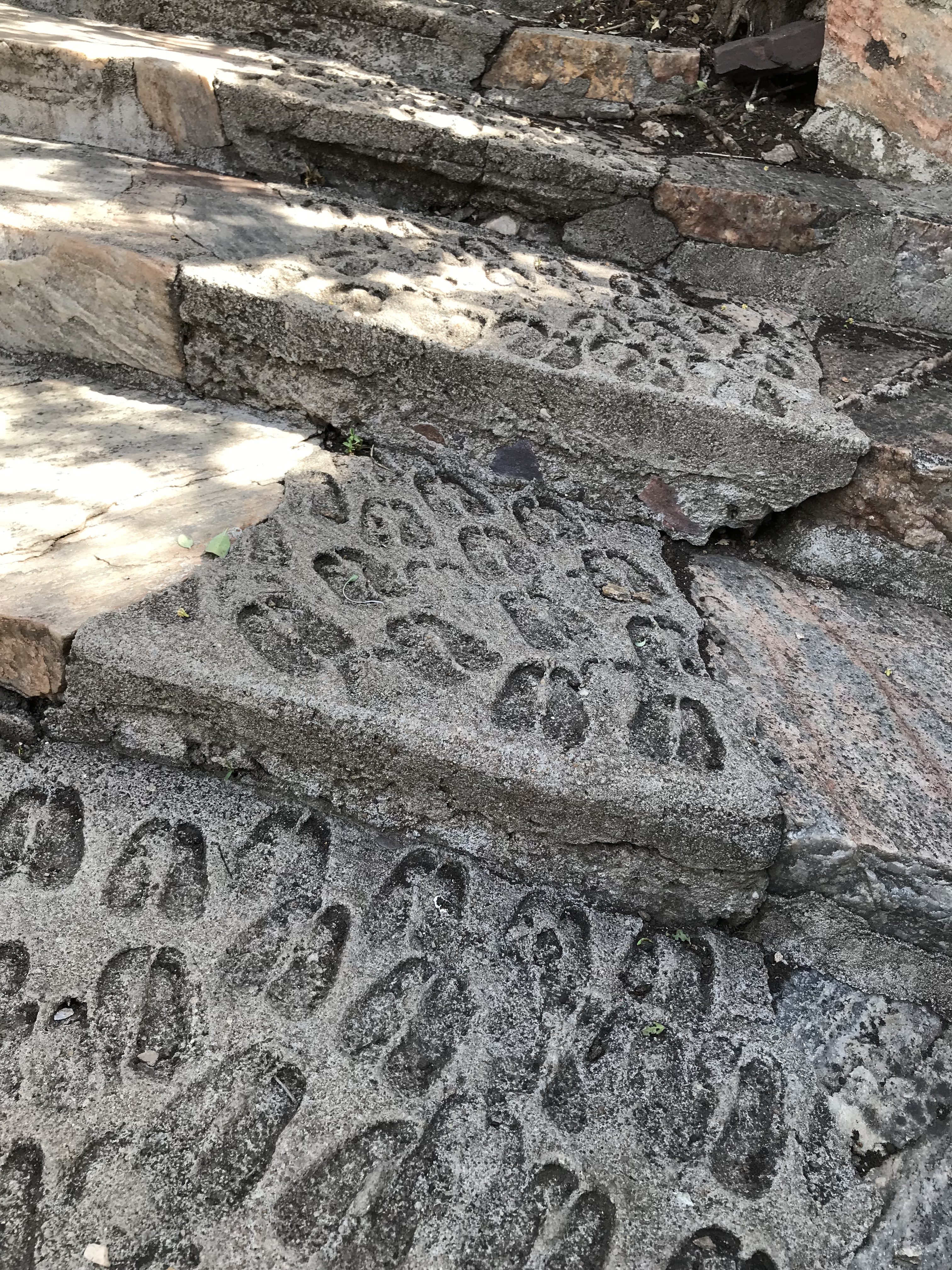
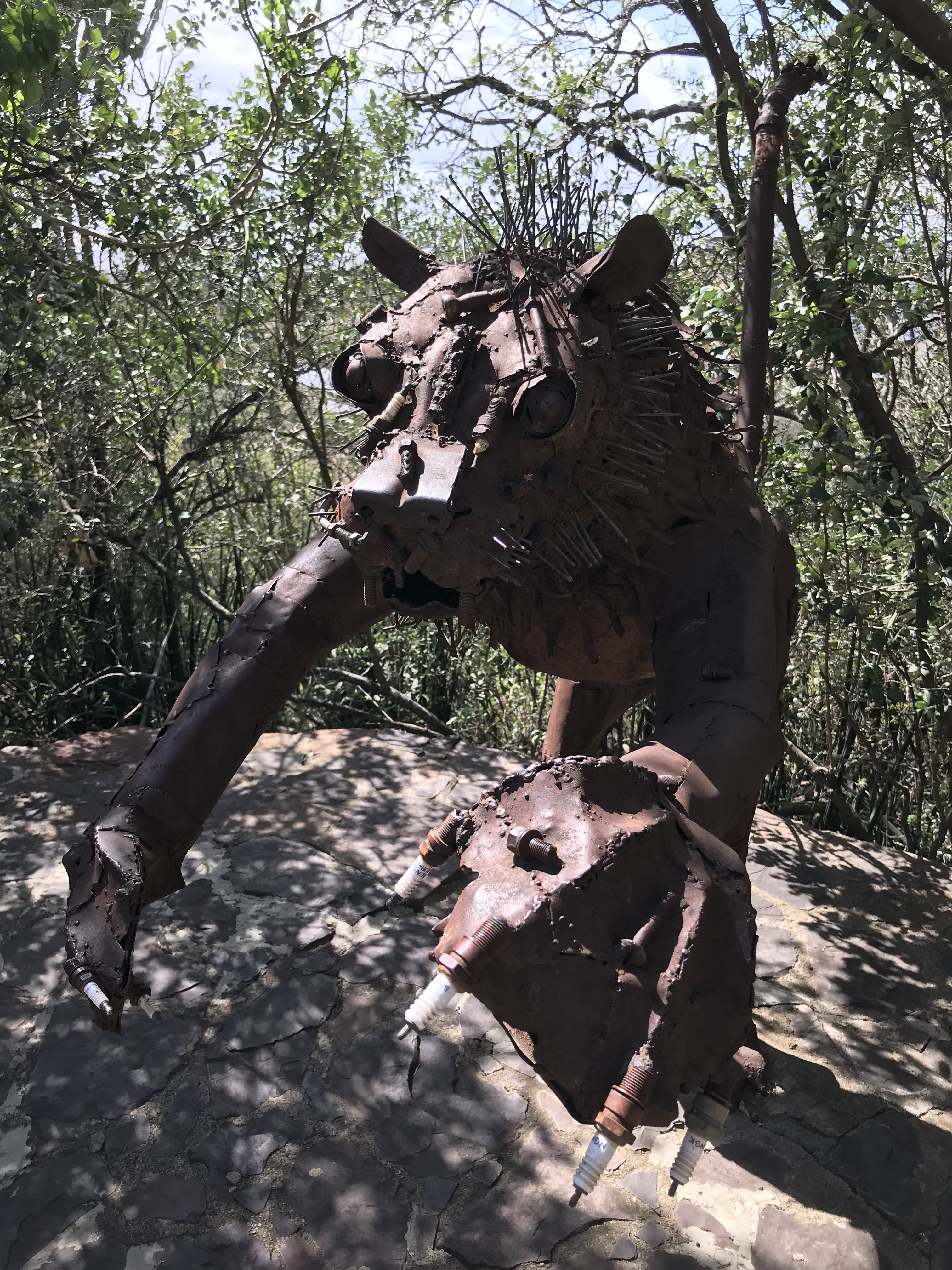
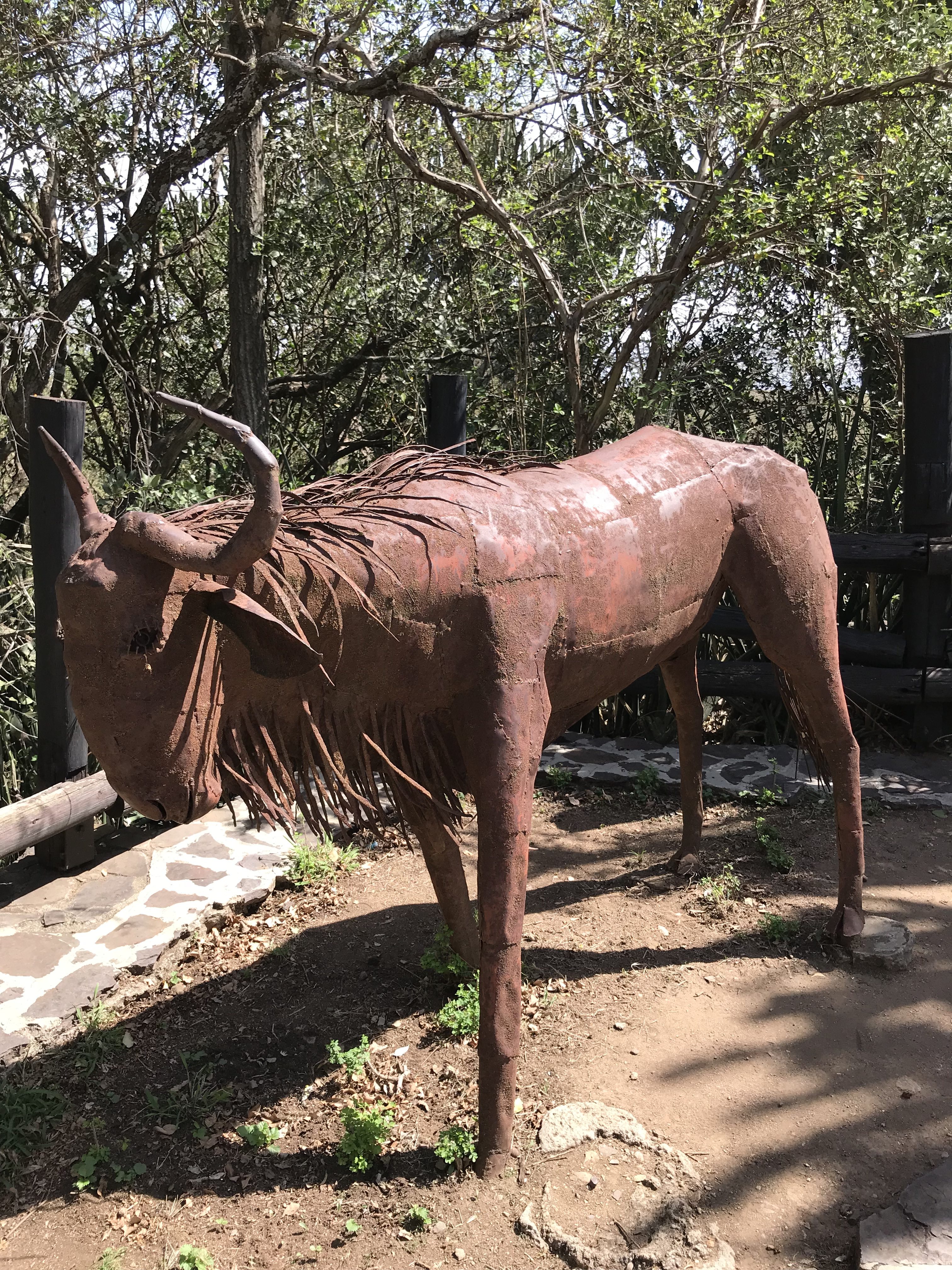
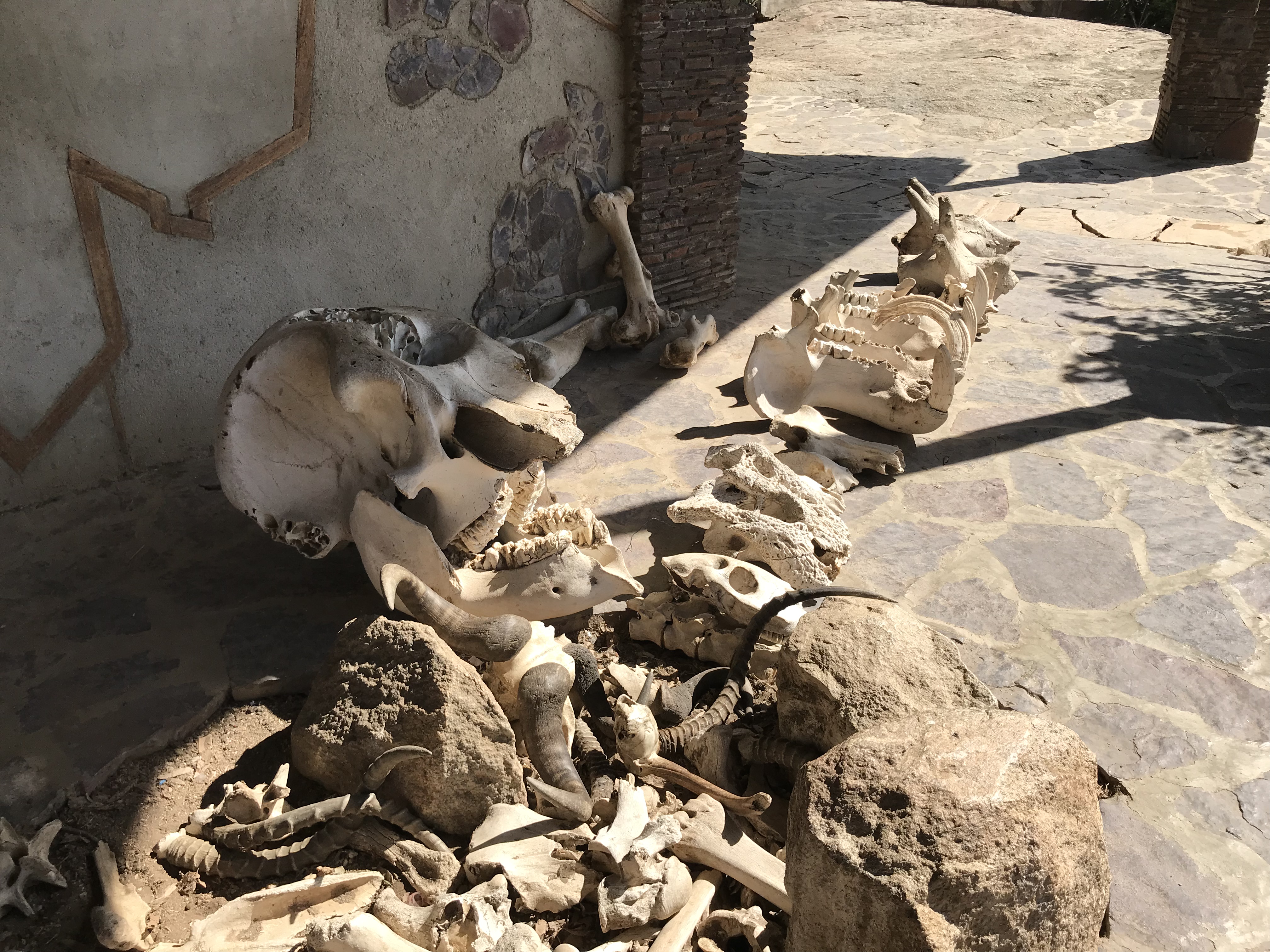
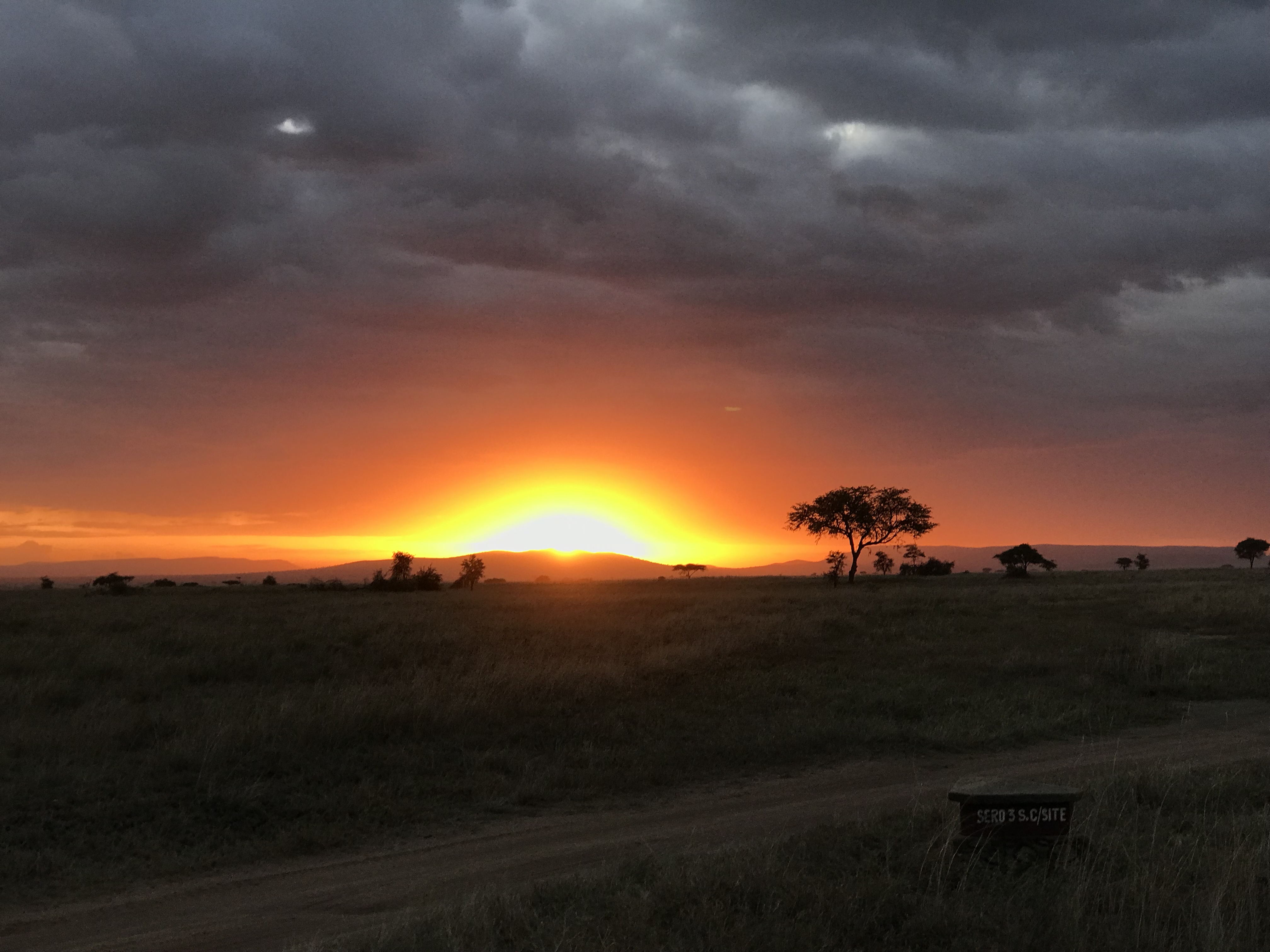 Day 3: Serengeti National Park: Bird Point Count, Hippo Pools, and Serena Lodge
Day 3: Serengeti National Park: Bird Point Count, Hippo Pools, and Serena Lodge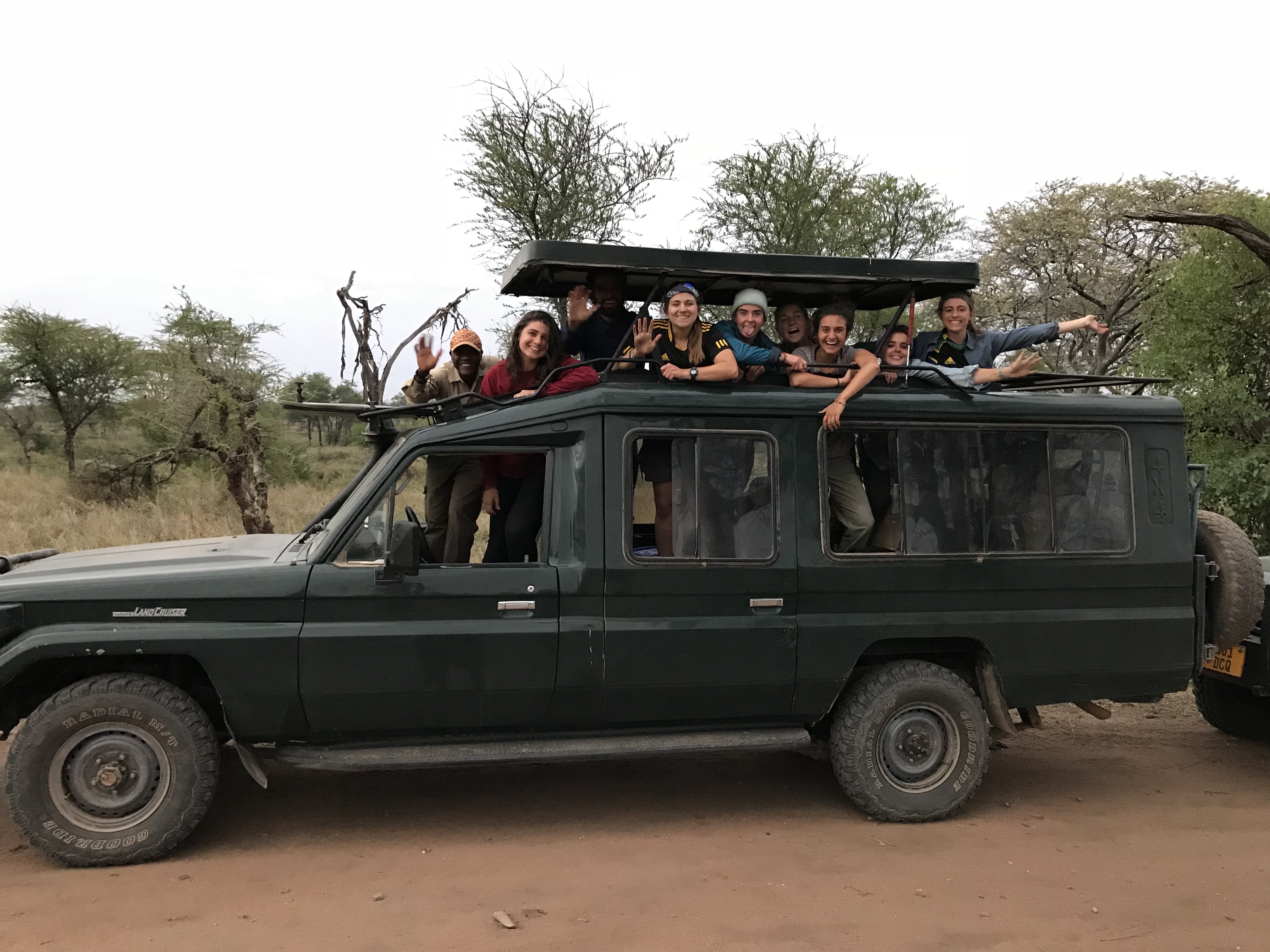
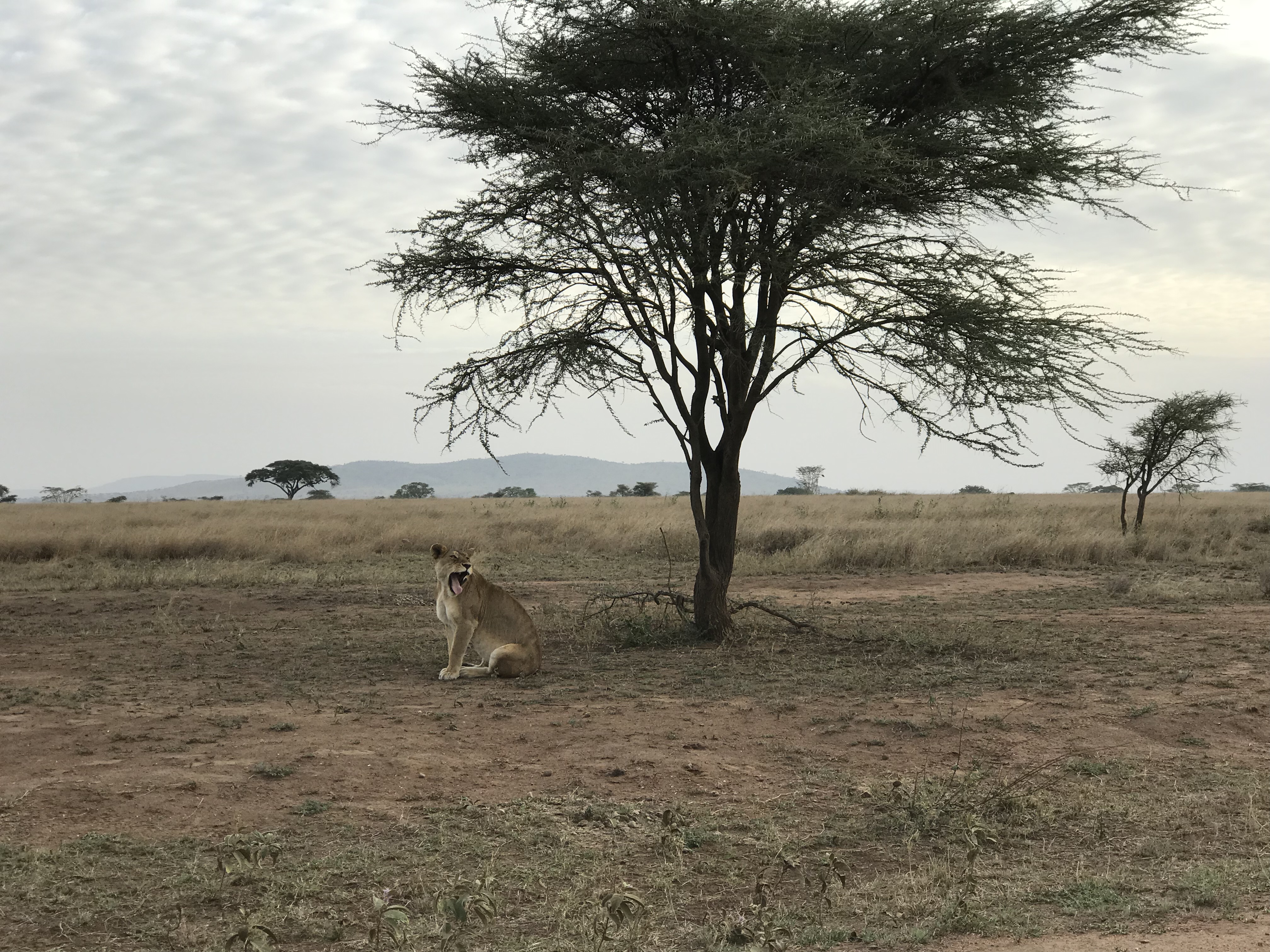
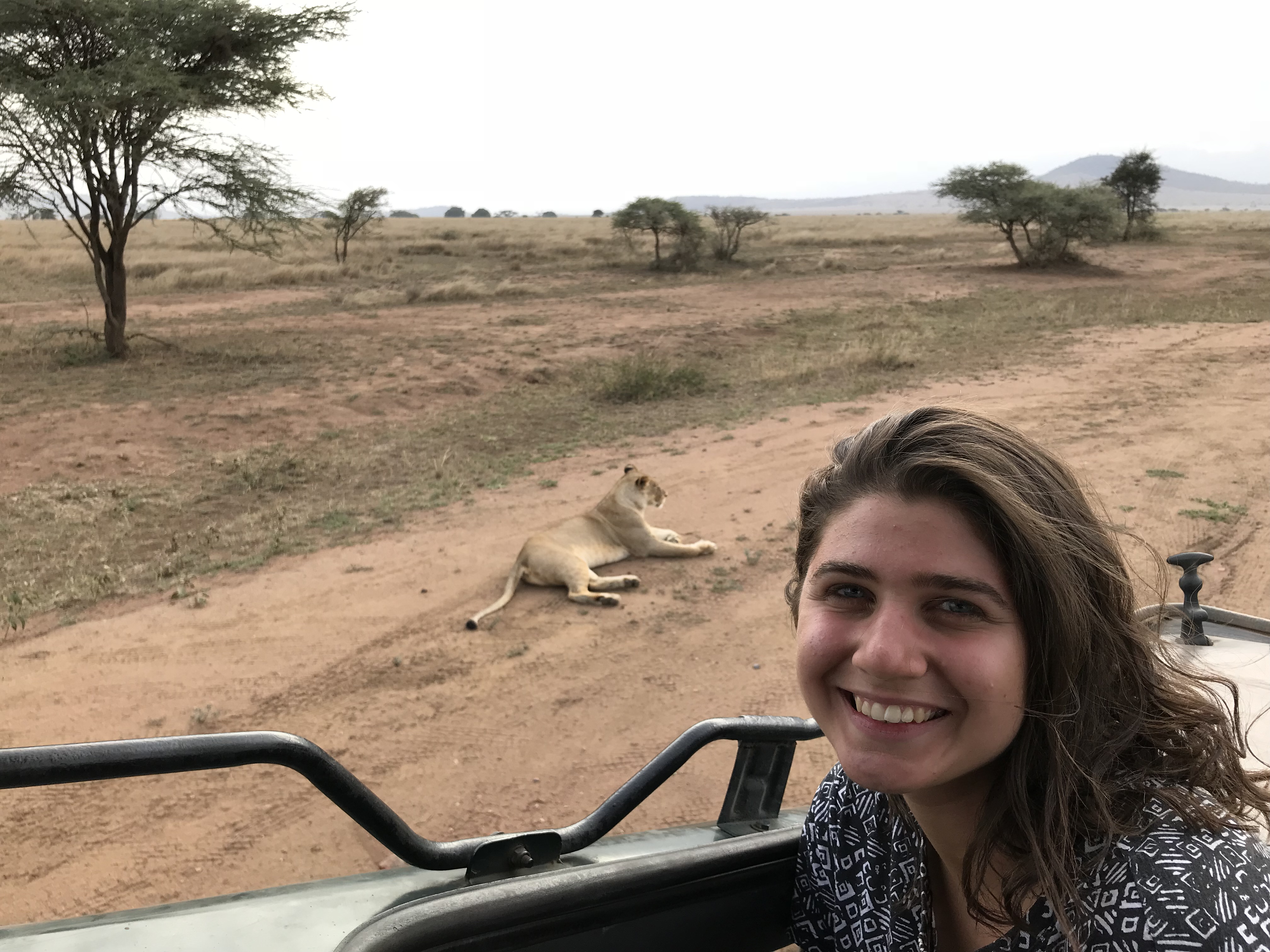
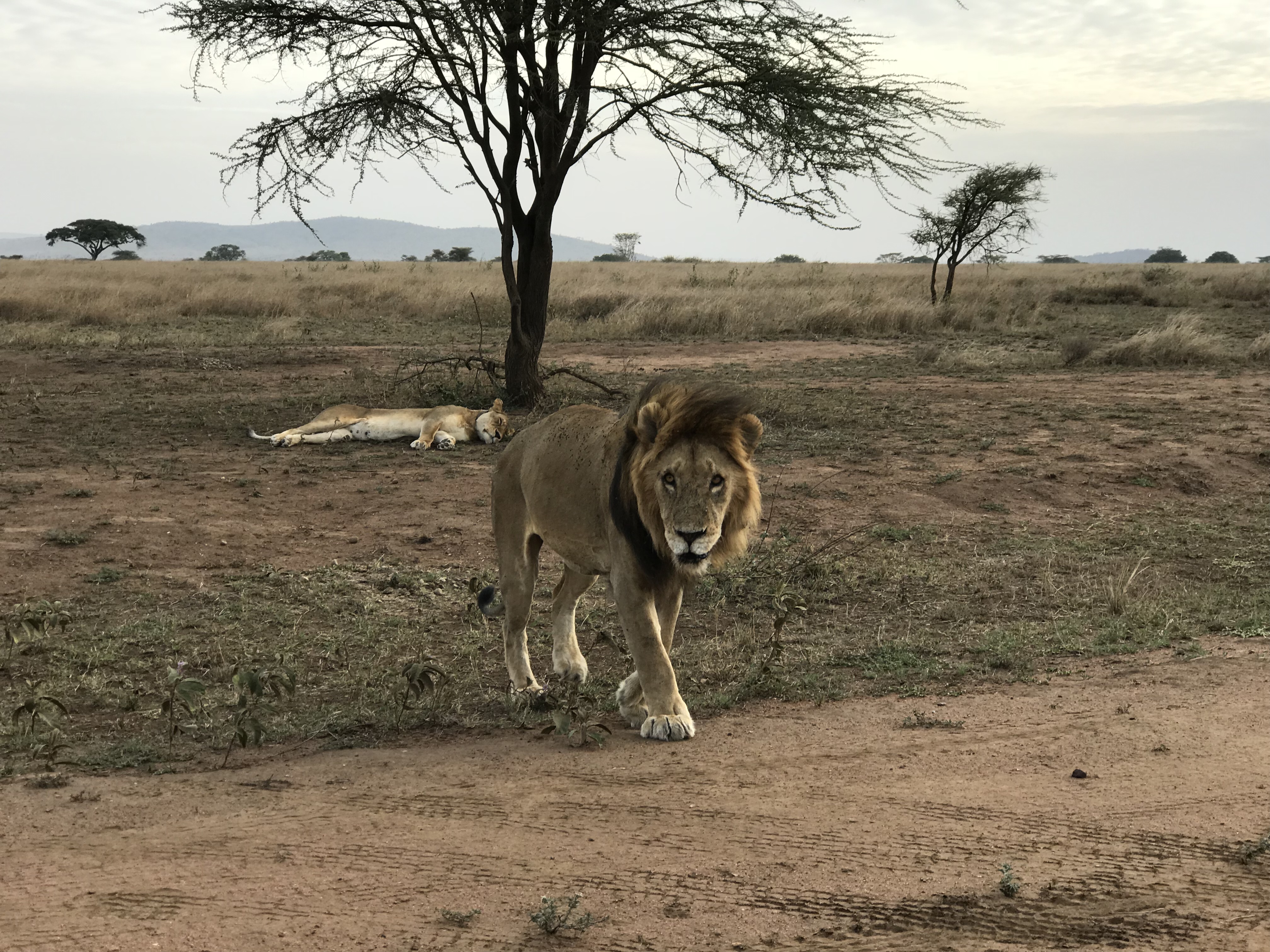
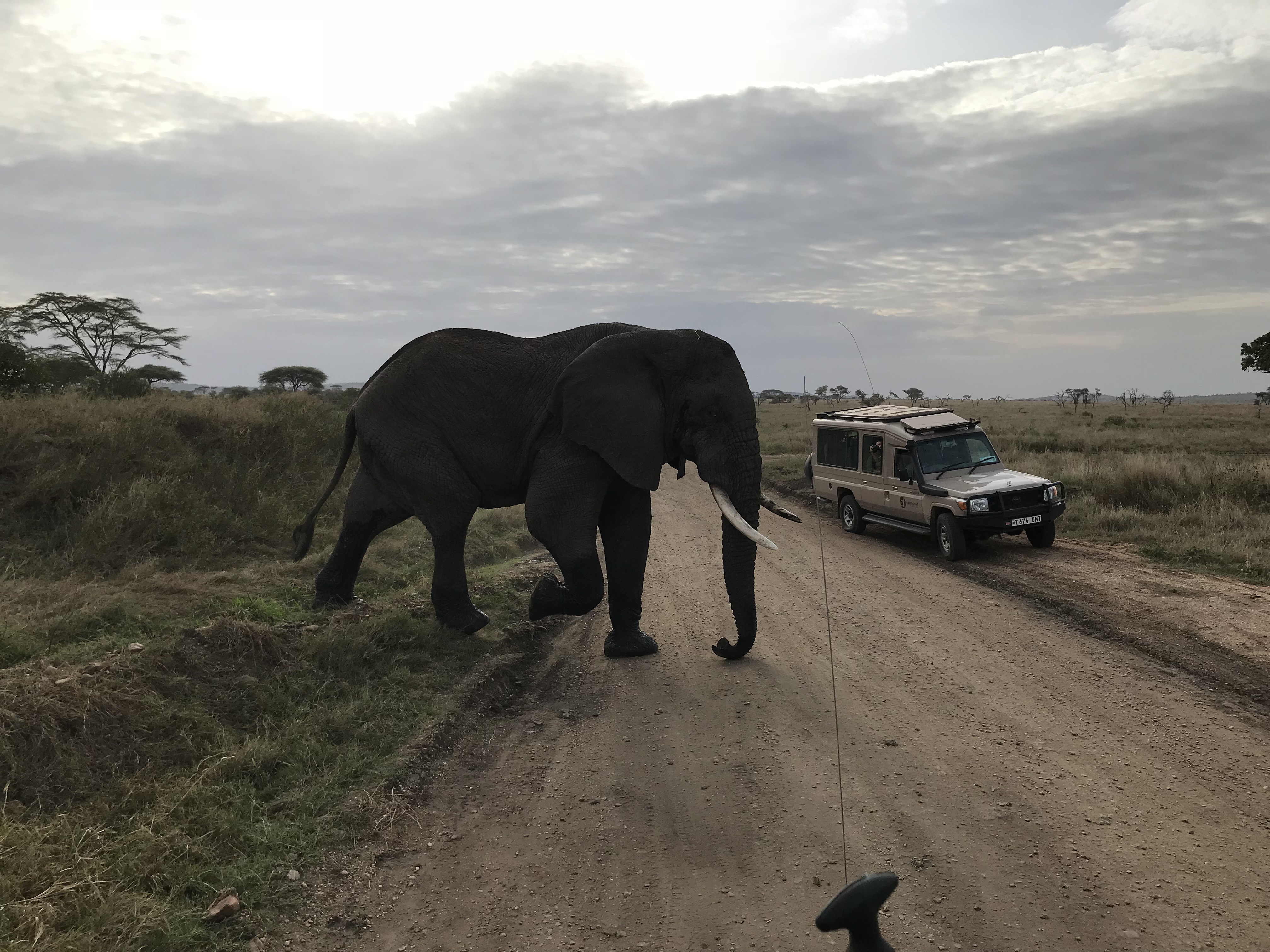
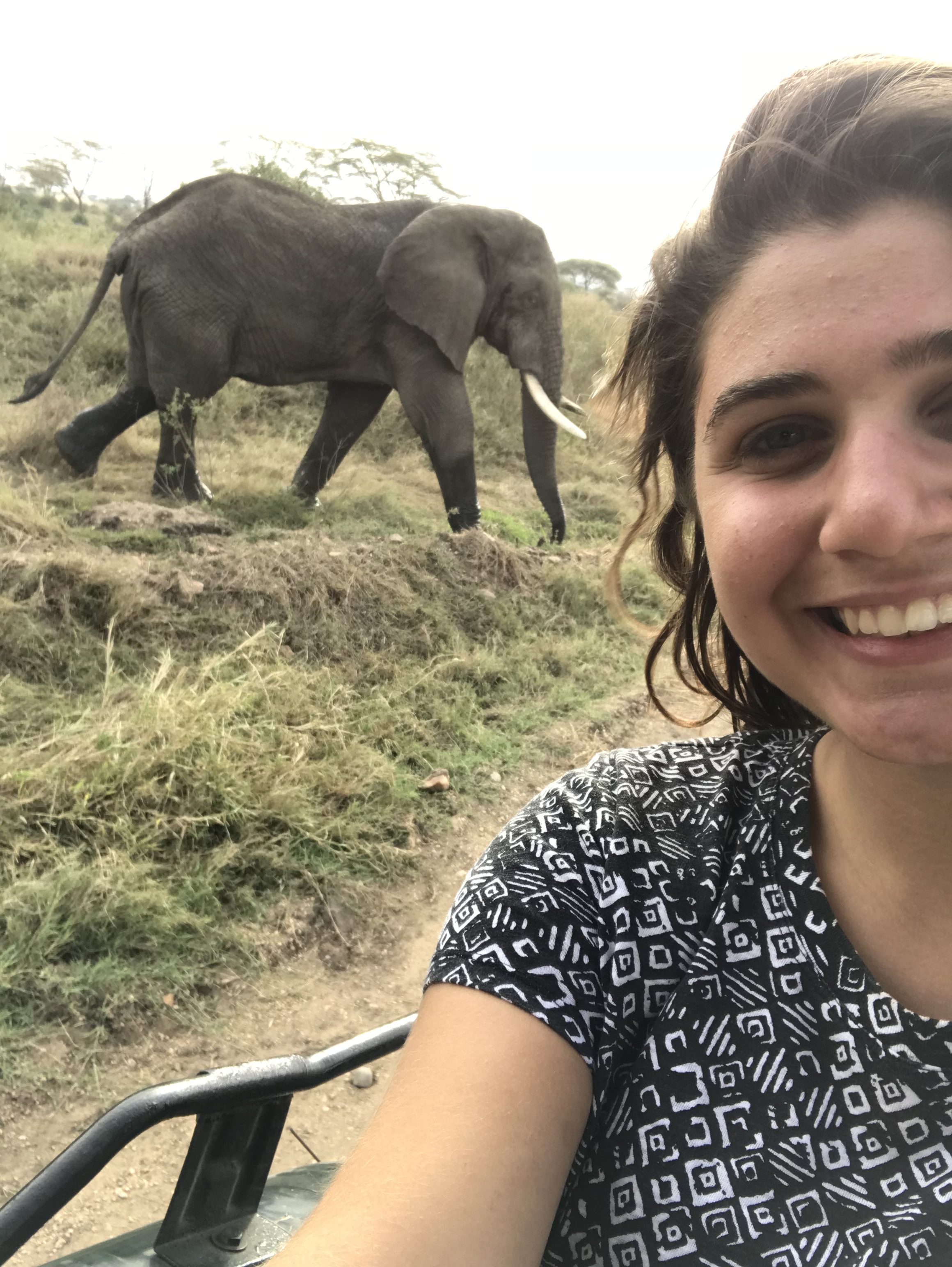
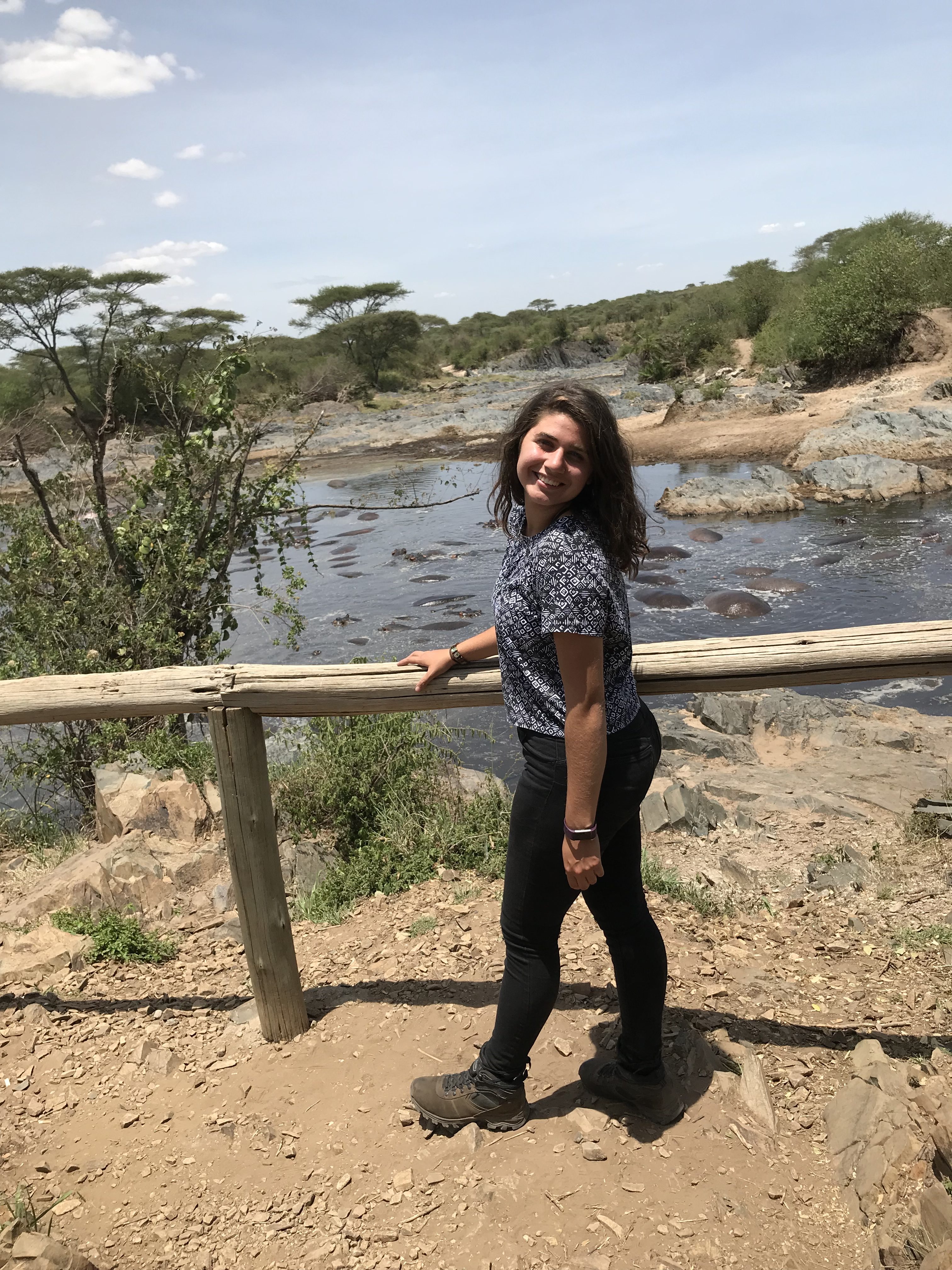
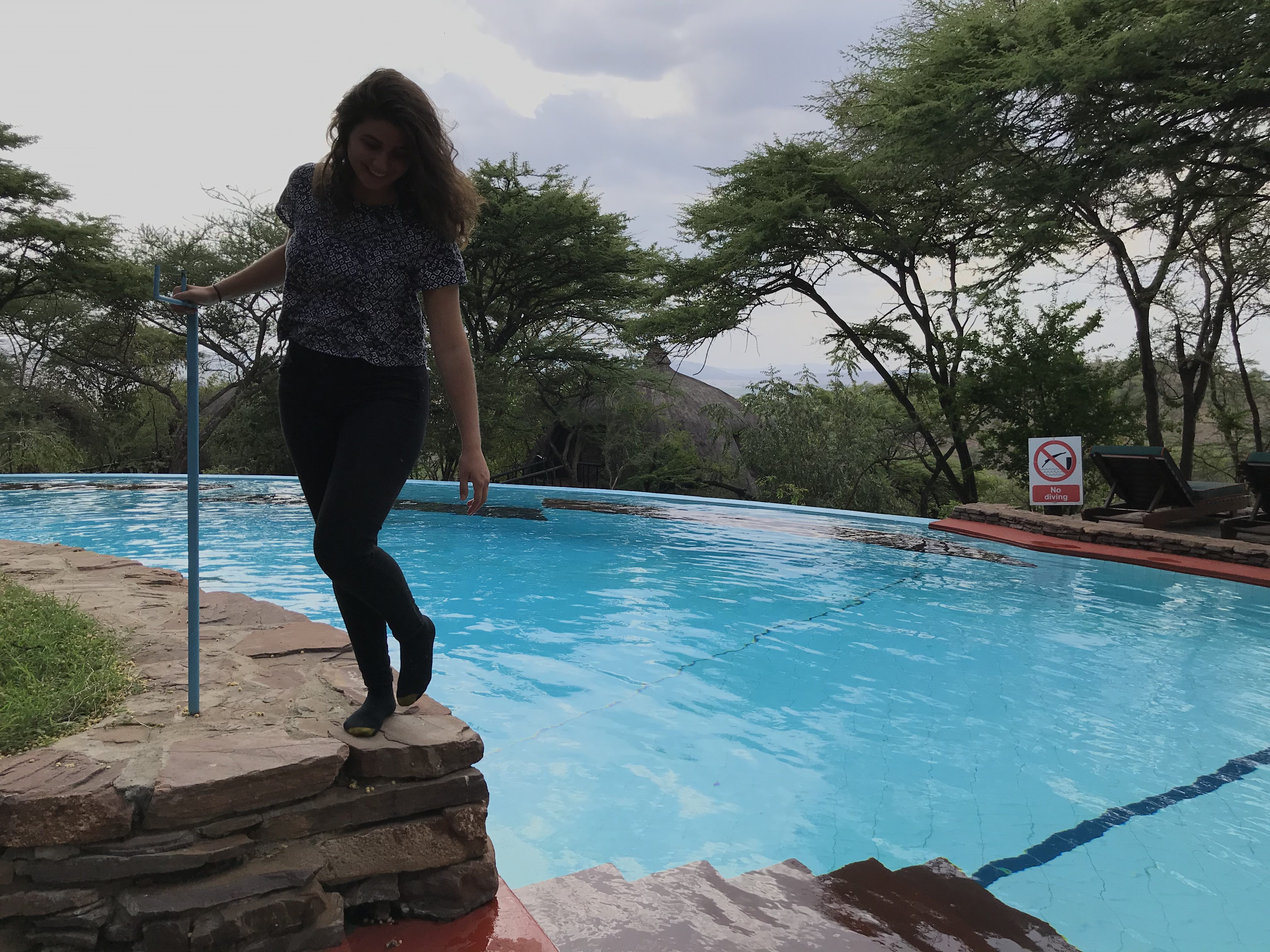
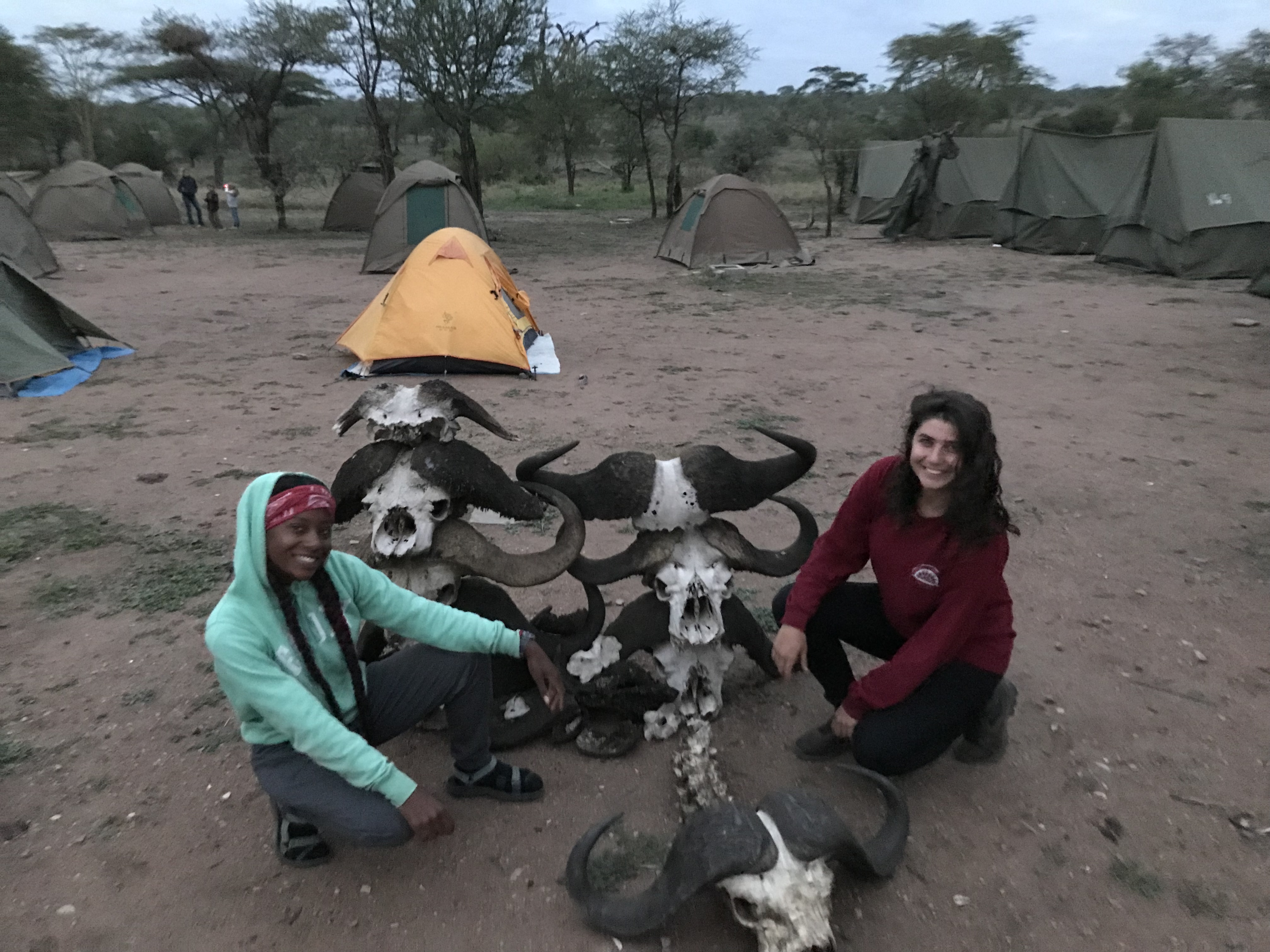
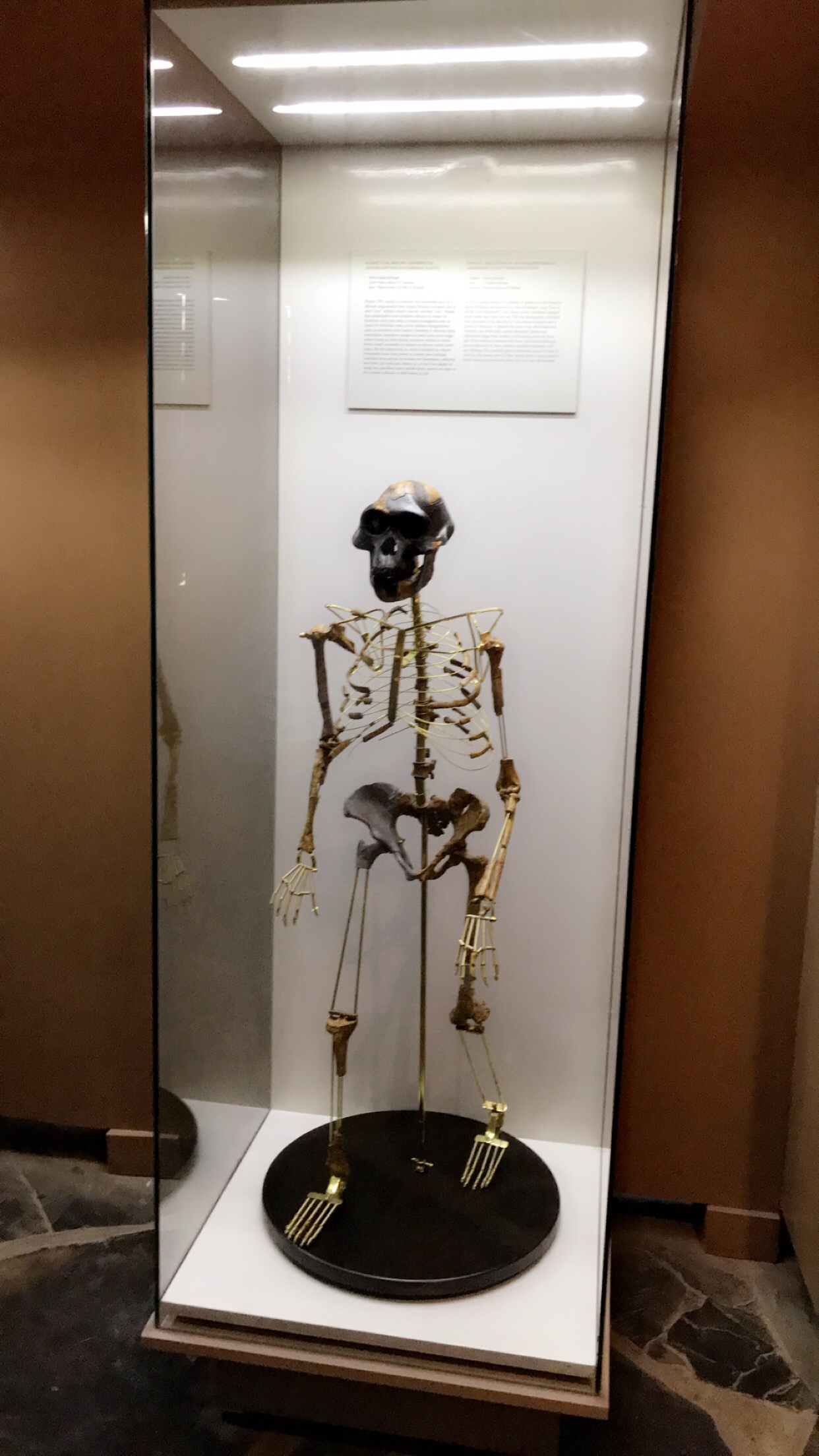
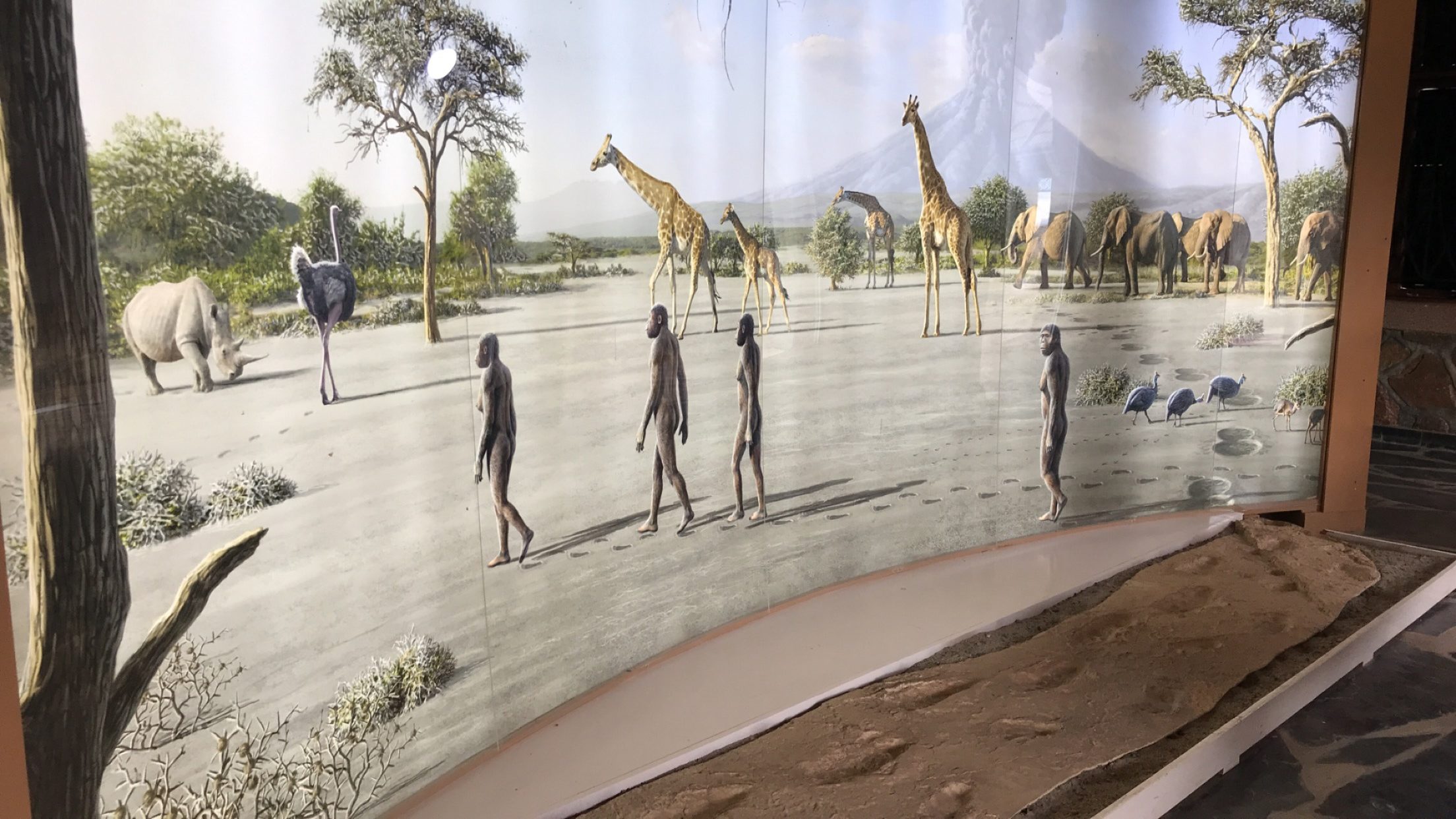
 Emma, me, and Hannah with our paintings outside of the art workshop!
Emma, me, and Hannah with our paintings outside of the art workshop!
 Lucie and Lucy were able to be part of the wedding showing as Daniel guided them through the ceremony
Lucie and Lucy were able to be part of the wedding showing as Daniel guided them through the ceremony 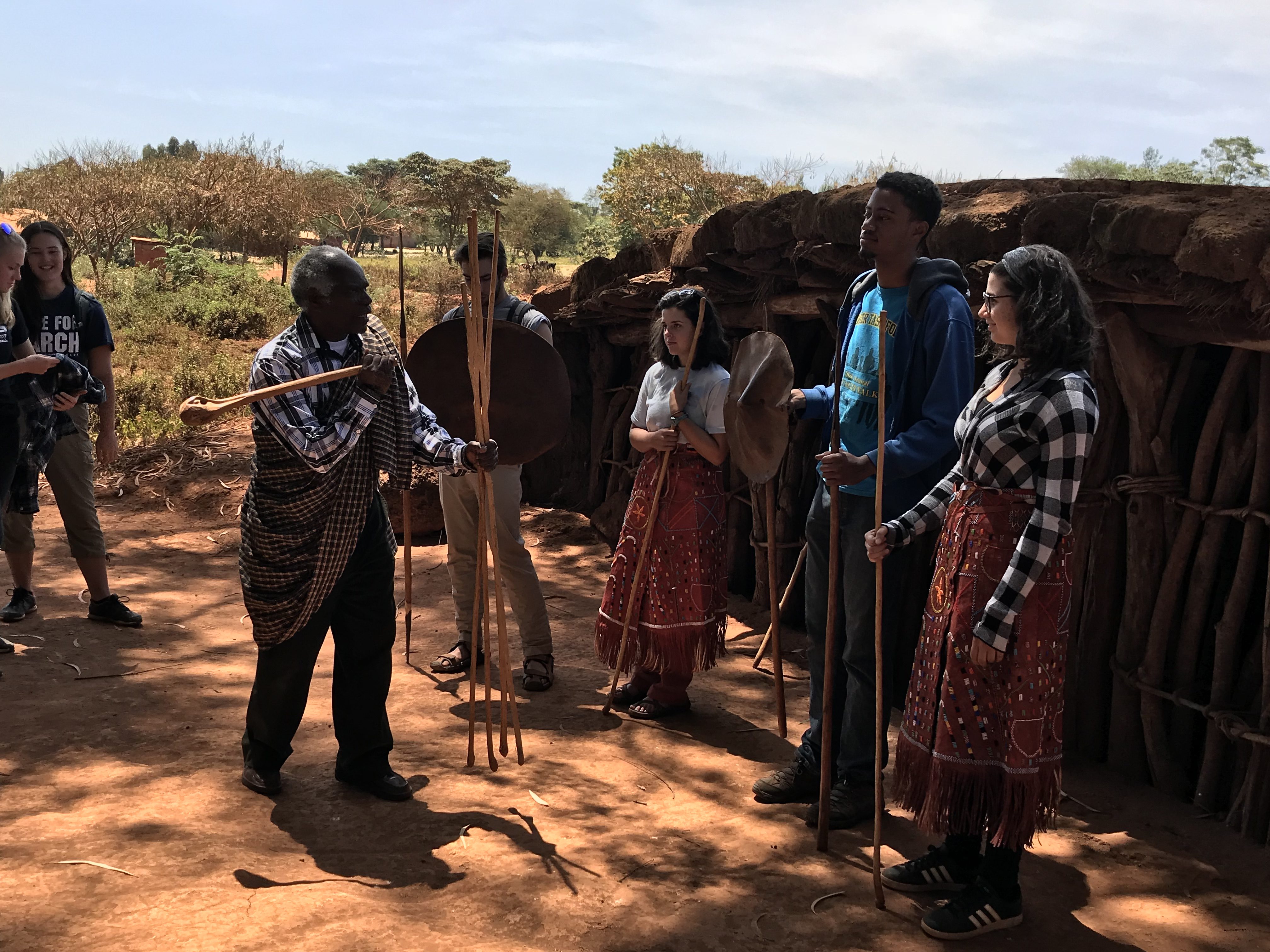 Me and couple of other students were also able to be part of the wedding ceremony as Daniel explained it to us
Me and couple of other students were also able to be part of the wedding ceremony as Daniel explained it to us 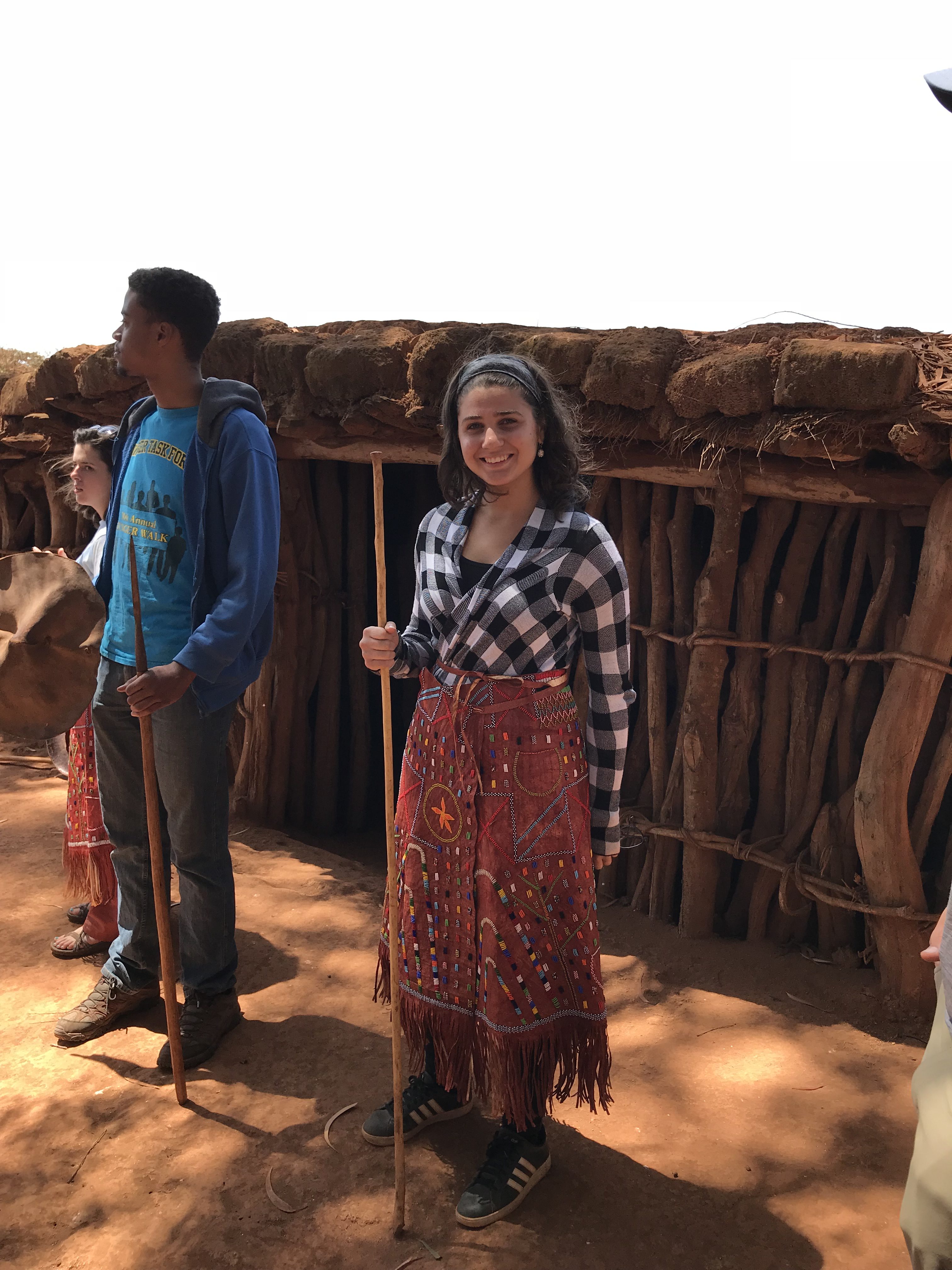 Disappointed that my outfit didn’t match but happy to be part of the ceremony and try to throw spears in the distance
Disappointed that my outfit didn’t match but happy to be part of the ceremony and try to throw spears in the distance  Me and the mama of the house. This house is leveled with the ground to avoid elephants as they can walk over the house without damaging it!
Me and the mama of the house. This house is leveled with the ground to avoid elephants as they can walk over the house without damaging it!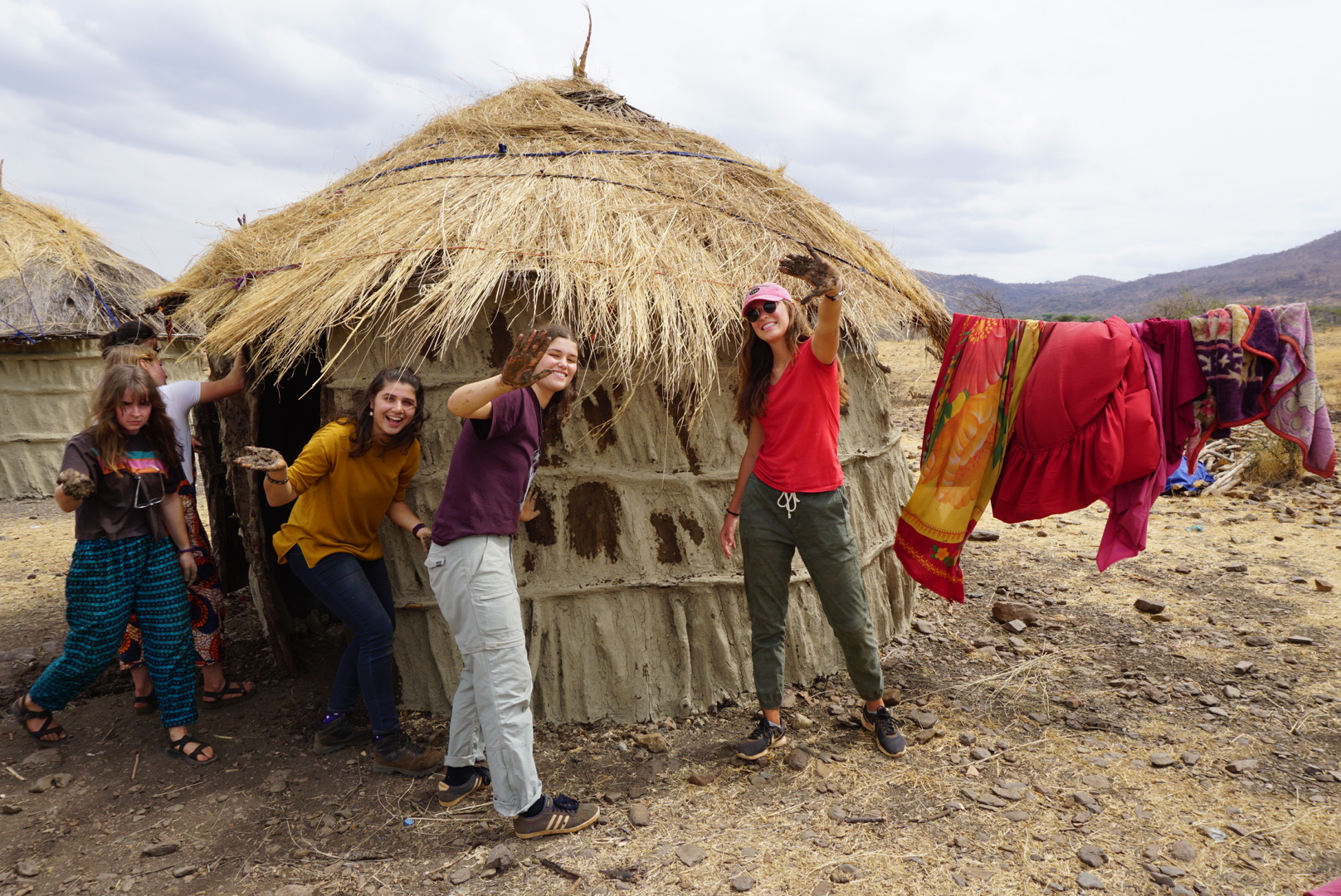 All the gals doing womanly things! Happy to be spreading cow poop (that acts as cement) all around the boma
All the gals doing womanly things! Happy to be spreading cow poop (that acts as cement) all around the boma  The Maasai performing their dances infront of us
The Maasai performing their dances infront of us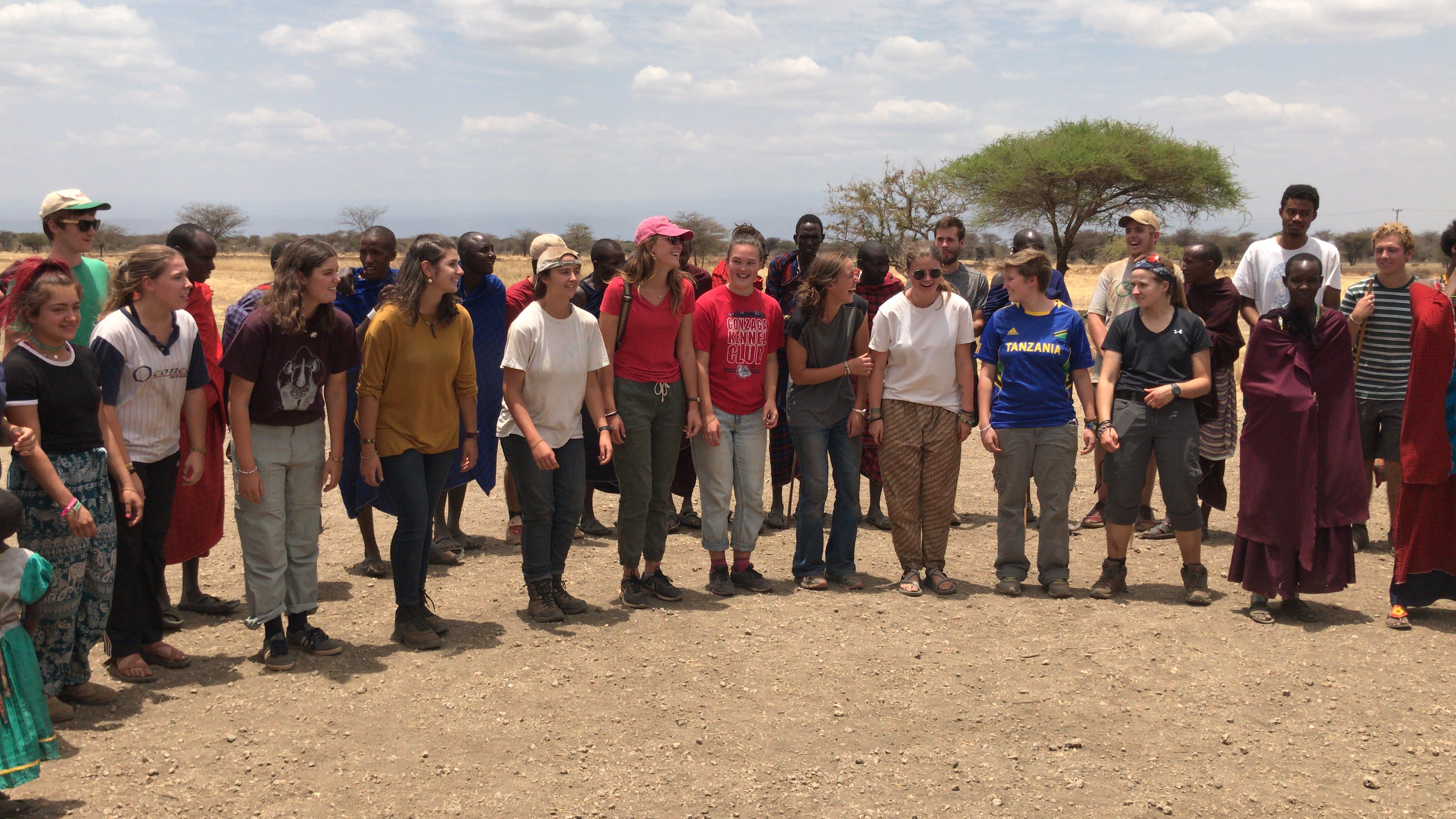
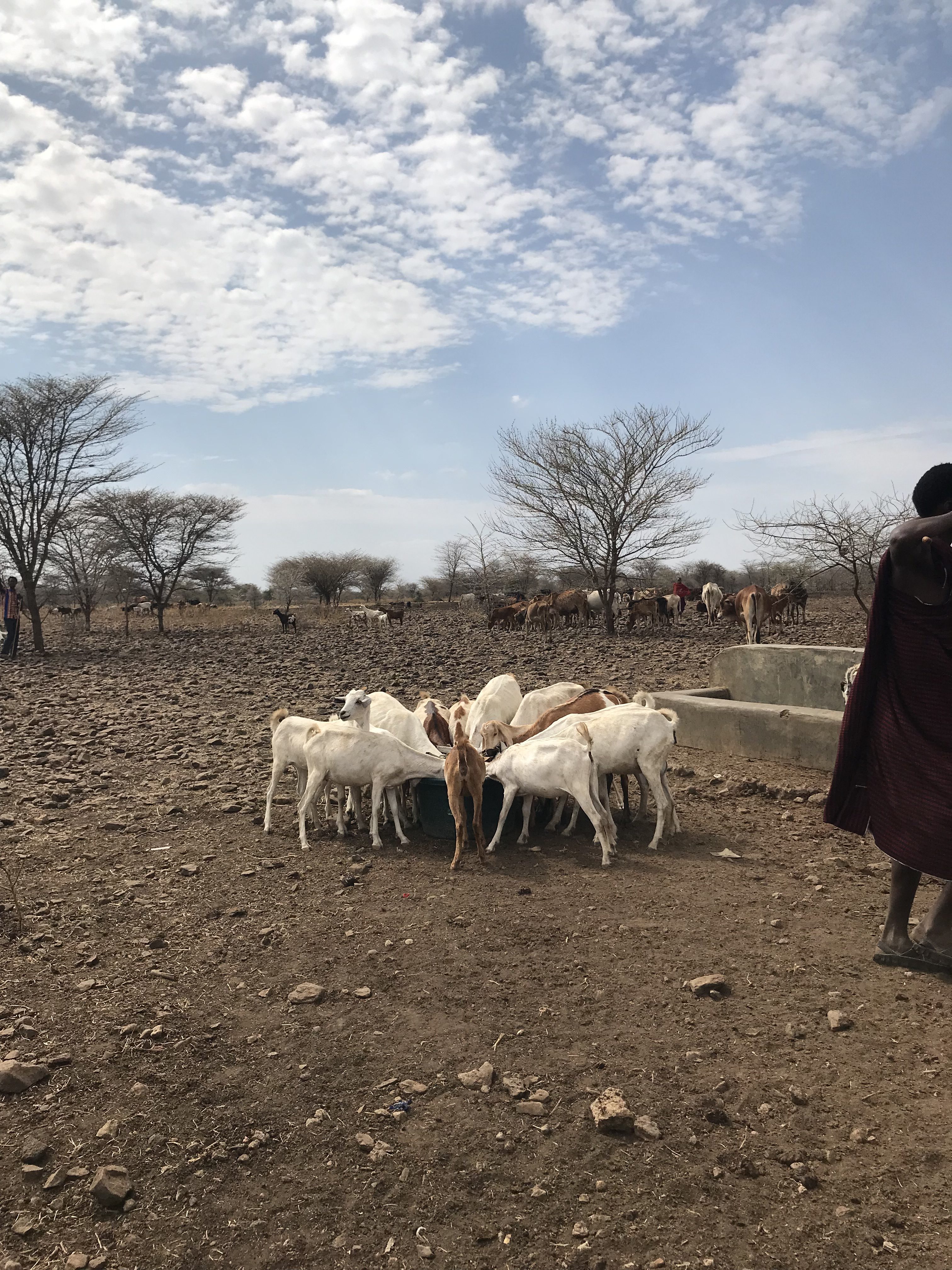 All the sheep drinking water from the water bank as we waited to get some water for the bomas
All the sheep drinking water from the water bank as we waited to get some water for the bomas  Me holding a wildebeest skull at the National Park
Me holding a wildebeest skull at the National Park You’re seeing what I saw through my binoculars. African Elephant (Tembo)
You’re seeing what I saw through my binoculars. African Elephant (Tembo)  We were able to see a mom and its baby in their natural habitat
We were able to see a mom and its baby in their natural habitat Spotting and counting animals in the national park for our research
Spotting and counting animals in the national park for our research So many plains zebras (pundamila) at Tarangire National Park
So many plains zebras (pundamila) at Tarangire National Park A male impala (swala pala)
A male impala (swala pala)  Maasai giraffe (twega) famous for their unique pattern
Maasai giraffe (twega) famous for their unique pattern Vervet monkeys, mom feeding her cute baby
Vervet monkeys, mom feeding her cute baby  Our lunch break consisted of vervet monkeys stealing our food
Our lunch break consisted of vervet monkeys stealing our food We watched a lioness attempt to prey on an impala, AMAZING!
We watched a lioness attempt to prey on an impala, AMAZING! A closer look at this lioness
A closer look at this lioness We tried to take a selfie with the lioness in the back but we clearly failed at showing it
We tried to take a selfie with the lioness in the back but we clearly failed at showing it
 Some zebra traffic on the rode
Some zebra traffic on the rode  On the way back we stopped by the Tarangire National Park lodge before the guest lecture
On the way back we stopped by the Tarangire National Park lodge before the guest lecture Lions are identified based on their unique whisker spots
Lions are identified based on their unique whisker spots  Camp life was so much fun
Camp life was so much fun  Hundreds of cattle to count
Hundreds of cattle to count  The closest I’ve gotten to elephants so far
The closest I’ve gotten to elephants so far The beauty of this lion (simba) was unforgettable, favorite moment!
The beauty of this lion (simba) was unforgettable, favorite moment! The African lion enjoying the fresh air
The African lion enjoying the fresh air Saying our last goodbyes to Manyara Ranch at the top of a mountain
Saying our last goodbyes to Manyara Ranch at the top of a mountain Hanging out with Mama Regina’s daughters, Janet and Patricia
Hanging out with Mama Regina’s daughters, Janet and Patricia 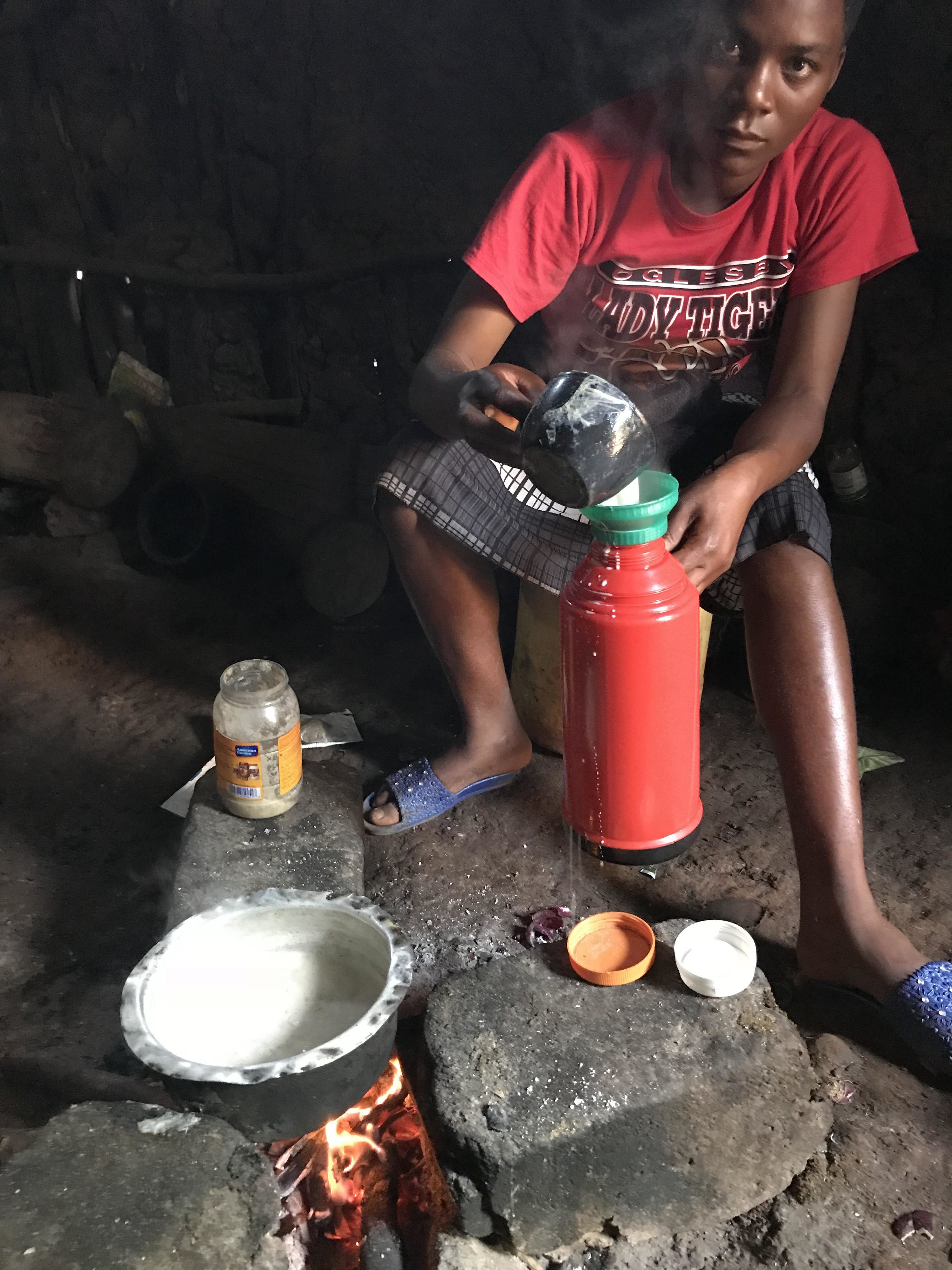 Made milk and tee to drink
Made milk and tee to drink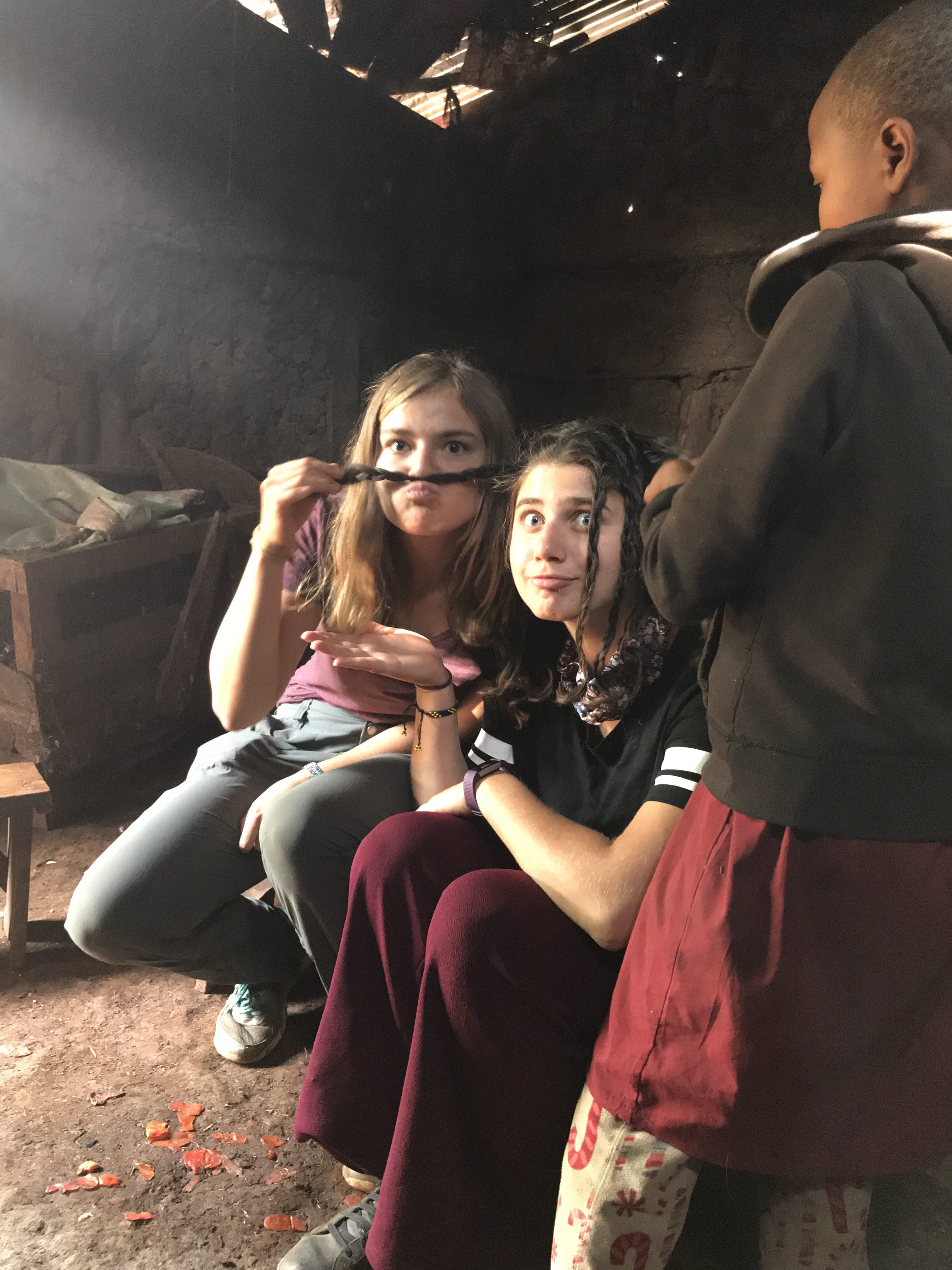 While waiting for the food to cook, we got preoccupied with braiding hair
While waiting for the food to cook, we got preoccupied with braiding hair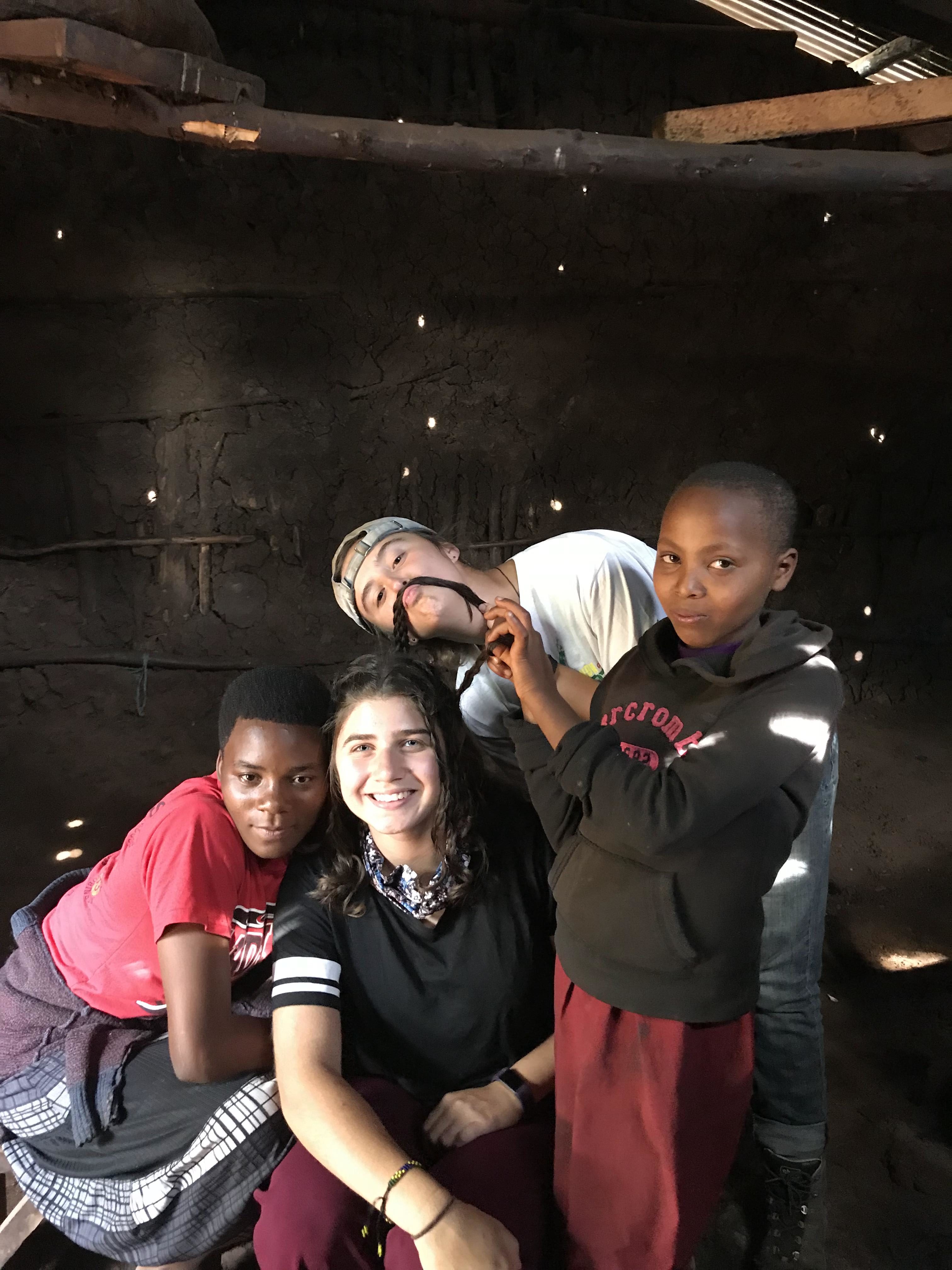 It was a blast, the braided our hair multiple times with different designs
It was a blast, the braided our hair multiple times with different designs 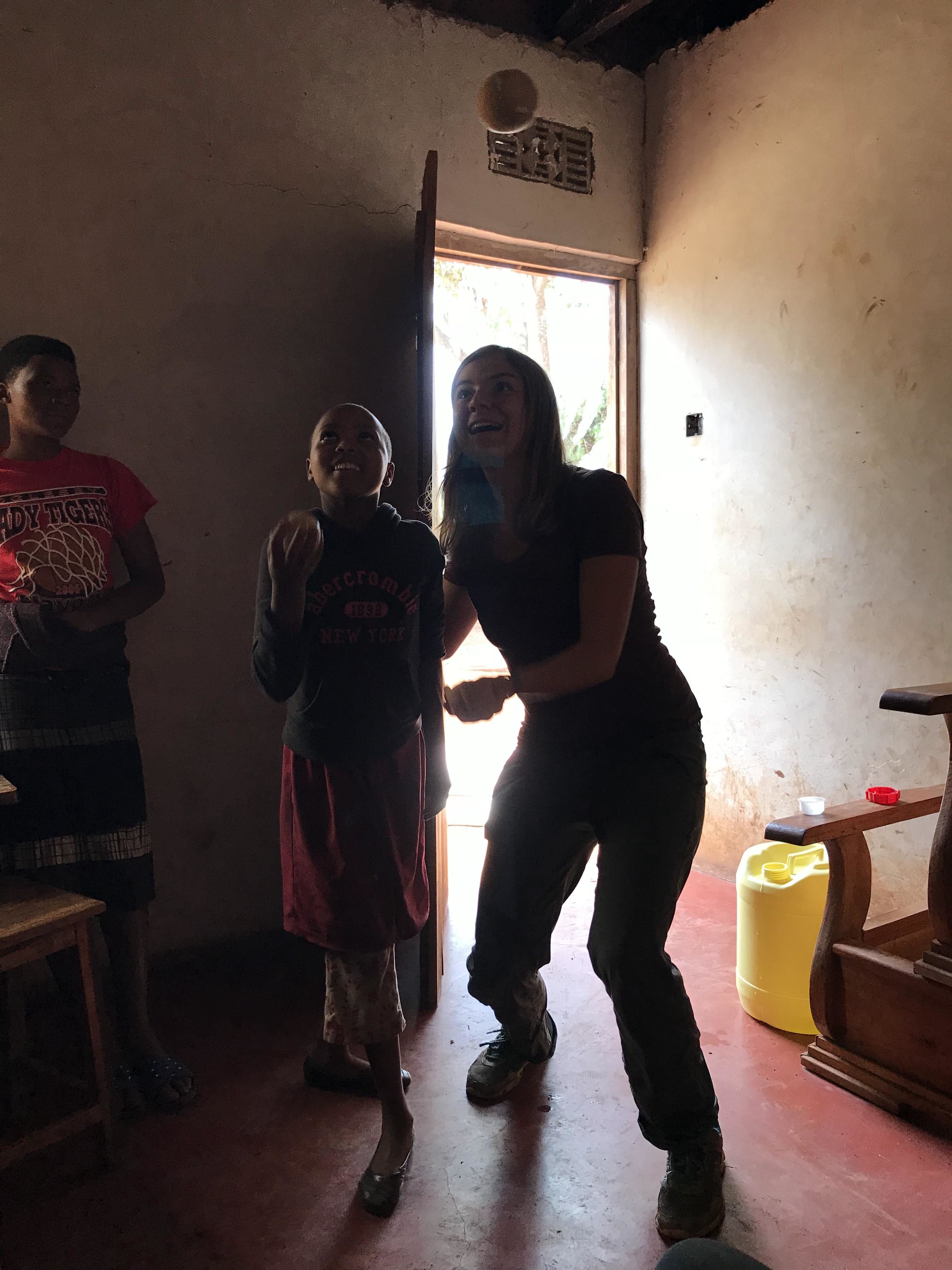 Riga was able to teach Patricia how to juggle
Riga was able to teach Patricia how to juggle 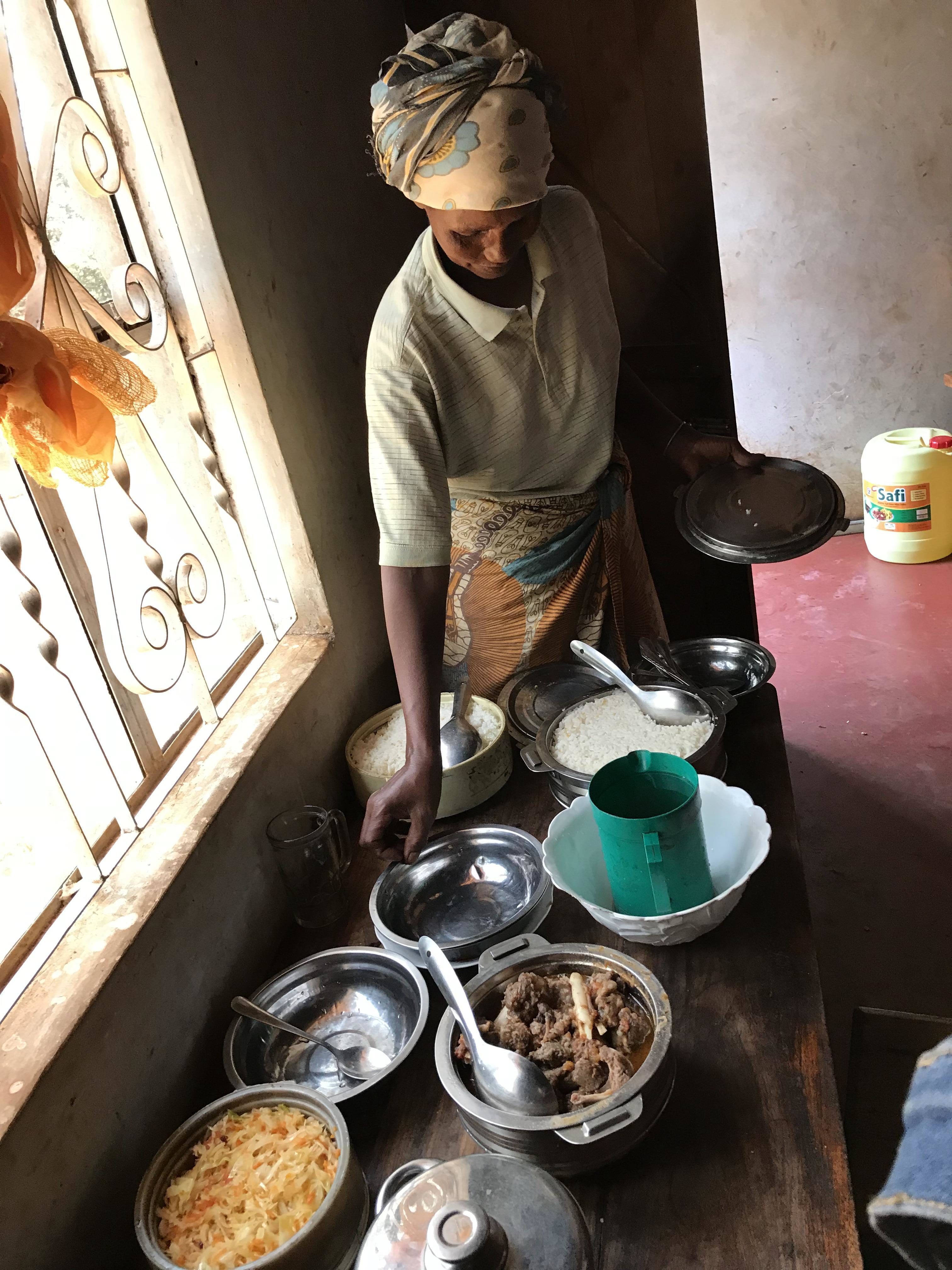 Mama Regina setting the table with all the delicious food we cooked
Mama Regina setting the table with all the delicious food we cooked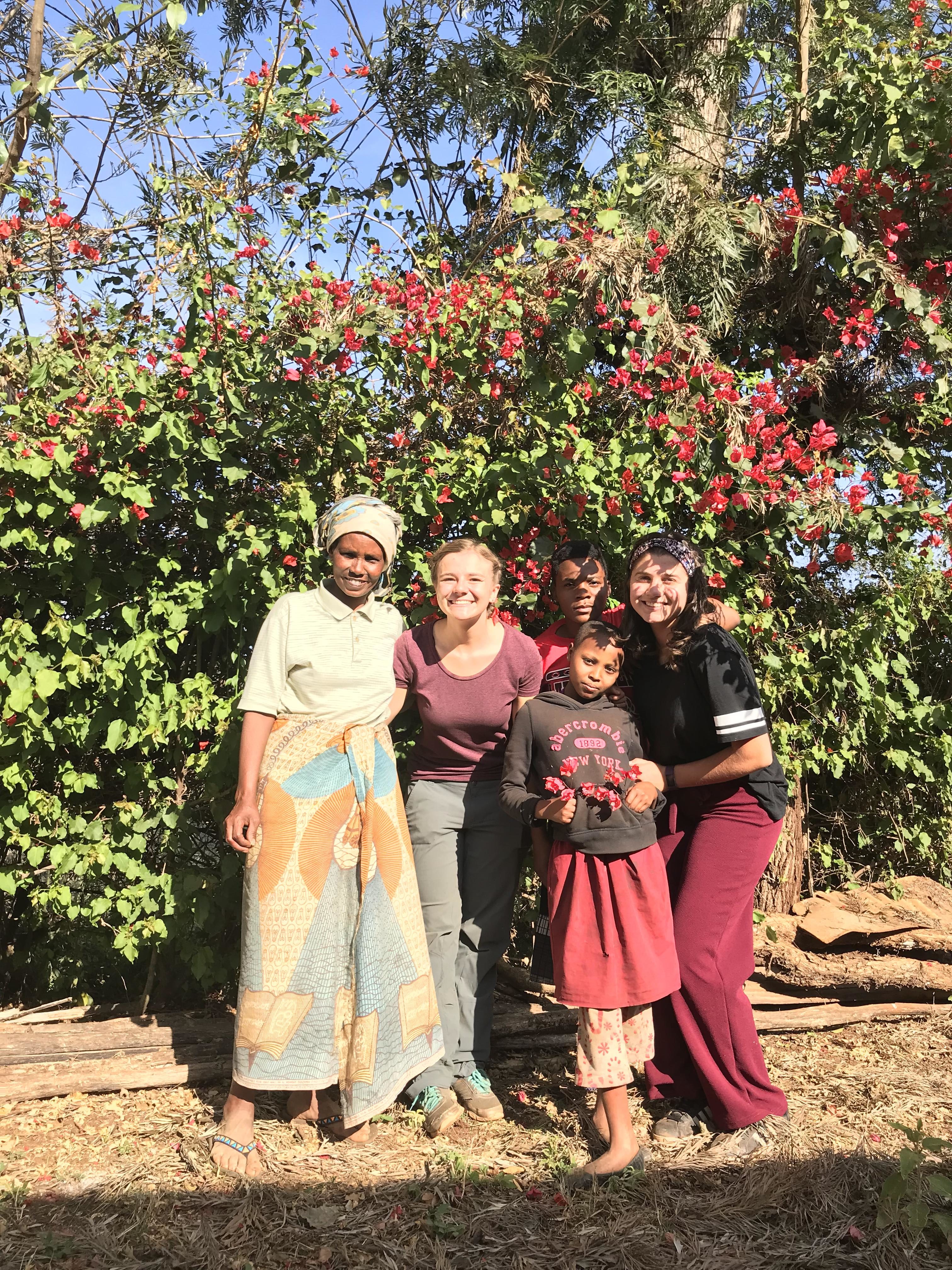 A little photoshoot with the family
A little photoshoot with the family The views form our walk
The views form our walk We’re the three musketeers that eventually get a little lost
We’re the three musketeers that eventually get a little lost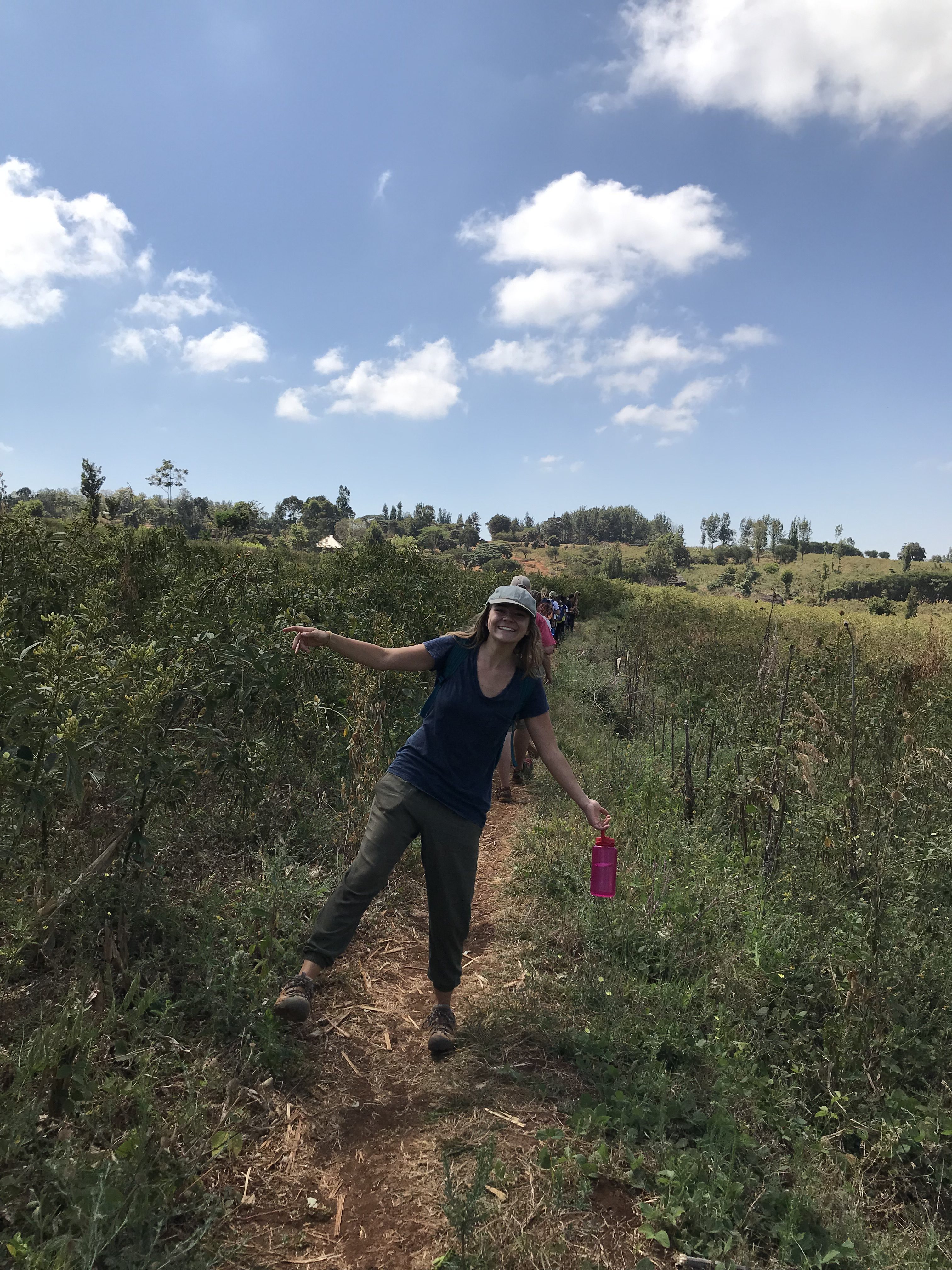
 Goats, sheep, and cows on the side of these paths
Goats, sheep, and cows on the side of these paths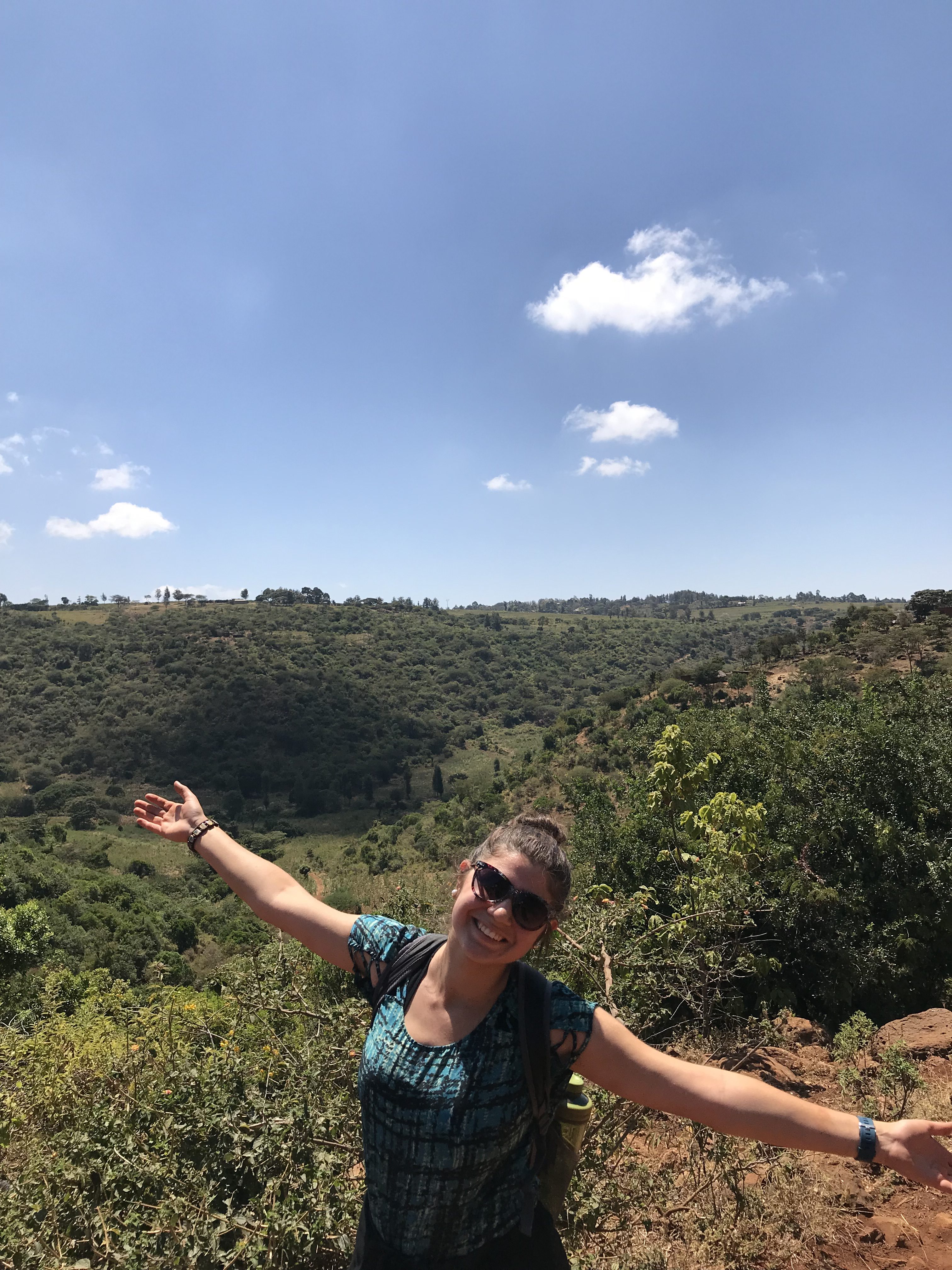 Made it to the top, I’m smiling but I’m also out of breath (2 hrs in… 1 hr to go!)
Made it to the top, I’m smiling but I’m also out of breath (2 hrs in… 1 hr to go!) A beautiful abandoned building at the top of the mountain
A beautiful abandoned building at the top of the mountain 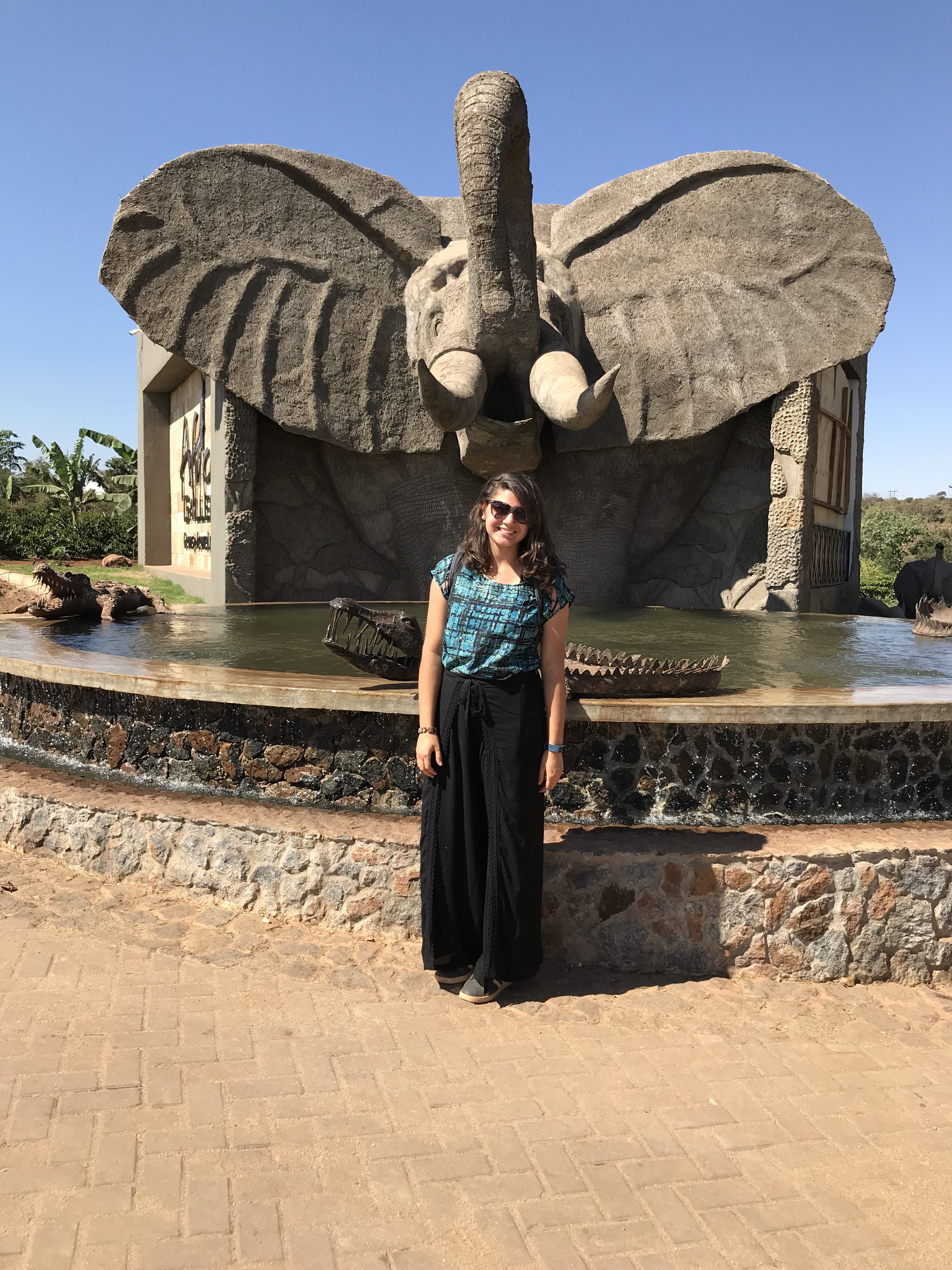 The African Galleria
The African Galleria 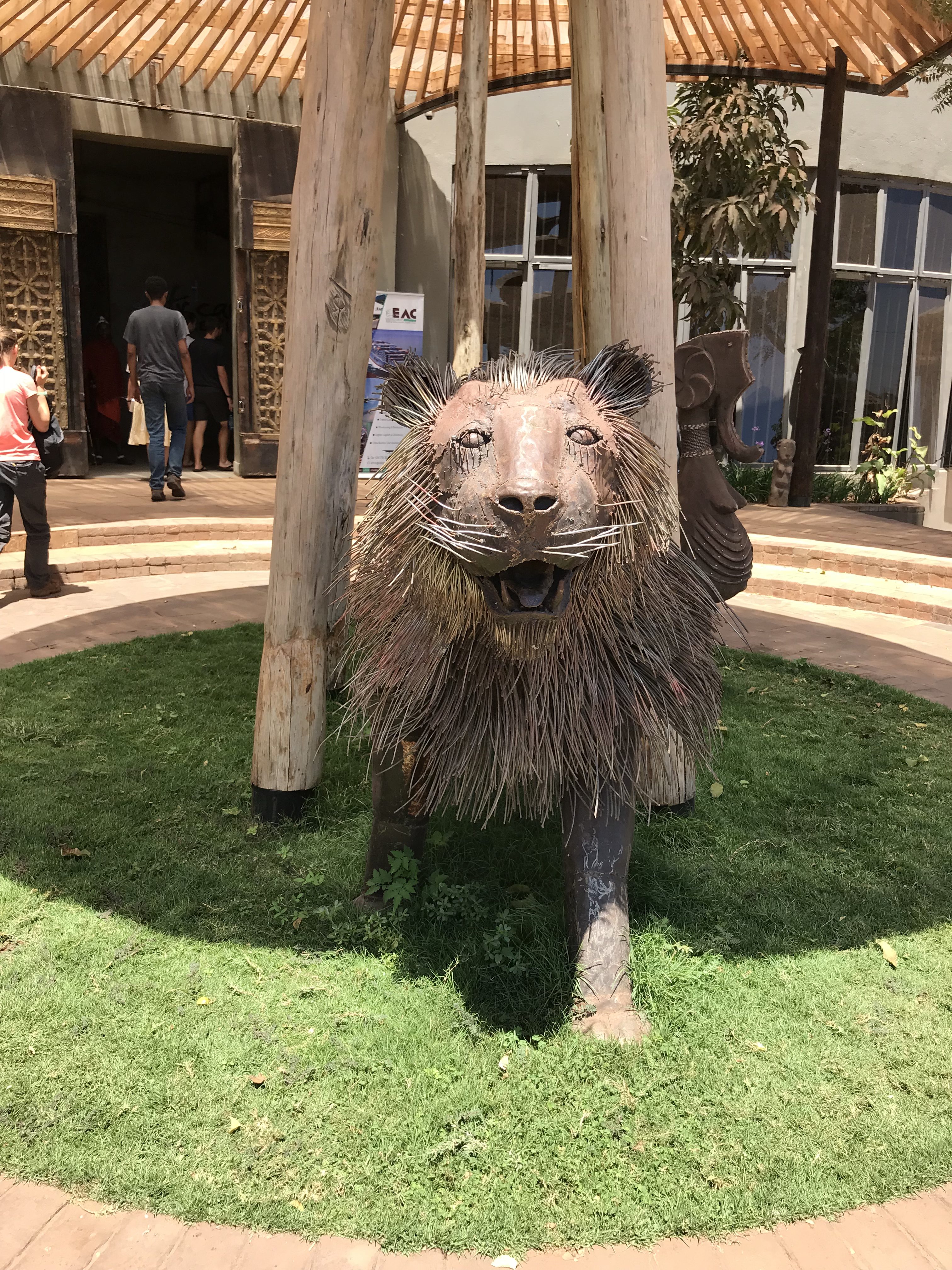
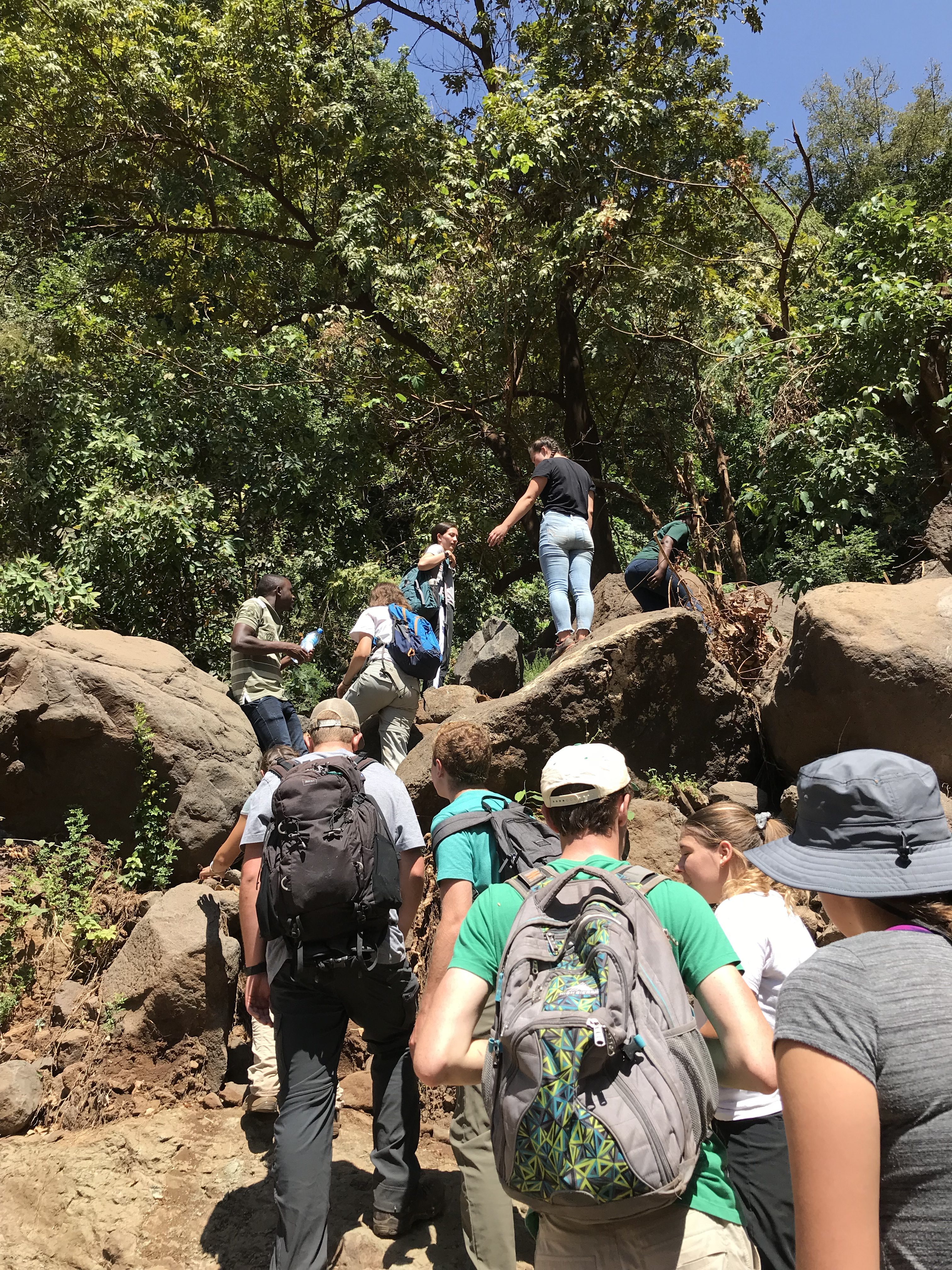 Hiking up to the top
Hiking up to the top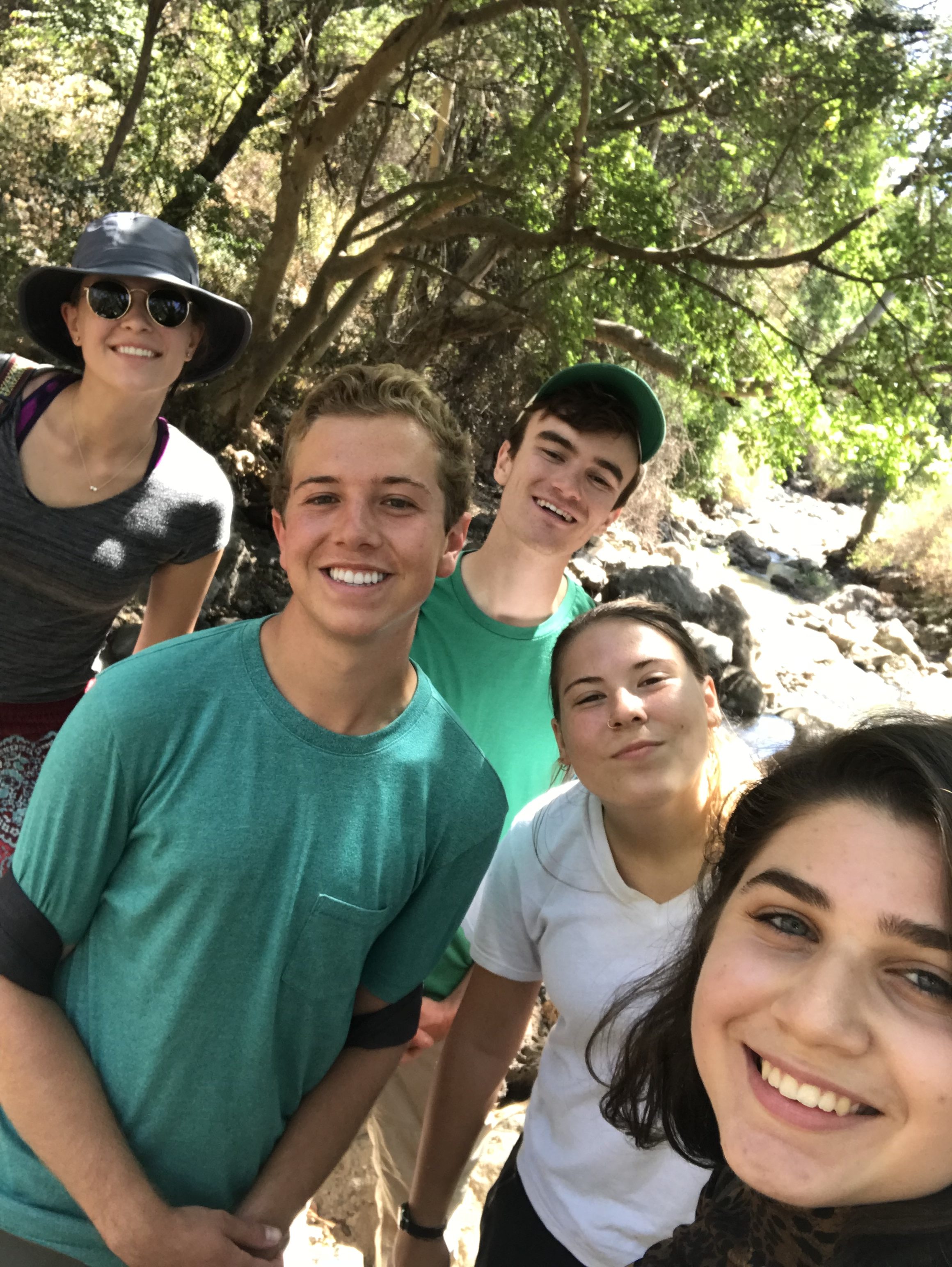 Looking sharper than the steep rocks we just hiked
Looking sharper than the steep rocks we just hiked Team work makes the dream work (also Carla looking great with her “I <3 Worcester “shirt- aka come to Holy Cross)
Team work makes the dream work (also Carla looking great with her “I <3 Worcester “shirt- aka come to Holy Cross)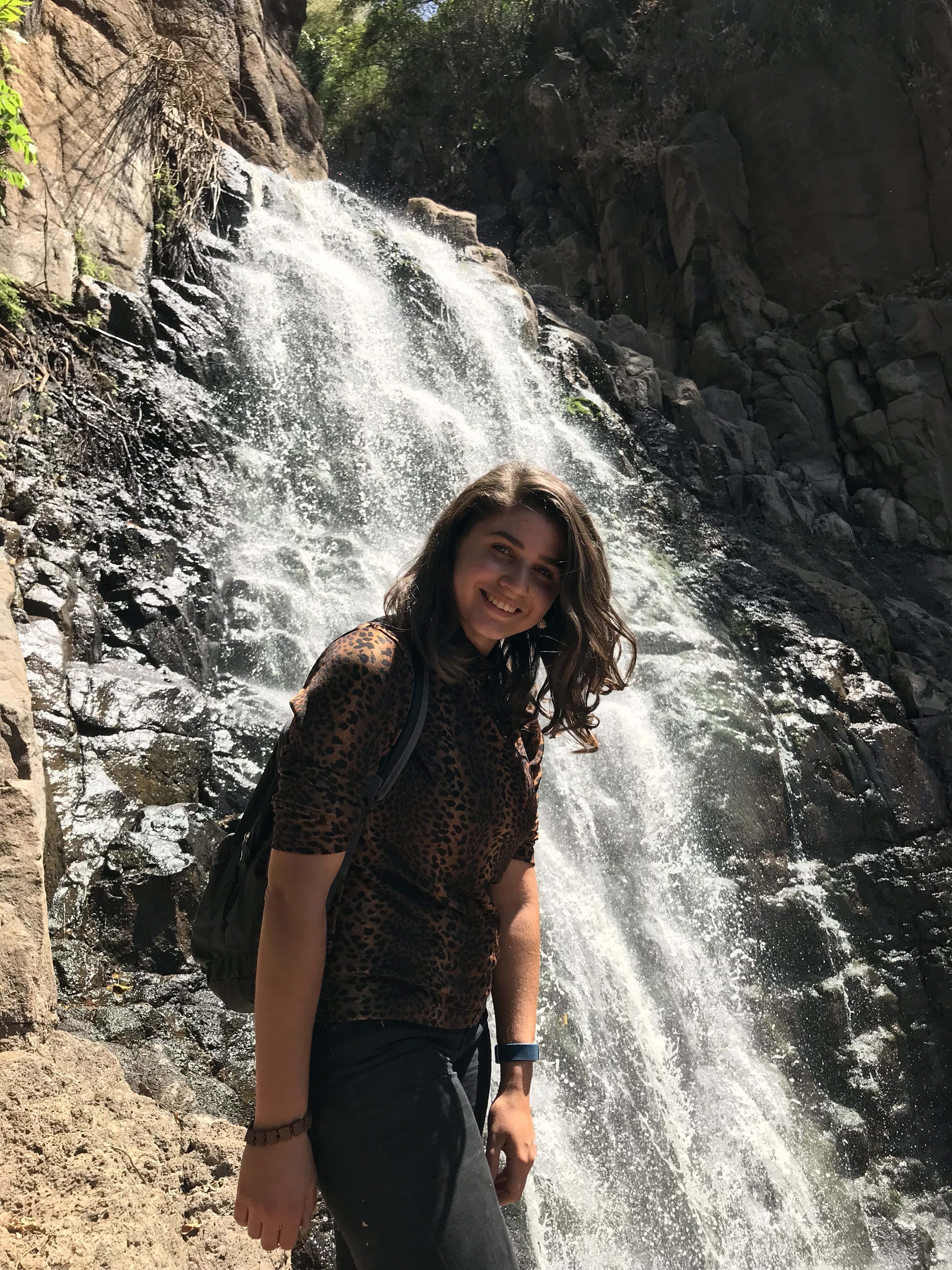 Beautiful views at every corner of that hike
Beautiful views at every corner of that hike  The whole group all in one piece at the top of the waterfalls
The whole group all in one piece at the top of the waterfalls  Our guides for the hike discussed the uses and farming strategies for the banana trees next to the waterfalls
Our guides for the hike discussed the uses and farming strategies for the banana trees next to the waterfalls 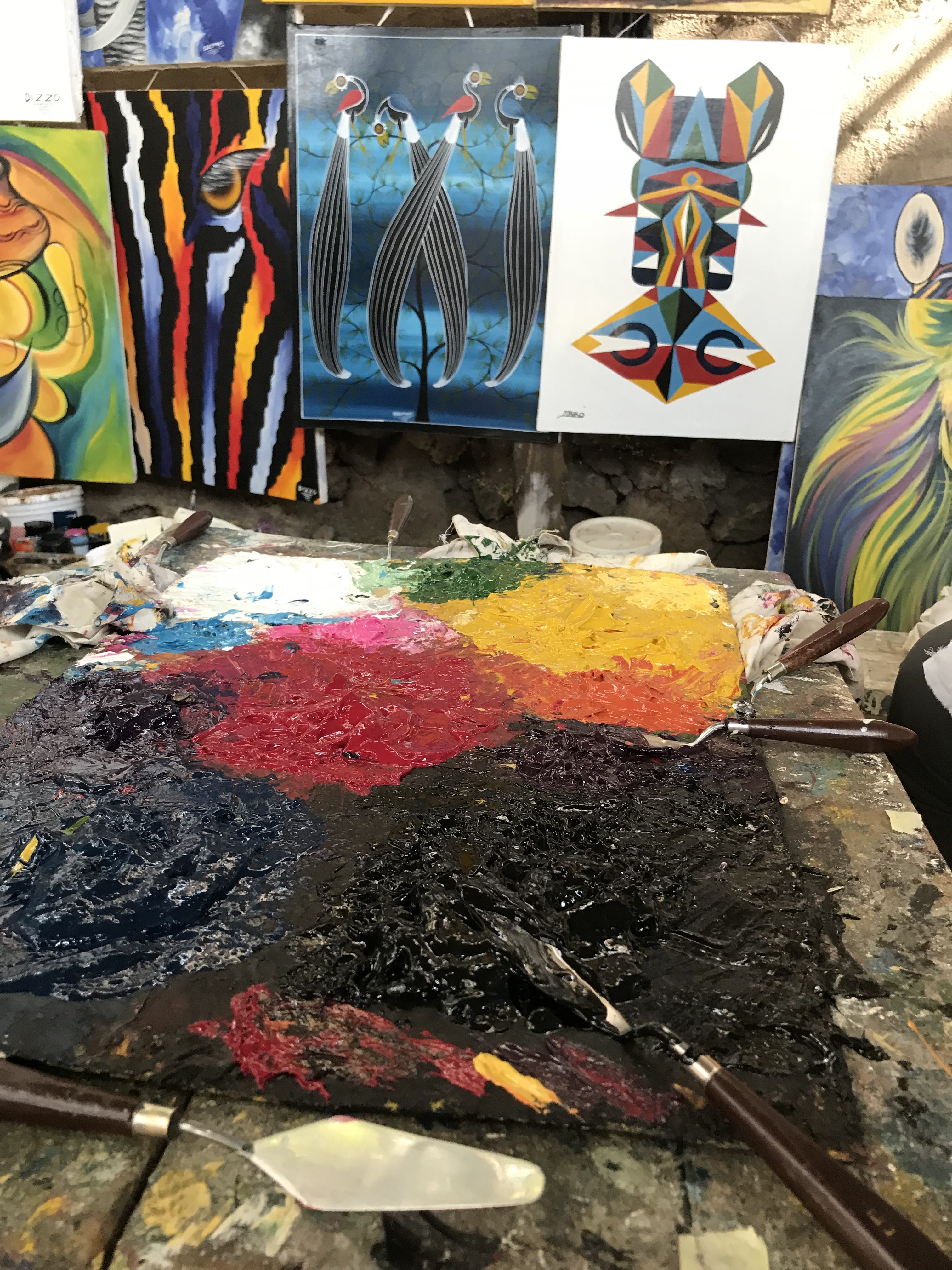 Our station for the knife painting workshop
Our station for the knife painting workshop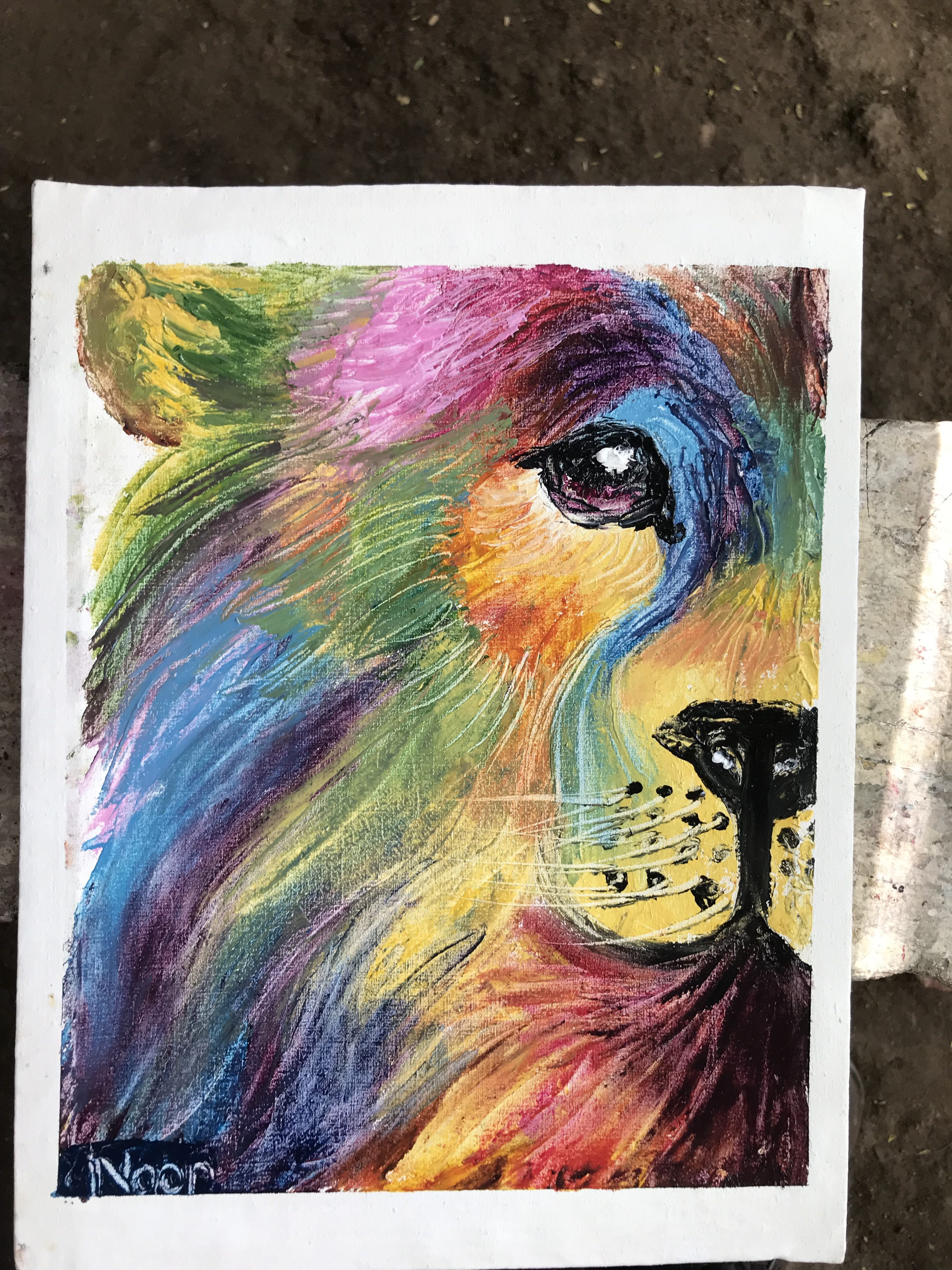 My knife painting of Simba!
My knife painting of Simba!